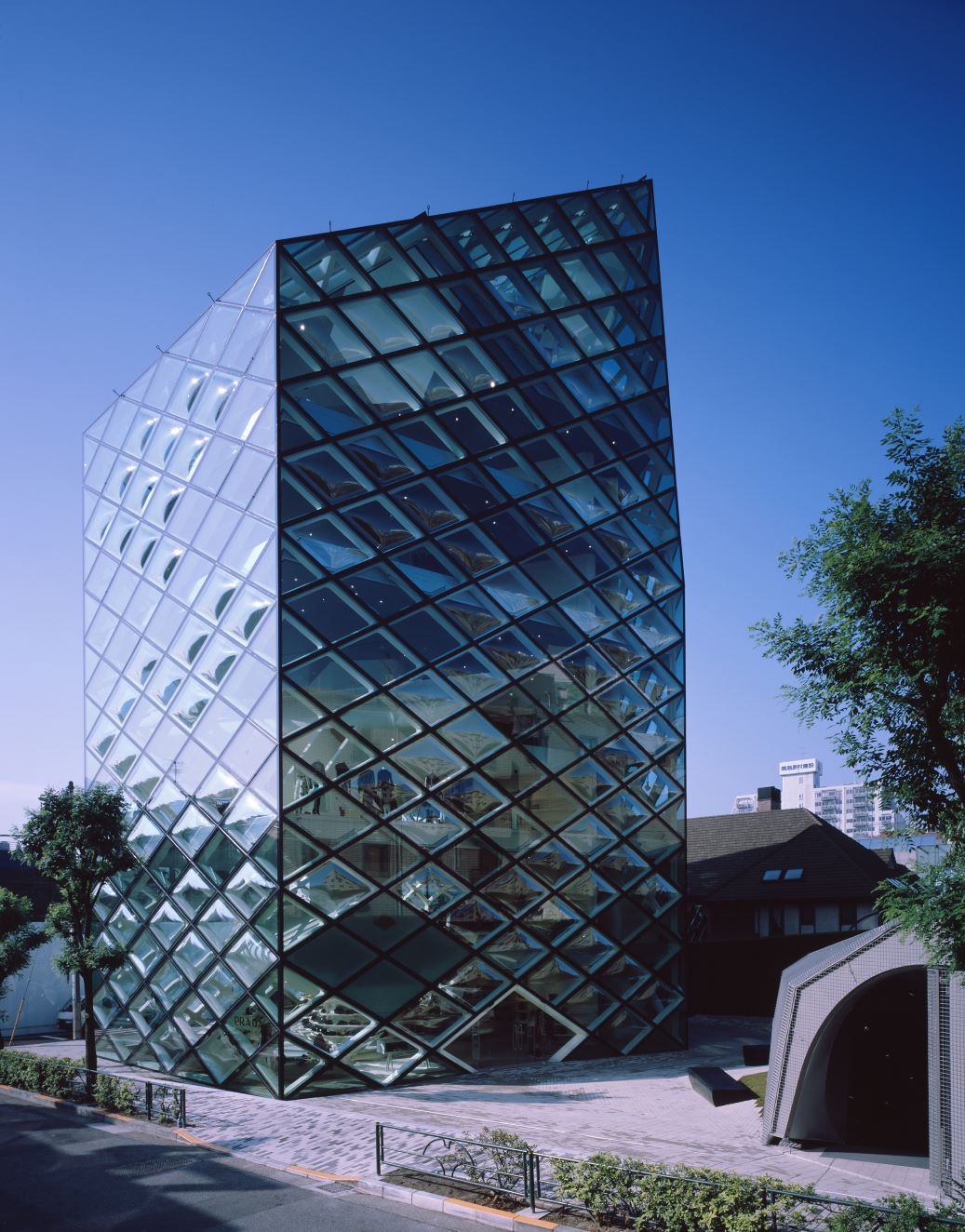
PRADA AOYAMA
- D2
- Omotesando
- D2
- Omotesando
LIZZIE FITCH / RYAN TRECARTIN: IT WAIVES BACK
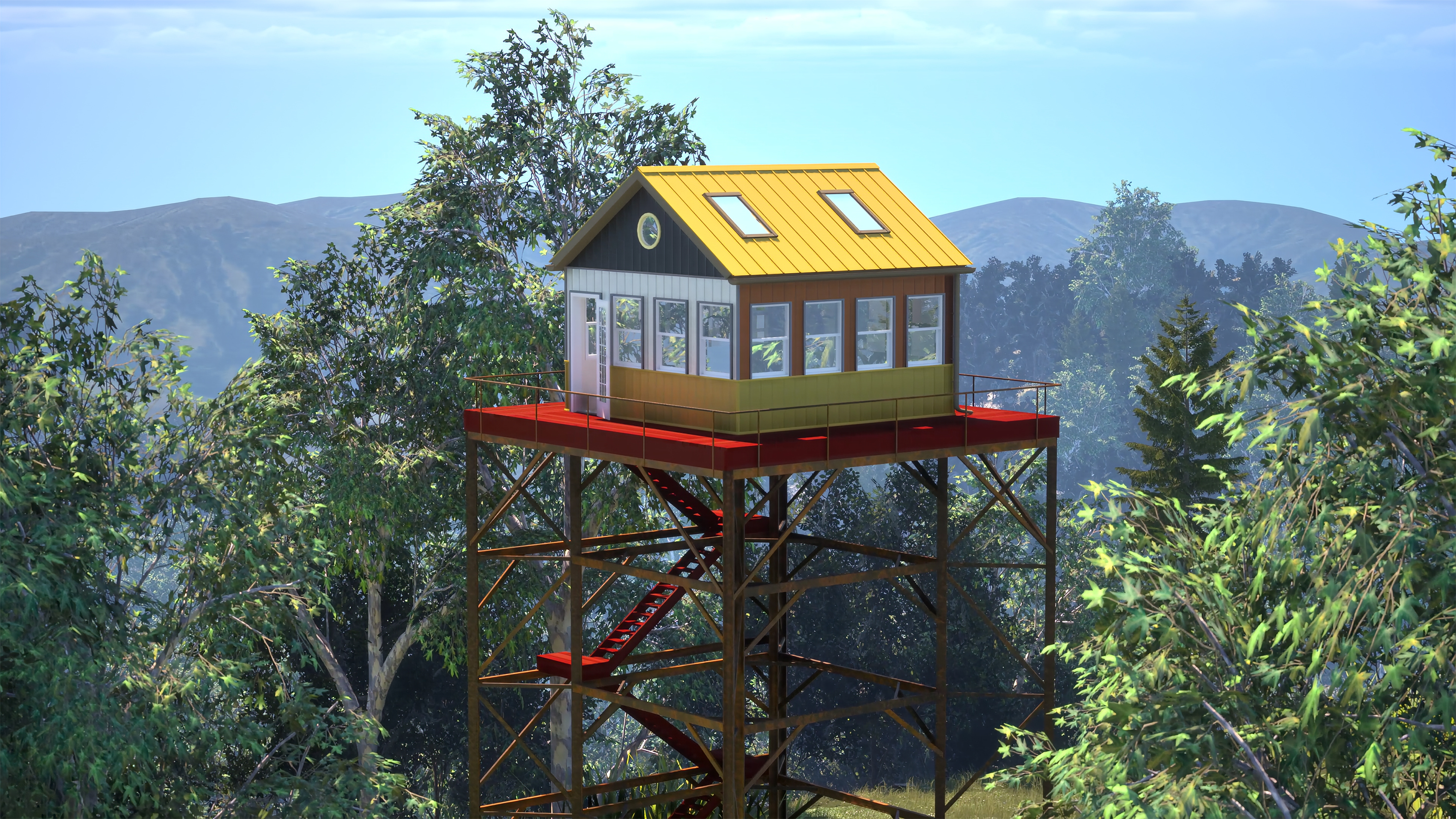
This exhibition is the first presentation of the American duo Lizzie Fitch / Ryan Trecartin in Asia. The installation, films, and free-standing sculptures on view are part of a larger body of work that began in 2016, when the artists moved their home and studio to rural Ohio. A key element of the artists’ practice is revisiting past works to explore how multiple truths can coexist simultaneously. To create the new work shown in Tokyo, the duo reviewed hundreds of hours of footage from the production of the film WhetherLine (2019), which was shot on a permanent set consisting of a massive flowing pool, moat, hobby barn, and 50-foot-tall forest watchtower that Fitch and her team built on their Ohio property. In addition to exploring concepts of territory and ownership and their impact on the development of the self, these works also feature Fitch/Trecartin’s signature “sculptural theater” installation: a hybrid environment consisting of a wooden structure and a dark, greenhouse-like space that embodies contrasting notions of interior and exterior, viewer and participant, and leisure and work.

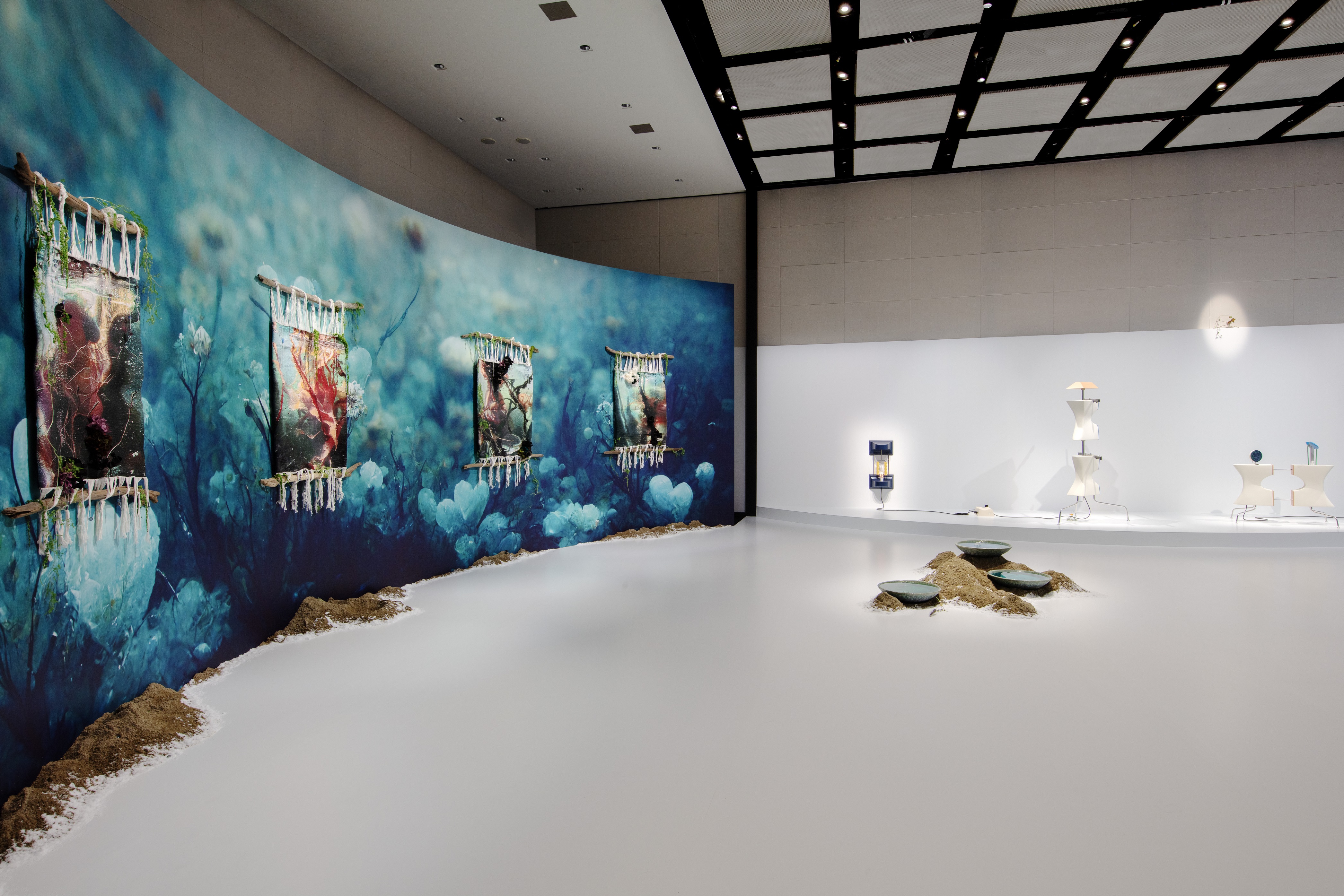
CHANEL NEXUS HALL
- B10
- Ginza
- B10
- Ginza
EVERYDAY ENCHANTMENT
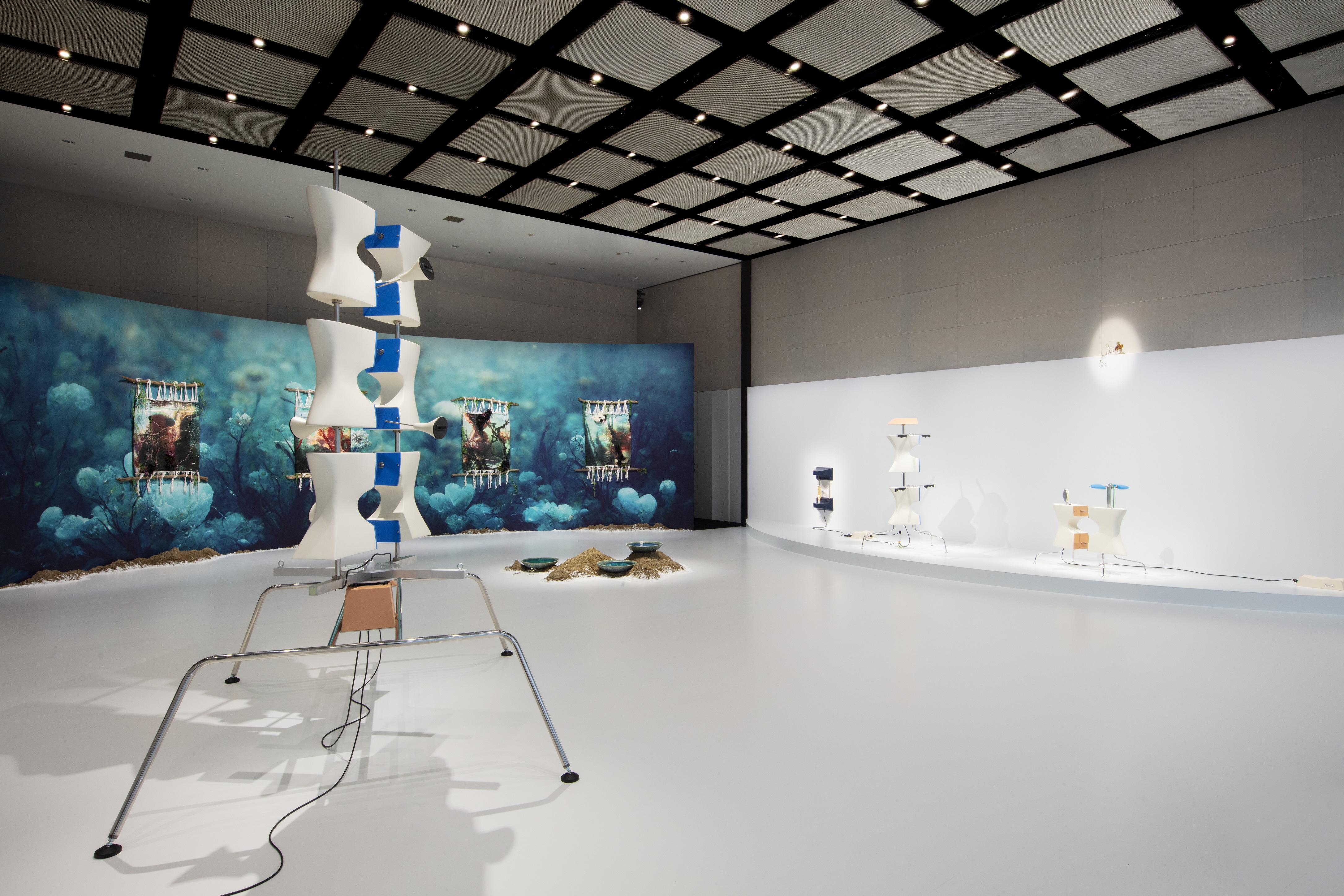
This is the first in a new series of exhibitions organized at Chanel Nexus Hall in collaboration with Hasegawa Lab, an incubator for the next generation of curatorial voices led by Yuko Hasegawa. Curated by Tetsumi Kayama and Finn Ryan of Hasegawa Lab, “Everyday Enchantment” invites visitors to rediscover the magic hidden in the everyday and explore the beauty found in the liminal zones between the human and the nonhuman, the organic and the synthetic. On view will be new works by Umico Niwa, Muku Kobayashi, and Bianca Bondi. Niwa’s sculptures, made using organic and foraged materials, allude to alternative identities unbridled by preconceived ideas of the body or gender; Kobayashi’s installations place everyday objects in unusual configurations informed by his background in information design and sculpture; and Bondi’s mystic tapestries depict the microscopic lives of moss and crystal.

Celebrating its 20th anniversary this year, Chanel Nexus Hall was established in 2004 as a venue dedicated to the spirit of Gabrielle Chanel, who was an impassioned patron of art, music, and fashion. The space is known for showcasing creativity in all its forms and pushing the boundaries of contemporary art through programming that seeks to reflect the reality of an endlessly diverse world at a pivotal moment of technological change. By engaging artists, curators, and practitioners, the venue fosters cross-cultural exchange and acts as a crucial platform for dialogue and artistic collaboration.
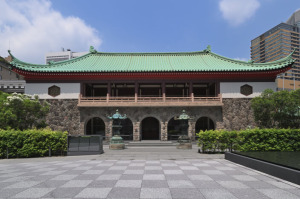
AWT FOCUS
- C1
- E1
- F1
- Toranomon
- C1
- E1
- F1
- Toranomon
WORLDS IN BALANCE: ART IN JAPAN FROM THE POSTWAR TO THE PRESENT CURATED BY KENJIRO HOSAKA
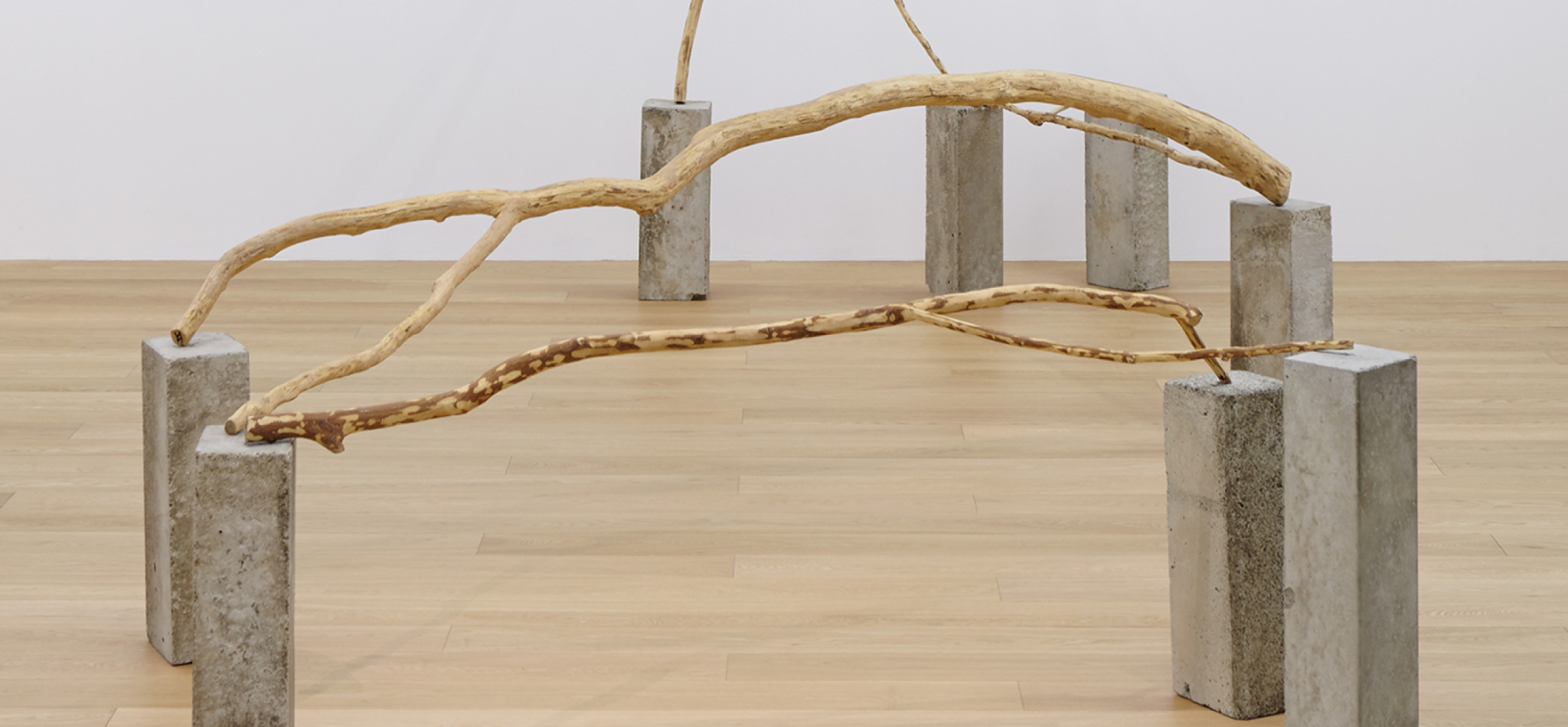
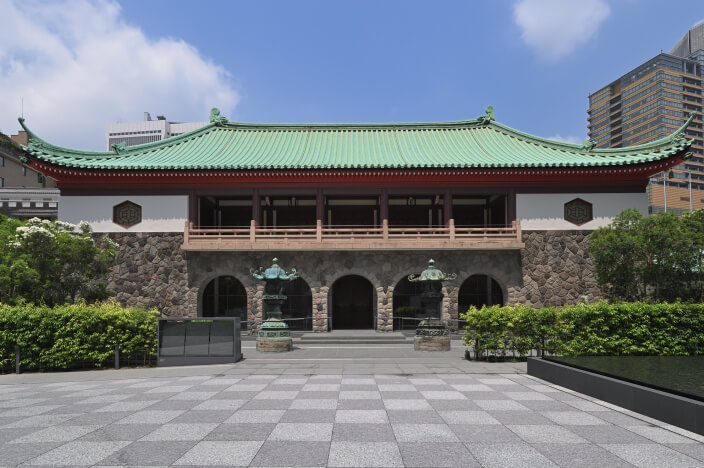
Located on the grounds of The Okura Tokyo, the Okura Museum of Art is Japan’s first private art museum. The museum was established in 1917 by Kihachiro Okura as a permanent home for his collection of premodern Japanese and East Asian art, which includes three National Treasures and 12 Important Cultural Properties. Designed by early-modern architect Chuta Ito, the current building was constructed in 1927 and has since been expanded and renovated.
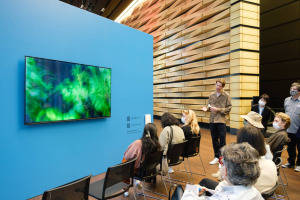
AWT VIDEO
- B1
- F2
- Otemachi
- B1
- F2
- Otemachi
BETWEEN CONTRAIL AND MOUNTAINS CURATED BY SOHRAB MOHEBBI
Screened at a special pavilion in the lobby of SMBC East Tower in the Marunouchi district, AWT Video presents a selection of single-channel moving image works by Japanese and international artists drawn from Art Week Tokyo’s participating galleries. Curated by Sohrab Mohebbi, the director of SculptureCenter in New York, this year’s program, “Between Contrail and Mountains,” features 14 works by 13 artists.
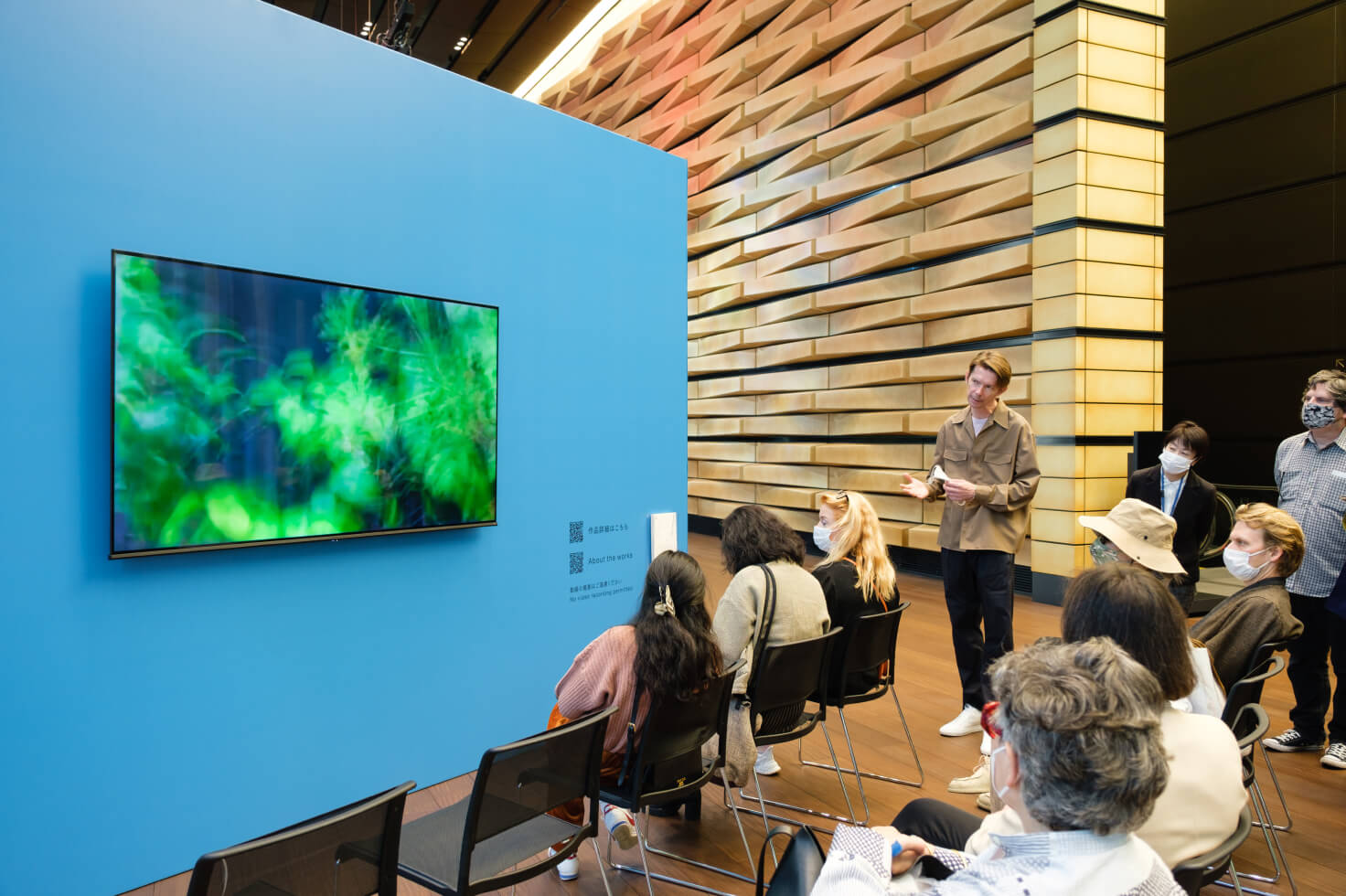
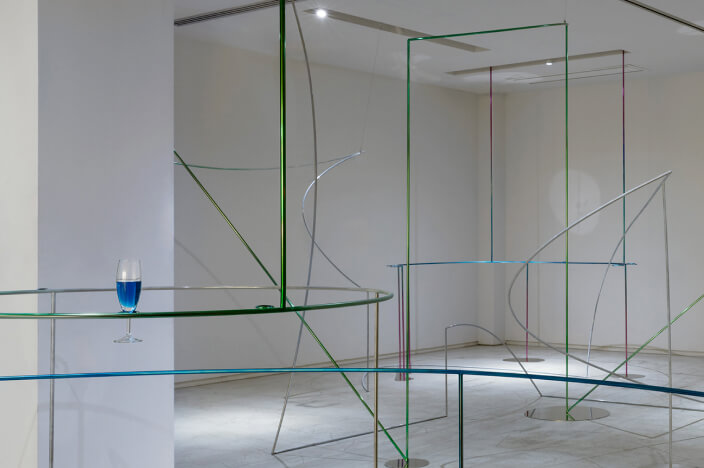
AWT BAR
- D1
- D9
- E3
- Omotesando
- D1
- D9
- E3
- Omotesando

Open from 10am to midnight during the four days of Art Week Tokyo, the AWT Bar provides the city’s art community a convivial gathering place in the heart of trendy Minami-Aoyama. Art Week Tokyo commissions an emerging architect to design the bar space, selects one of the city’s top young chefs to produce new food creations for the menu, and invites featured artists to conceive original cocktails. Engaging all the senses, these commissions further deepen Art Week Tokyo’s synergy with other creative fields as well as Tokyo’s globally celebrated hospitality culture.
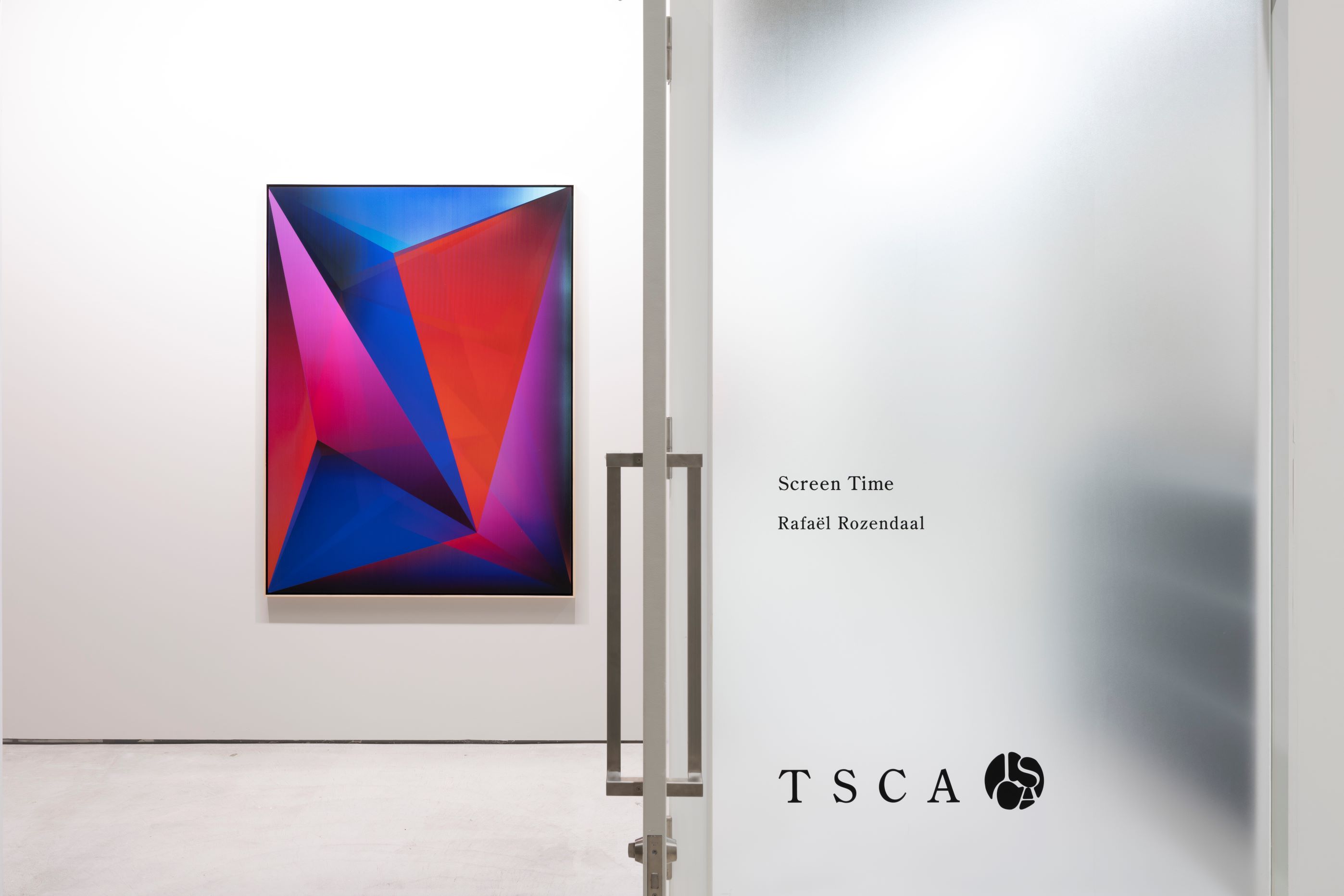
TAKURO SOMEYA CONTEMPORARY ART
- C10
- Tennozu
- C10
- Tennozu
ENRICO ISAMU OYAMA: ABSTRACTIONS/EXTRACTIONS
Based between New York and Tokyo since 2020, Enrico Isamu Oyama grounds his versatile practice in an abstract motif he conceptualized called the “Quick Turn Structure,” which consists of spontaneously elaborated patterns of interlocking black and white shapes. Oyama’s signature style is partly inspired by the aerosol writing found on the streets of New York in the 1970s and ’80s, and he has presented his works in a range of formats and settings, from canvases in galleries to walls and murals in urban spaces, including the six columns in front of Tower 49 in Midtown Manhattan.

Takuro Someya Contemporary Art is an art gallery in Tokyo showing research and work by Japanese and international contemporary artists across a variety of genres and mediums. TSCA participates in international art fairs including Art Basel Miami Beach, Art Stage Singapore, and more. TSCA has partnerships with 12 artists and groups, including Kenjiro Okazaki, Enrico Isamu Oyama, Rafaël Rozendaal, Ryoichi Kurokawa, Mai Yamashita + Naoto Kobayashi, and Mayumi Hosokura.

XYZ COLLECTIVE
- A6
- Sugamo
- A6
- Sugamo
B. INGRID OLSON
Born in 1987 in Denver and based in Chicago, B. Ingrid Olson engages with the reciprocities between photography, sculpture, performance, and architecture—with each gesture staged as a manifold approach to materiality, gender, plurality, and power. The artist has an intuitive, studio-based practice. Using apertures, thresholds, reflections, transparency, opacity, light, and shadow as layered devices, Olson’s work collapses the notions of image, support, and frame. While her photographic images frequently capture fragmentary glimpses of her own body, abruptly cropped and abstracted, her sculptural pieces might evoke the presence of a face, chest, waist, or knee without explicitly depicting these body parts. Whether captured with a camera, carved with a machine, cast, built, or found, Olson’s work evidences the movement, change, thought, and habitation that takes place within the parameters of her studio. The results are ultimately sited incisively within the history and infrastructure of a given exhibition space, testing the capacities of the artist’s and viewers’ bodies and the structuring of the space around them. This solo exhibition will showcase a new work by the artist.

XYZ collective / The Steak House Dos Koi is an artist-run gallery that was established in 2011 and moved to its current location in Tokyo’s Sugamo district in 2016. The gallery organizes exhibitions both in Japan and abroad. The gallery has participated in NADA Miami since 2013 and has also participated in fairs such as Paris Internationale and June in Basel. Recent shows include solo exhibitions by Yuka Hasegawa (2021) and Maki Katayama (2021) and the group exhibition “Veit Laurent Kurz Curation” (2021).
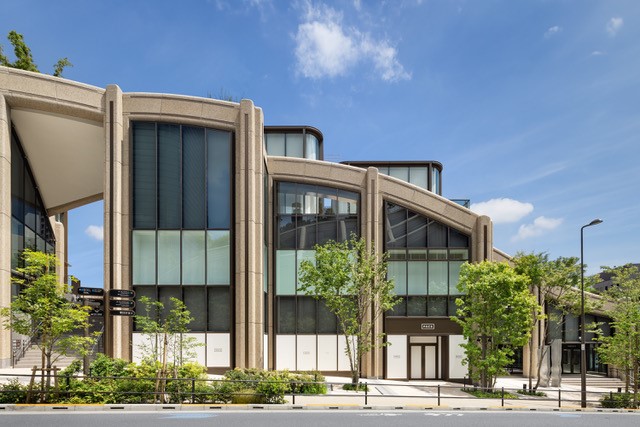
PACE
- C14
- Azabudai
- C14
- Azabudai
ARLENE SHECHET
Born in New York City in 1951 and now based in upstate New York, Arlene Shechet is widely known for her genre-defying ceramics and her hybrid sculptures that merge metal, clay, and wood into distinctive forms that are simultaneously architectural, organic, and mechanical. Uniting seemingly disparate shapes, colors, and materials, her works—while abstract—are imbued with psychological and emotional resonances to invite reflection from the viewer.
Marking Shechet’s first-ever solo exhibition in Japan, this show will bring together new and recent works that ride the edge between stillness and motion, much like that of the Japanese art and material culture that has long inspired her. Enactments of tilting, contorting, bending, and melting recur throughout her sculptures, which, unearthing the expressive potential of material and form, force us to sit with—and move around—their contradictions.

Founded in 1960 by Arne Glimcher and now led by his son Marc, Pace is a leading international art gallery representing some of the most significant artists and estates of the 20th and 21st centuries, including Alexander Calder, Jean Dubuffet, Lee Ufan, Sol LeWitt, and David Hockney. Following locations in New York, Los Angeles, London, Geneva, Seoul, and Hong Kong, Pace’s new Tokyo gallery is its eighth permanent space globally. Located in the Azabudai Hills complex in a building designed by Thomas Heatherwick, Pace Tokyo spans three floors and approximately 510 square meters, with interiors designed by Japanese architect Sou Fujimoto.
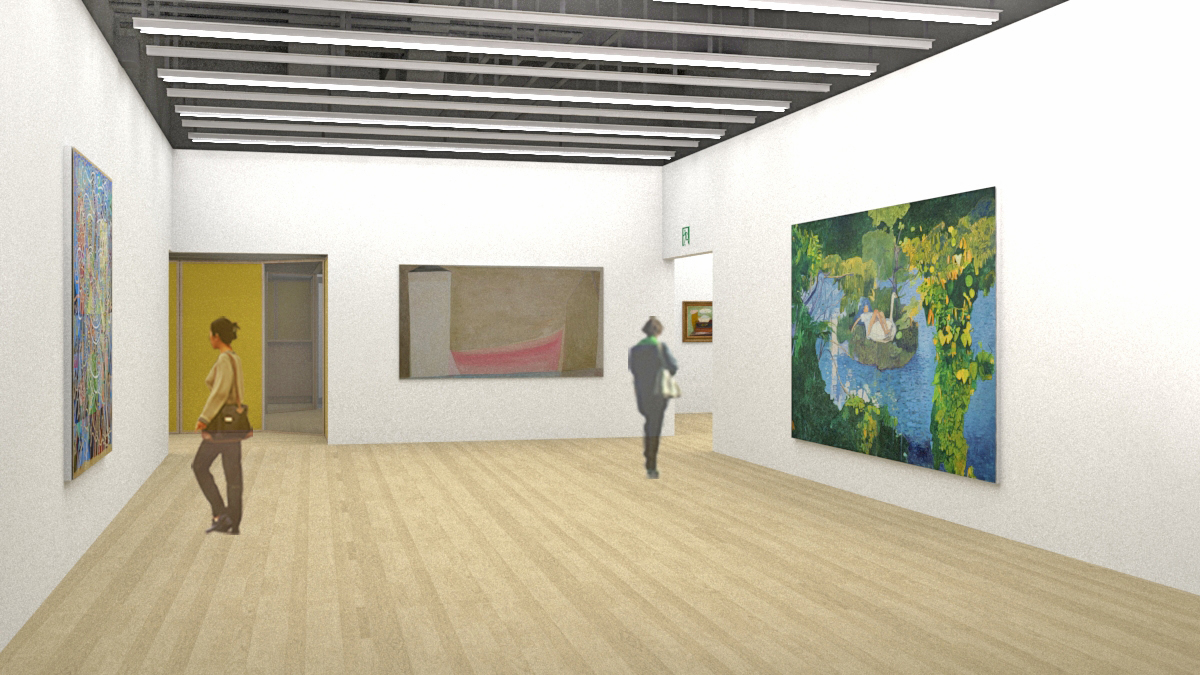
TOMIO KOYAMA GALLERY
- B9
- Kyobashi
- B9
- Kyobashi
HIROSHI SUGITO
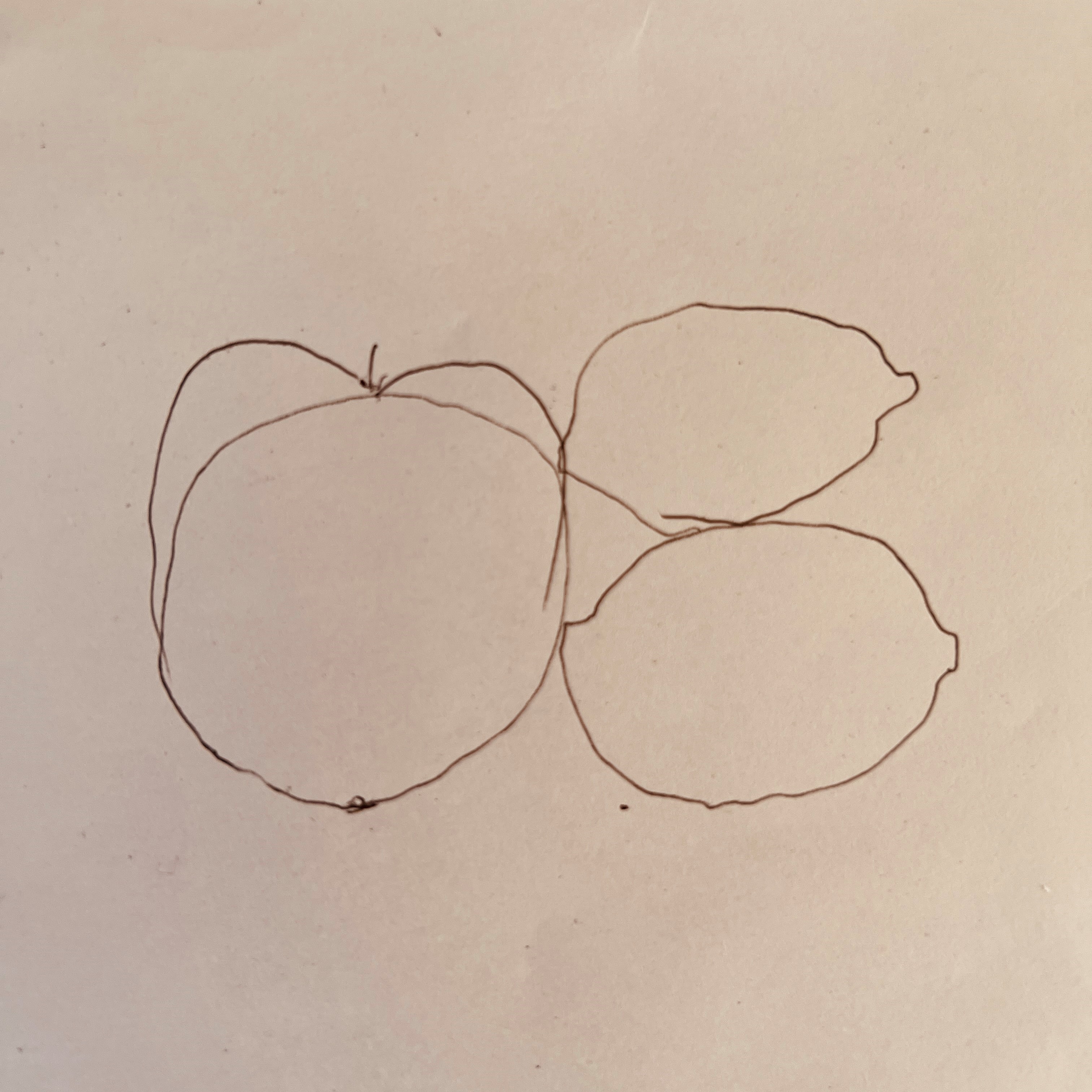
Born in Nagoya in 1970, Japanese artist Hiroshi Sugito studied at the Aichi Prefectural University of the Arts. Despite having trained in traditional nihonga Japanese painting, Sugito’s chosen subject matter is more contemporary and more dreamlike. His sparse compositions depict landscapes devoid of people with wide expanses of negative space, executed with a distinctively light touch and muted colors that imbue the paintings with an airy, luminous atmosphere. This exhibition of new works, alongside a selection of pieces from the mid-1990s revolving around the motifs of apples and lemons, will inaugurate Tomio Koyama Gallery’s new space in Kyobashi.

Tomio Koyama Gallery was founded in Tokyo’s Sagacho district in 1996 and has since established itself as a cornerstone of Japan’s contemporary art scene. Dedicated to introducing new perspectives to the art market, the gallery represents a diverse, multigenerational roster of Japanese and international artists, including Kishio Suga, Mika Ninagawa, Hiroshi Sugito, and Richard Tuttle, and also features contemporary ceramics in its program. From the start Tomio Koyama Gallery has maintained an active presence at international art fairs. The gallery moved to its current Roppongi location in 2016 and added another space in Tennozu in 2022.
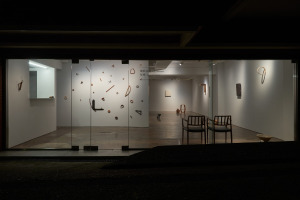
GALLERY 38
- D6
- Harajuku
- D6
- Harajuku
MIYU HOSOI
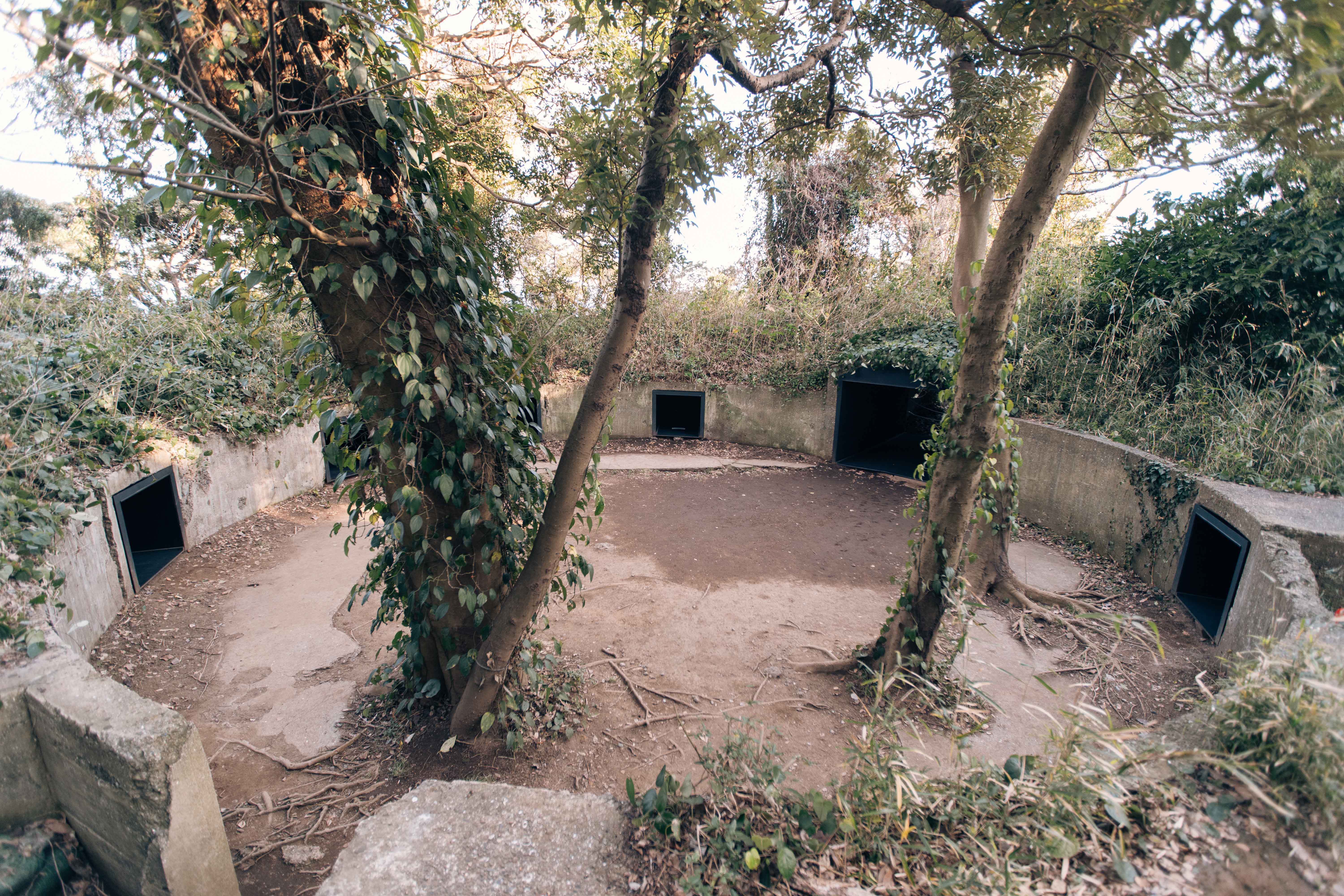
Gallery 38 is pleased to present Miyu Hosoi’s first solo exhibition at the gallery. Hosoi makes multimedia installations, stage productions, and soundscapes that treat sound as a repository of memories associated with places and people. In 2024 she participated in the stage production Tangent, directed by artist Shiro Takatani of the pioneering new media group Dumb Type, and she has previously presented work at institutions like the Nagano Prefectural Museum of Art, Aichi Prefectural Art Theater, and NTT InterCommunication Center (ICC), as well as in settings like Haneda Airport and Hibiya Park. Hosoi will present a number of sound installations and other works in this exhibition.
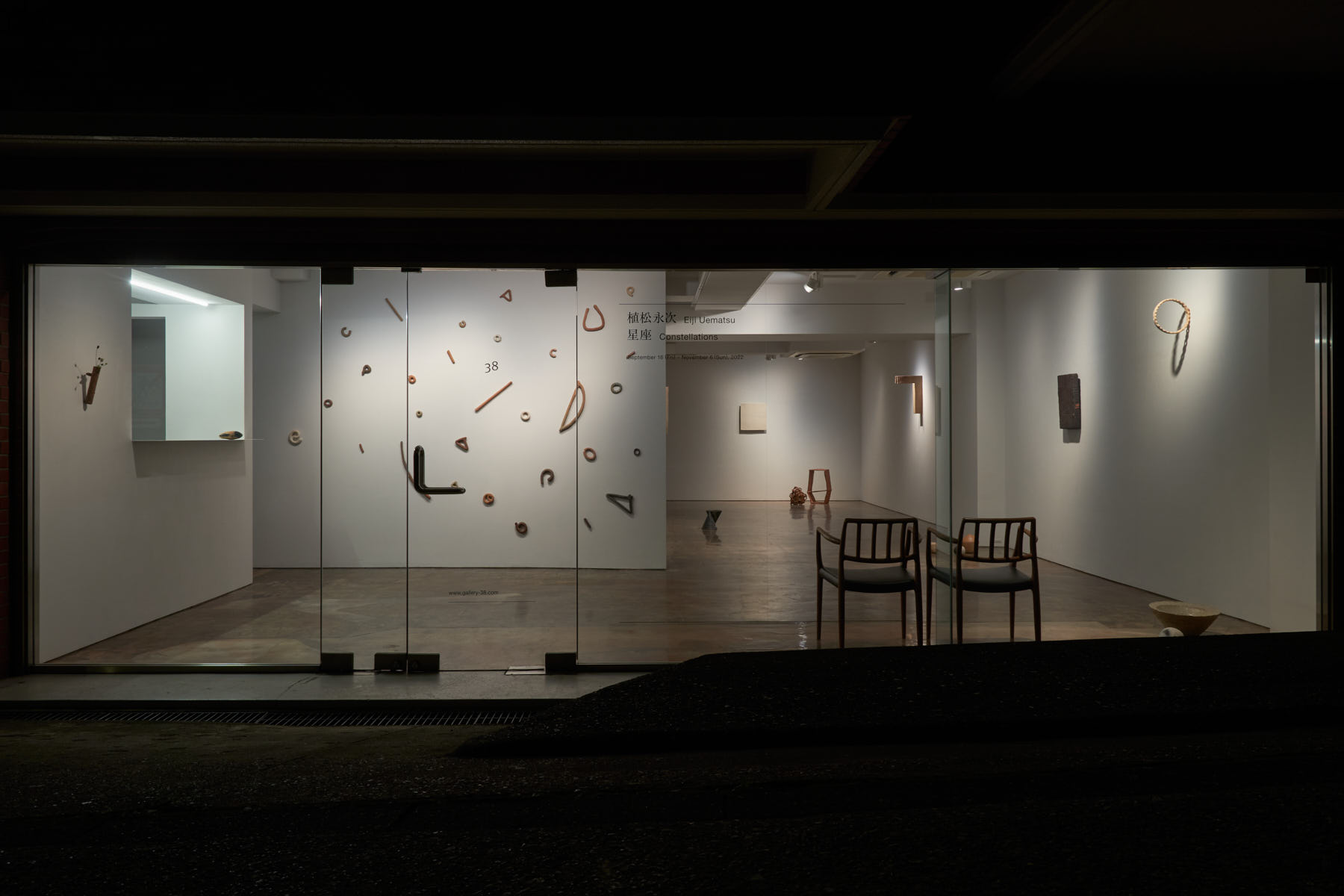
Gallery 38 was founded in Tokyo in 2016. Since its inaugural exhibition of works by ceramic artist Eiji Uematsu, the gallery has pursued dual aims: to introduce emerging and established international artists—including Romain Cadilhon, Hartmut Landauer, Oliver Marsden, Christiane Pooley, and Stephanie Quayle—to Japan and to discover and promote emerging and historically significant Japanese artists abroad.
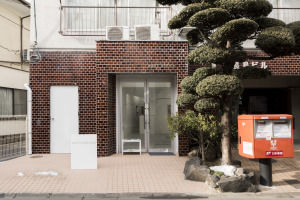
WAITINGROOM
- A3
- Edogawabashi
- A3
- Edogawabashi
YUKI ONODERA
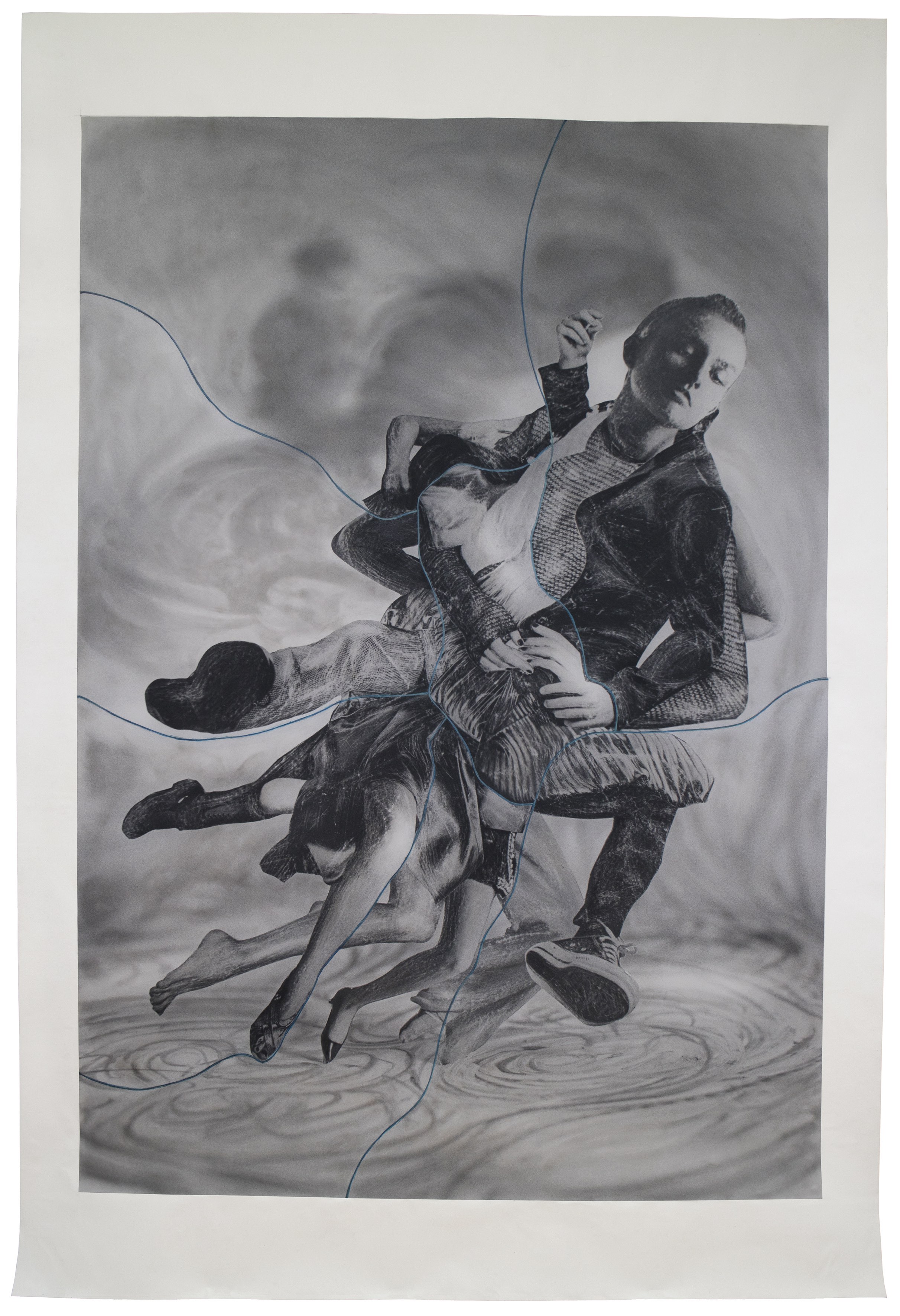
Born in Tokyo in 1962, Yuki Onodera has been based in Paris since 1993. She is known for her experimental approach to photography, which includes putting marbles in her camera to disperse the light and create eerie, floating white spheres. The narrative elements of her practice, meanwhile, are often inspired by historical incidents and legends. Measuring over two meters long, her mixed-media silver halide photographs, which she prints herself before applying oil paint onto them, bear the imprint of her own hands, overturning the notion of photography as a mechanical process. This is Onodera’s first solo exhibition at waitingroom.
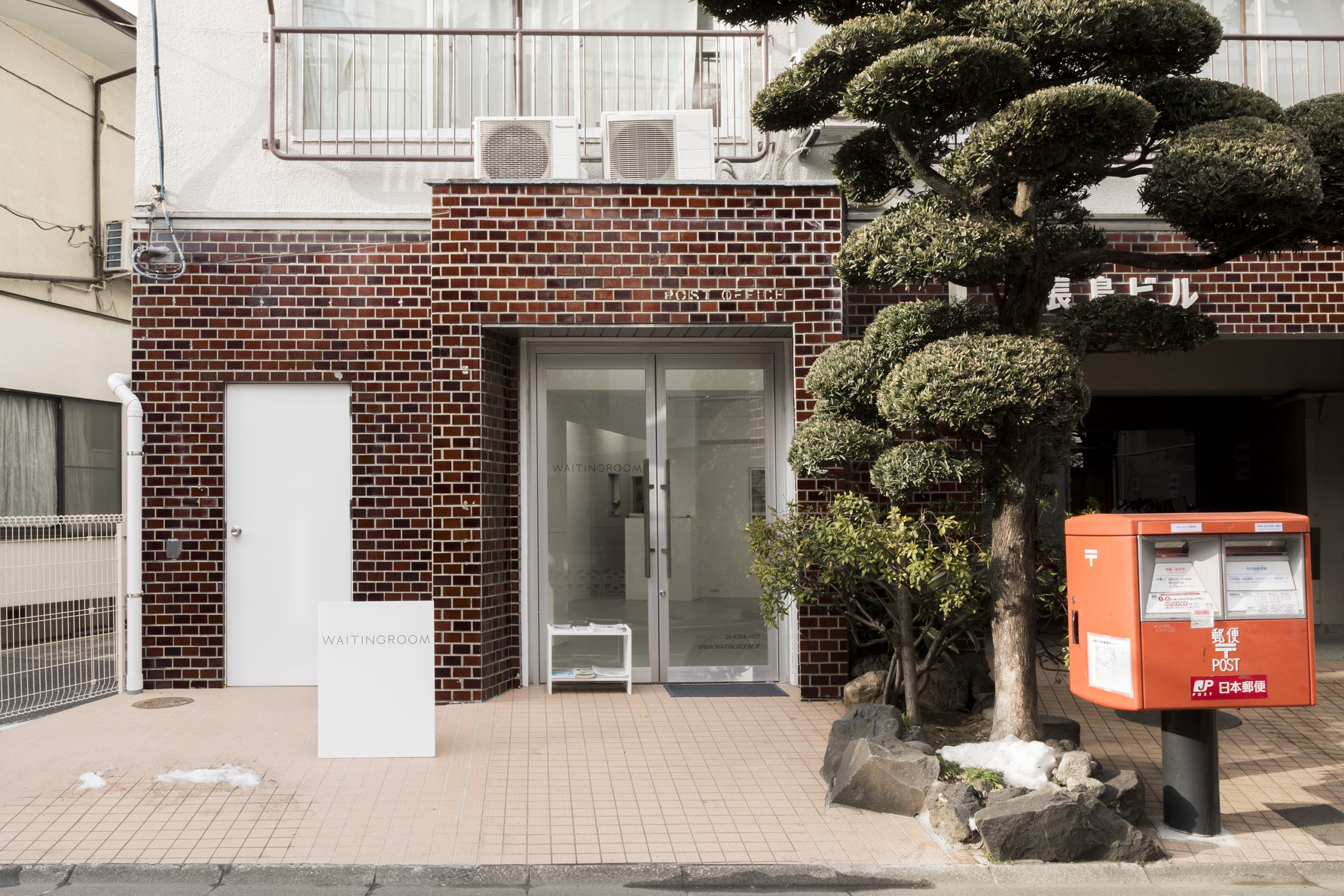
Waitingroom was founded in Tokyo in 2010 with a mission to promote and support cutting-edge contemporary art in various mediums. The gallery works with young and emerging artists who have distinct perspectives on the world and explore new and diverse modes of expression. The program focuses on the role of human beings in postindustrial society, encompassing topics ranging from social engagement to our relationship with nature, from cultural heritage to the dreams and fantasies that help us keep faith in the world. Reflecting the appeal of these themes, Waitingroom’s artists frequently exhibit across Japan as well as in international galleries, museums, biennials, triennials, and other venues. Beyond exhibitions, Waitingroom supports artistic creation by organizing lectures and workshops that stimulate discourse. The gallery aims to inspire the world by building positive relationships between artists and audiences.
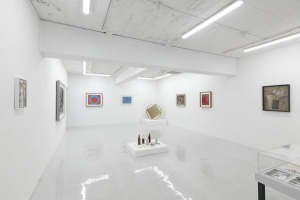
TOKYO GALLERY + BTAP
- B12
- Ginza
- B12
- Ginza
NANKOKU HIDAI
Tokyo Gallery + BTAP is pleased to present an exhibition focused on the work of Japanese avant-garde calligrapher Nankoku Hidai during the 1950s and ’60s, tracing the impact he had not only on the world of calligraphy but also postwar Japanese art in general. Born in 1912 in Kamakura to parents who were both calligraphers, Hidai easily absorbed the principles of classical calligraphy as a young man before turning his back on its literary nature, advocating instead for what he called the “spirit line,” a more abstract and figurative idiom that some have called “unreadable.” Hidai also defied convention in his choice of materials: For his support he used canvas, board, and fiber board instead of paper, and he worked in oil and lacquer instead of ink, among other innovations. While Hidai’s work is in the collections of museums like the Museum of Modern Art in New York City, his influence on the global art scene remains underappreciated. He lectured widely on calligraphy, held solo exhibitions in major cities in the United States starting in the 1960s, and collaborated with K.R.H. Sonderborg, Pierre Alechinsky, and Walasse Ting in New York in 1964.
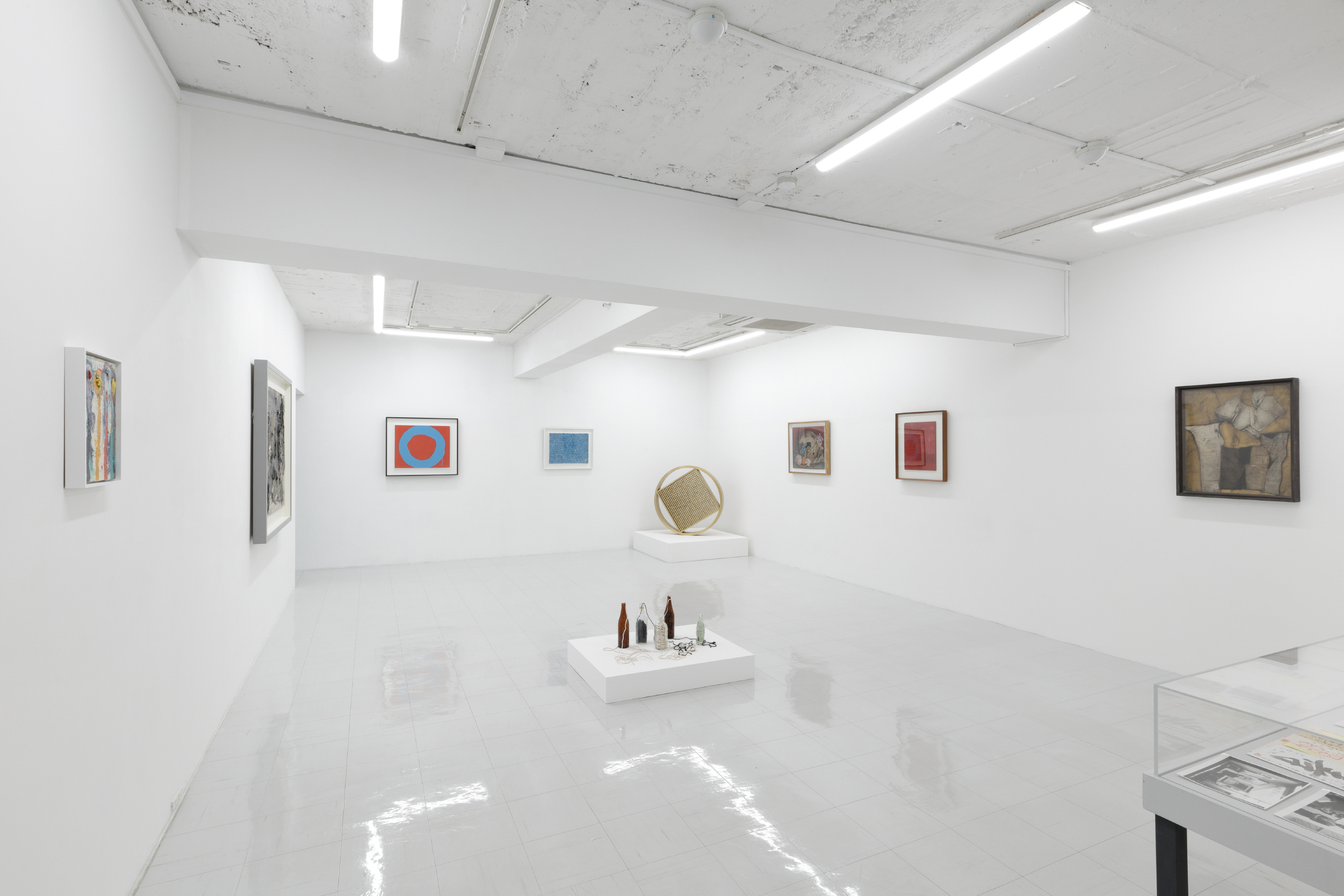
Tokyo Gallery was founded in 1950 as the first contemporary art gallery in Tokyo. In 2002 the gallery opened a new space, Beijing Tokyo Art Projects, in Beijing’s 798 Art District, and it now operates as Tokyo Gallery + BTAP. Over the course of its history the gallery has introduced Western avant-garde artists such as Lucio Fontana, Friedensreich Hundertwasser, Yves Klein, and Jackson Pollock to Japan. It has also supported experimental projects by some of Japan’s most important artists, including Taro Okamoto, Kazuo Shiraga, and Jiro Takamatsu as well as key figures associated with Mono-ha like Lee Ufan and Kishio Suga. In the 1970s the gallery began working with Korean artists, such as Kim Whanki and Park Seo-Bo, and in the late 1980s it started exhibiting then-unknown Chinese artists, including Cai Guo-Qiang and Xu Bing. Carrying this spirit forward, Tokyo Gallery + BTAP continues the mission of discovering and promoting both established and rising artists while regularly participating in international art fairs and working closely with museums and biennale exhibitions.
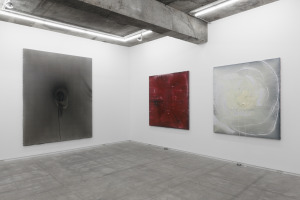
TALION GALLERY
- A4
- Mejiro
- A4
- Mejiro
EUSKE OIWA AND TAKEHIRO IIKAWA: THE BLUE SKY, THE COUNT OF TEN
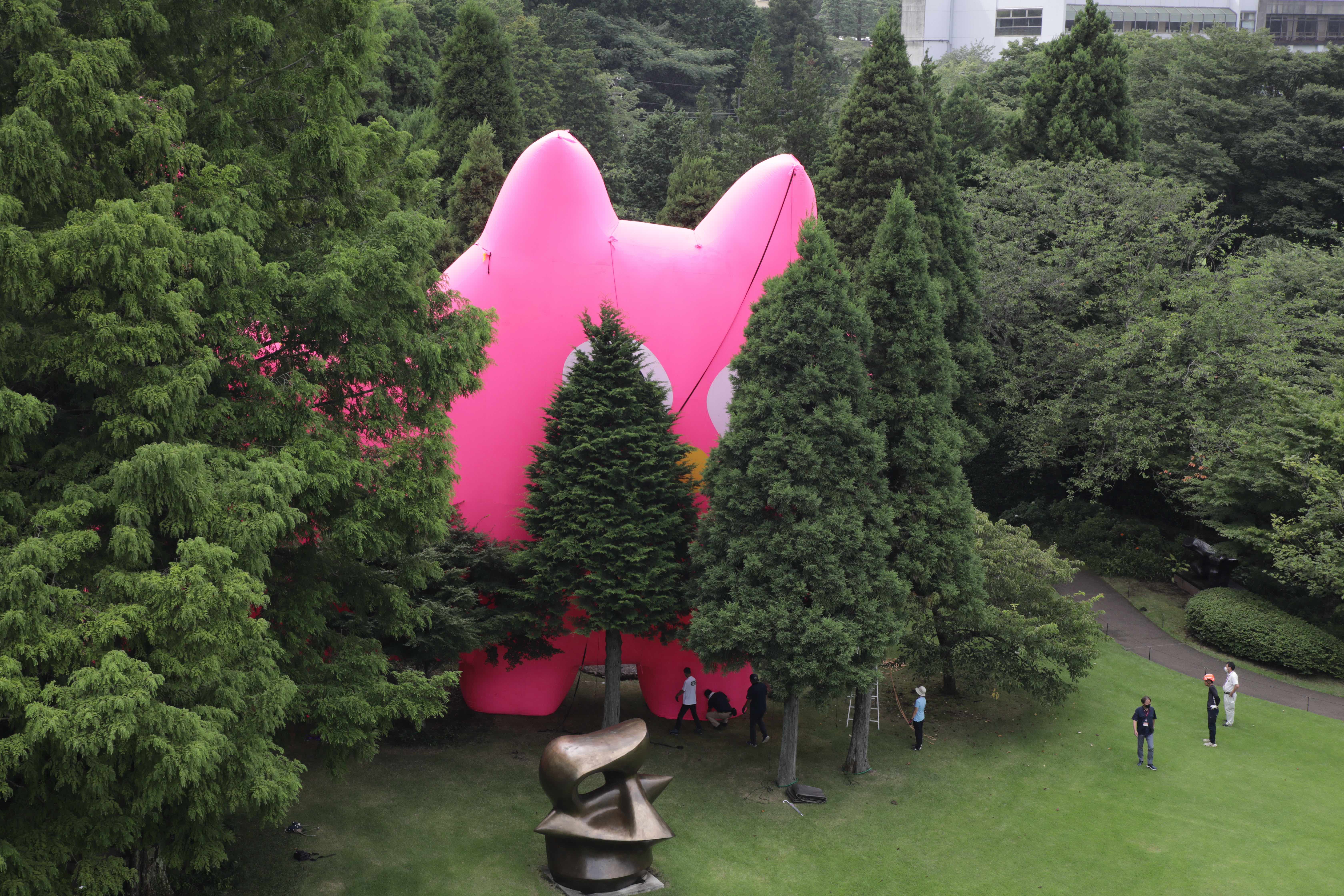
This two-person exhibition will showcase a selection of new works by Euske Oiwa and Takehiro Iikawa. Oiwa, who received his PhD from Tokyo University of the Arts, has a keen interest in the philosophical genealogy of installation art. He creates meticulously constructed multimedia installations inspired by a wide range of themes, from the spatiotemporal experiences of isolation in a pandemic society to the playability created by games. Oiwa’s ambitious work Card Game (2022) focuses on our capacity for inference and conviction, while his first museum exhibition “P in Case” (2022) took as its subject our paranoia regarding contemporary life as an intelligent mechanism. Iikawa, on the other hand, is known for his Decorator Crab—Mr. Kobayashi, the Pink Cat (2007–) sculptures of giant, fluorescent pink cats. Inspired by the information overload of contemporary life, which frustrates attempts to obtain a full picture or complete account of any particular event, Iikawa’s pink cats are so big they can never be captured in a single photo. Behind the absurdity of this gigantic animal is a comment on the futility of accurate documentation in an age of the instant transmission of images and information over the internet and social media.
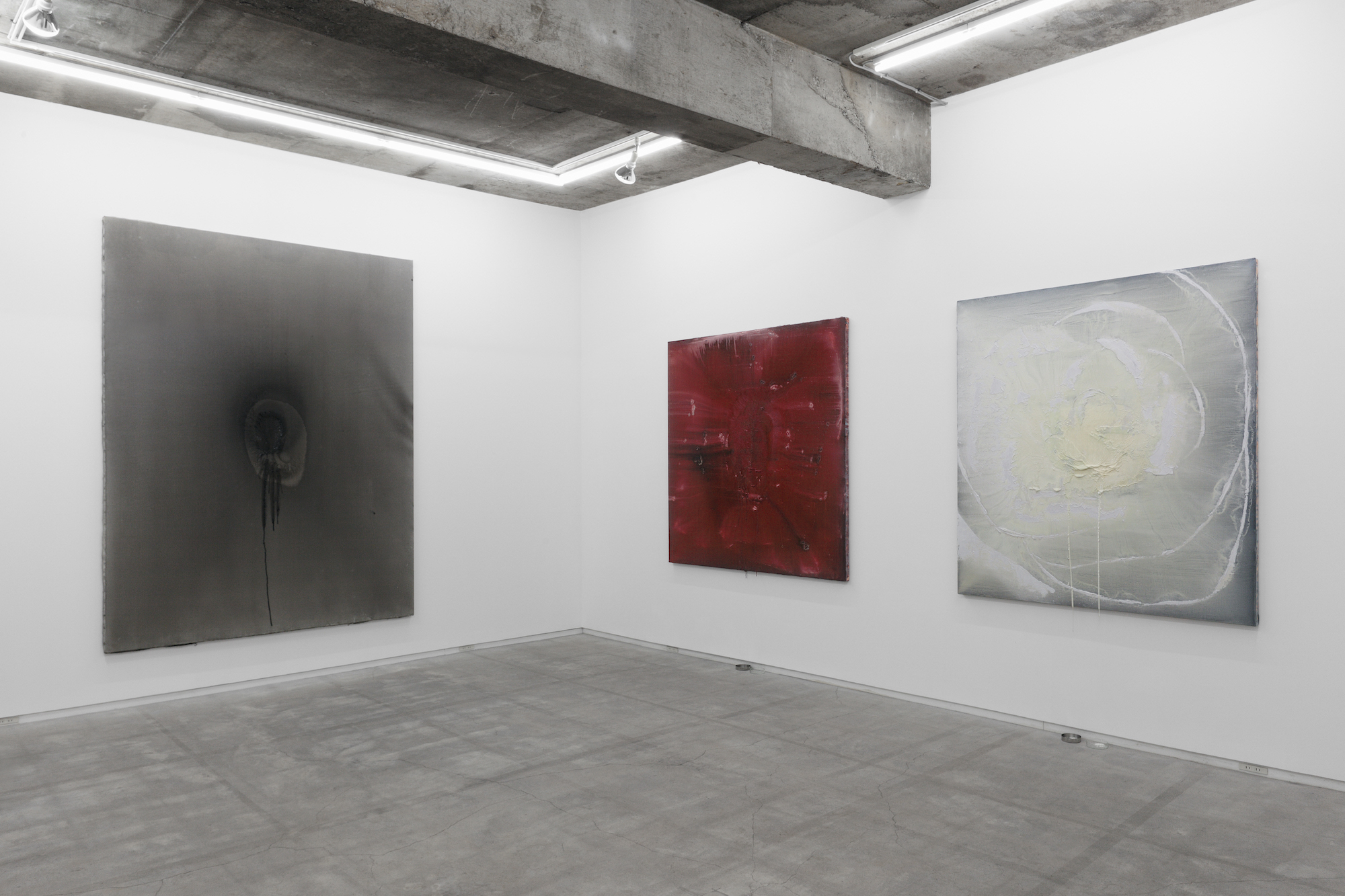
Talion Gallery was founded in the Yanaka area of Tokyo in 2011 and moved to Mejiro in 2014. The gallery presents exhibitions that take a critical stance toward historical developments in art, the cultural movements of our age, and emergent social formations. The gallery pursues a long-term vision in promoting artists with a shared sensibility that transcends generations, and it is committed to positioning its program in both Japanese and international contexts. Represented artists include Momoko Jennifer Iida, Takuma Ishikawa, Takehito Koganezawa, Keisuke Koizumi, Sayuri Miyashita, Hiroyuki Nisougi, Eri Takayanagi, Mariko Tomomasa, and Takuya Yamashita.
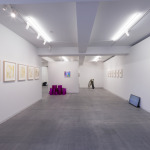
TAKE NINAGAWA
- C3
- Azabu-Juban
- C3
- Azabu-Juban
RYOKO AOKI: STORIES ABOUT BOUNDARIES
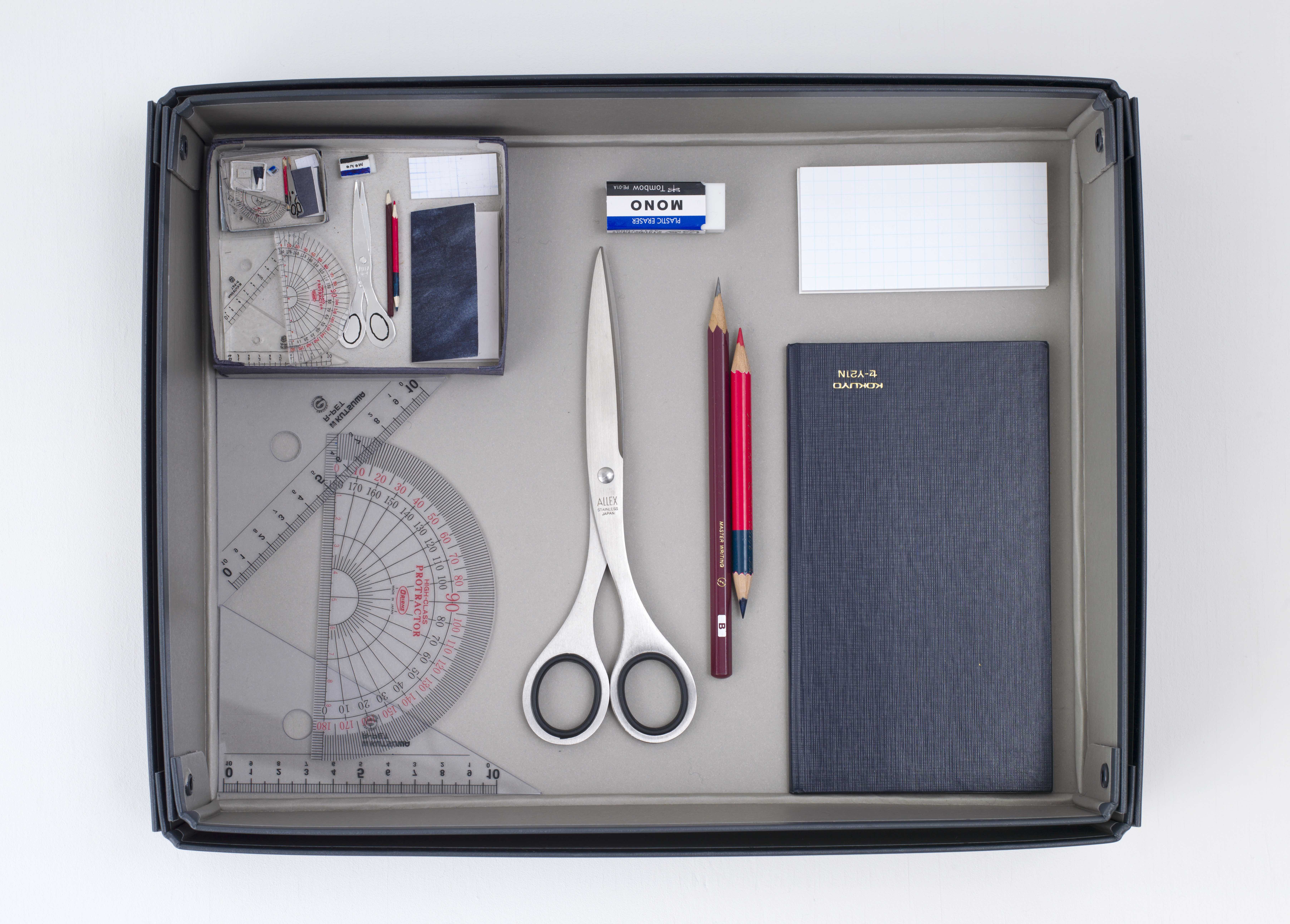
A key member of the experimental art scene that emerged in Kyoto in the late 1990s and early 2000s, Ryoko Aoki is known for making enigmatic installations of drawings and objects. Executed on a wide array of supports, from art paper to scraps, the drawings depict everyday scenes, natural imagery, and colorful abstractions in styles ranging from cartoon to realistic study. The objects range from stones to carved figurines to items Aoki fashions out of old fabric. Like odd shrines or crime scenes, her installations invite viewers to speculate about the significance of their parts while withholding meaning as a whole.
For her latest exhibition at Take Ninagawa, Aoki will create a series of works in boxes, presented on tabletops, shelves, the floor, and elsewhere, that deploy shifts in scale and perspective to draw viewers into the spaces they contain. For Aoki, the works converse with precedents ranging from Genpei Akasegawa’s Canned Universe (1964), for which the Anti-Art trickster conceptually canned the universe by reversing the position of the labels of canned goods from outside to inside the cans, to On Kawara’s Date Paintings and Susan Hiller’s vitrine installations.
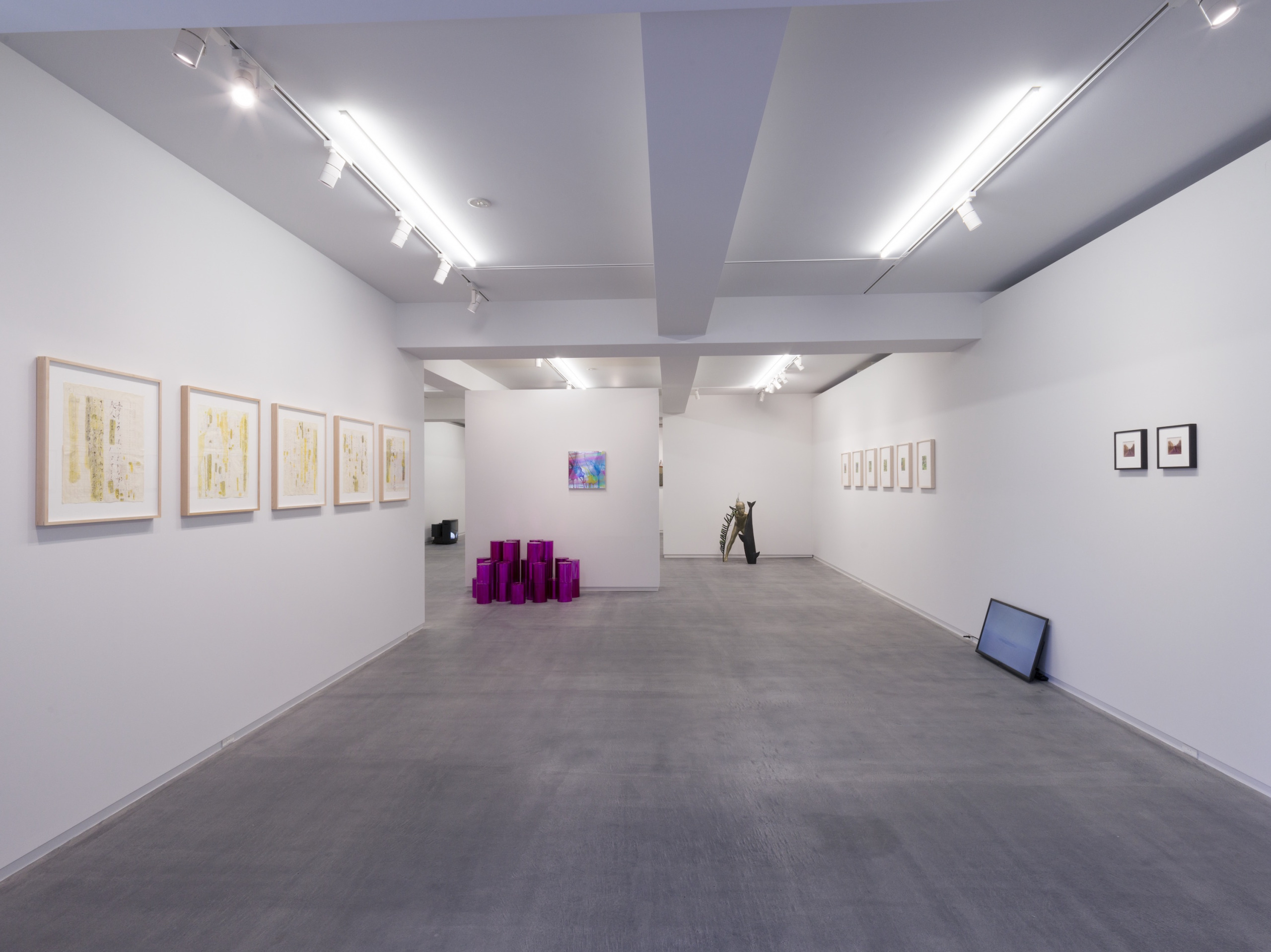
Established in 2008, Take Ninagawa is dedicated to promoting emerging and historically established Japanese artists in a cross-generational, international framework. Represented artists build upon precedents in Japanese postwar experimental art in developing their own approaches to address contemporary concerns. International artists in the gallery’s program are invited to respond to the specific context for contemporary art and culture in Japan while giving expression to the broader perspectives they bring with them. Each exhibition at the gallery is conceived on a project basis, with artists encouraged to develop ideas across a series of exhibitions. Driven by a mission to produce new values that can challenge entrenched power structures in art and society, Take Ninagawa frequently collaborates on initiatives with other galleries in Japan, the Asia Pacific, and beyond. Represented artists include Ryoko Aoki, Thea Djordjadze, Kazuko Miyamoto, Shinro Ohtake, Aki Sasamoto, Danh Vo, and Tsuruko Yamazaki.
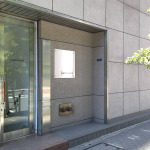
TAGUCHI FINE ART
- B3
- Mitsukoshi-Mae
- B3
- Mitsukoshi-Mae
AKI TSUKAMOTO
Born in Saitama Prefecture in 1989, Aki Tsukamoto studied painting and printmaking at Musashino Art University in Tokyo while working for Takashi Murakami at Kaikai Kiki Gallery. He later moved to New York to work as an assistant to Tomokazu Matsuyama, before returning to Tokyo, where he is currently based. Tsukamoto’s experiences with silkscreen techniques and assisting these artists with their painting gave him a natural affinity for Pop art, leading him to develop a style he calls “New Cubism,” which he uses to depict popular anime and cartoon characters in vivid colors. Throughout his practice, Tsukamoto samples eclectic motifs from disparate contexts while maintaining a rigorous commitment to oil painting techniques and displaying a sharp consciousness of art history. This solo exhibition will feature a selection of oil paintings, including new works.
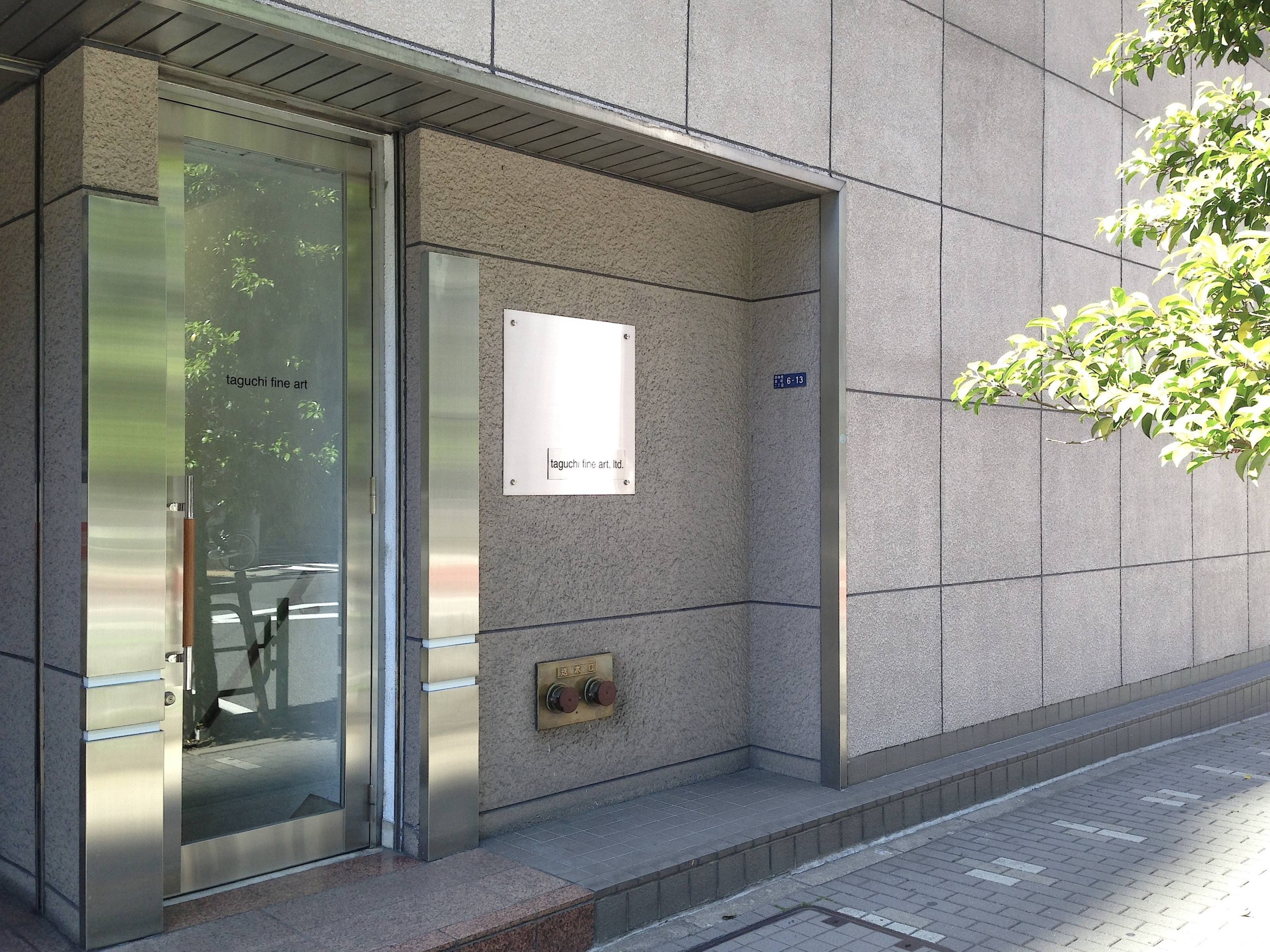
Taguchi Fine Art was founded in 2001 with the belief that art should address the existential problems of humankind. The gallery promotes Japanese and international artists who share this philosophy by hosting exhibitions in its Tokyo space, staging pop-up shows, and participating in such art fairs as Art Cologne, Art Karlsruhe, Kiaf Seoul, LA Art Show, Art Fair Tokyo, and Art Osaka. Represented artists include Frank Gerritz, Yasutake Iwana, Kim Taek Sang, Christiane Löhr, Yoshinobu Nakagawa, Shigeru Nishikawa, Morio Nishimura, Regine Schumann, Michael Toenges, and Aki Tsukamoto.
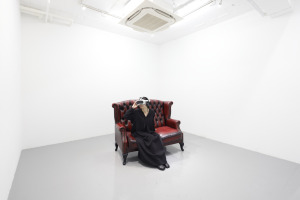
SNOW CONTEMPORARY
- D12
- Roppongi
- D12
- Roppongi
DAVID STENBECK
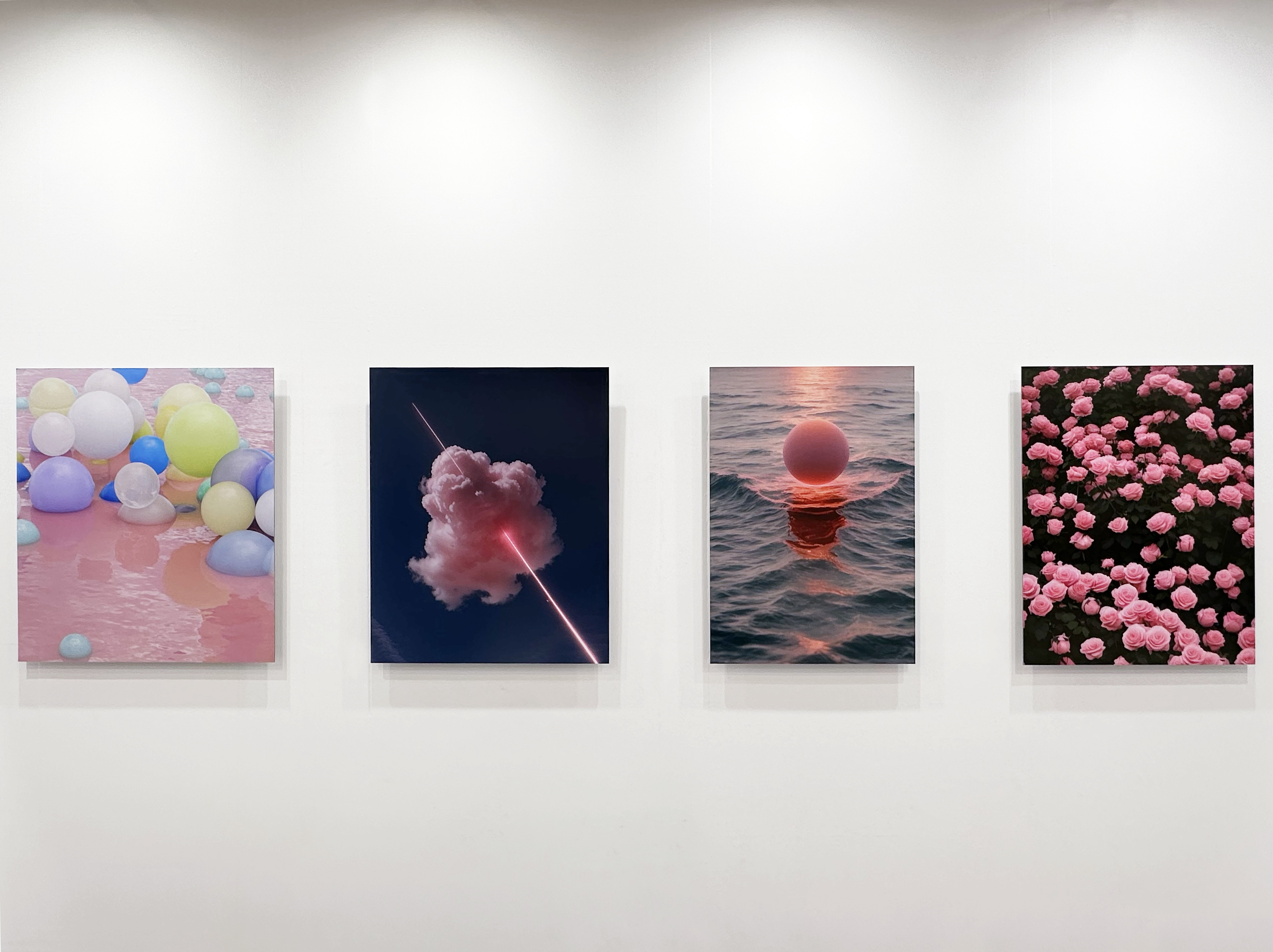
Born in Sweden in 1978, David Stenbeck is known for using the software Cinema 4D to produce surreal landscapes of the open sky or bodies of water that often incorporate reflections of otherworldly light sources. A colorful group of balloons hovers on the surface of water in one work, a neon beam pierces a luscious white cloud with its preternatural radiance in another, while a third depicts a pink-tinged smoke bomb that seems to have been detonated on a snowy mountainside. A typically crisp and deftly framed Stenbeck image offers the promise of a cosmic miracle amid the mundanity of everyday life—an elusive quality that has attracted brands like Apple and Valentino to collaborate with him. This solo exhibition will showcase digital prints and a video installation.
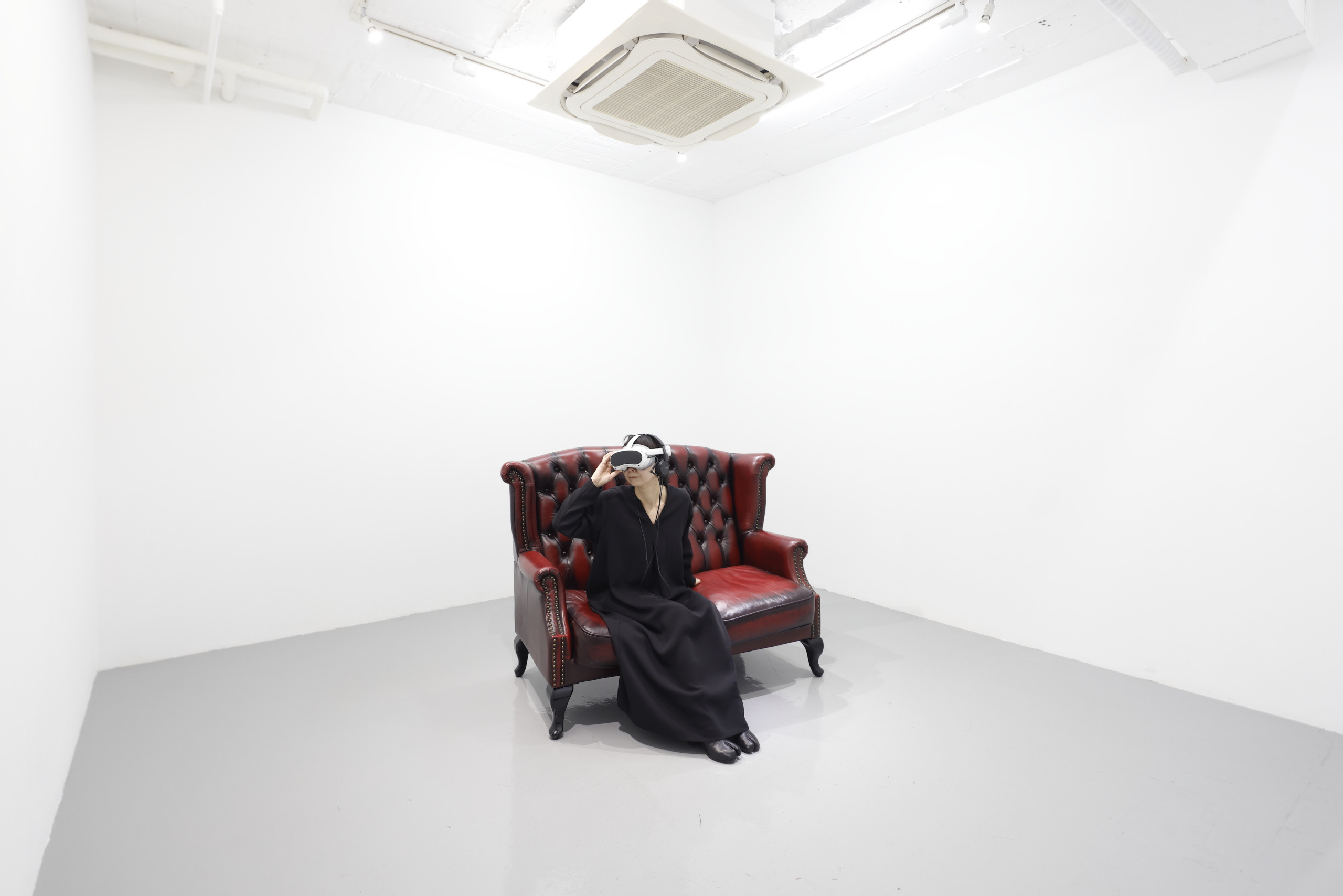
Snow Contemporary was founded in 2010 as an artist management office based between Tokyo and Singapore and has occupied its current premises in Nishi-Azabu since 2016. The gallery exhibits cutting-edge work in genres ranging from street art to performance and Conceptual art. In order to expand the visibility of its artists, the gallery also organizes projects at a variety of other venues. Represented artists include Tatsuo Kawaguchi, Fuyuki Yamakawa, Yosuke Amemiya, Hitotzuki, Rintaro Fuse, Swoon, and David Stenbeck.
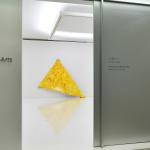
SHUGOARTS
- E2
- E4
- Roppongi
- E2
- E4
- Roppongi
YUKIO FUJIMOTO: BLOOM’S BROOM
Drawing on his training in musicology at Osaka University of Arts, Yukio Fujimoto is known for an artistic practice that seeks to introduce aural elements into spaces that typically privilege visual stimuli. His quietly evocative installations stimulate and challenge the viewer’s senses in novel ways. The centerpiece of this solo exhibition will be the installation Broom (Tile) (2024), for which the artist will cover the gallery floor with 800 unglazed tiles. Viewers will activate the work as they walk across it, causing the tiles to shift, crack, and make sounds. Also on view will be new pieces from the long-running series Sugar (1995–). To make these works, the artist places sugar cubes in a glass tube and spins them, causing the cubes to collide and break apart until they are eventually reduced to white granules.
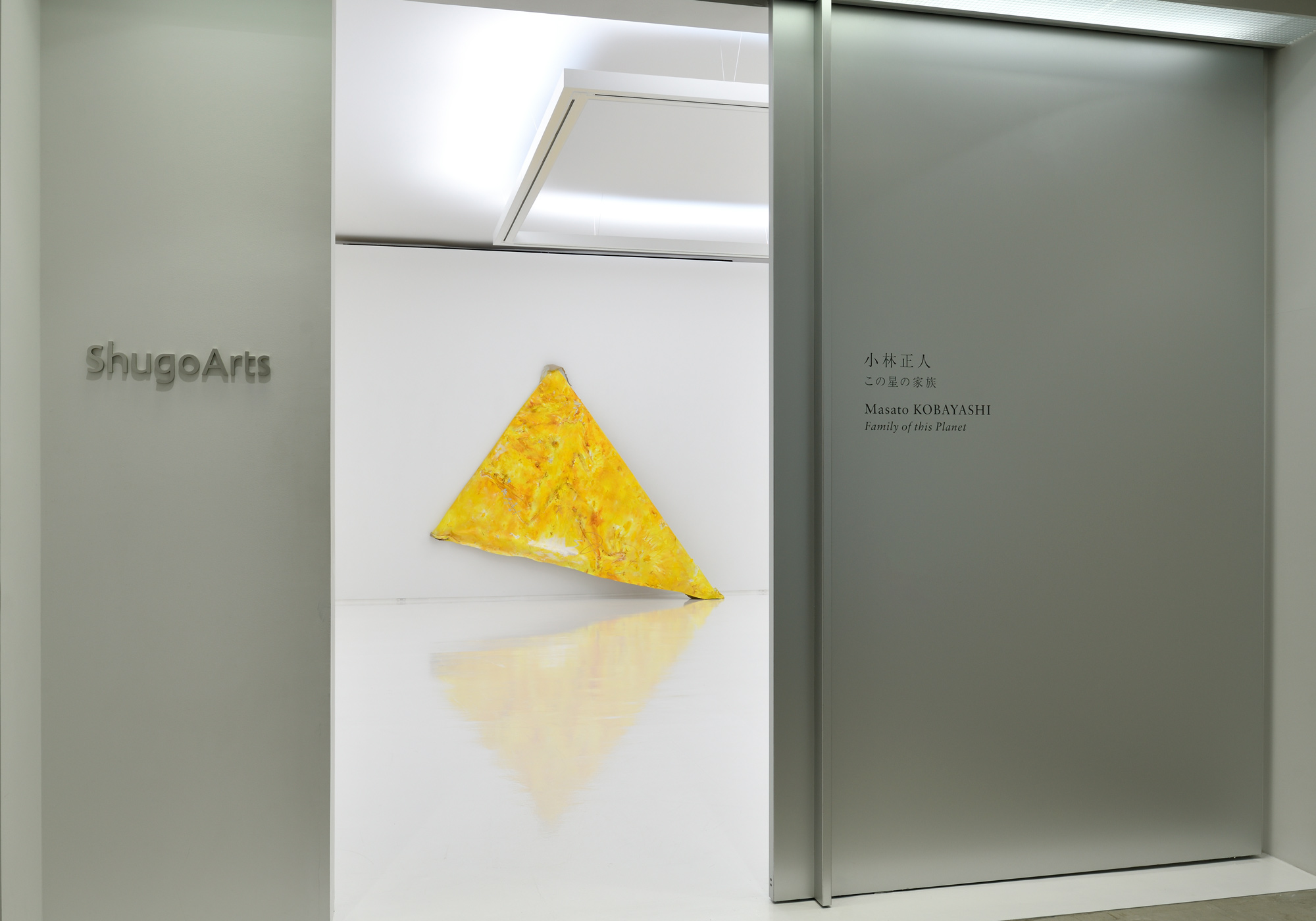
Shugo Satani worked at his father Kazuhiko’s Satani Gallery before starting ShugoArts in 2000. The gallery moved to Roppongi in 2016 and opened a viewing space in Tennozu Isle in 2021. ShugoArts aims to create new art historical values through its exhibition program, prioritizing above all the free expression of artists. The gallery collaborates with such artists as Masaya Chiba, Yukio Fujimoto, Leiko Ikemura, Masato Kobayashi, Aki Kondo, Lee Kit, Naofumi Maruyama, Anju Michele, Ritsue Mishima, Yasumasa Morimura, Yuji Ono, Yoriko Takabatake, Shigeo Toya, Atsushi Yamamoto, and Tomoko Yoneda.
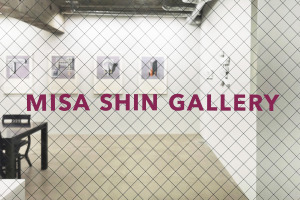
MISA SHIN GALLERY
- C13
- Hiroo
- C13
- Hiroo
JAEEUN CHOI
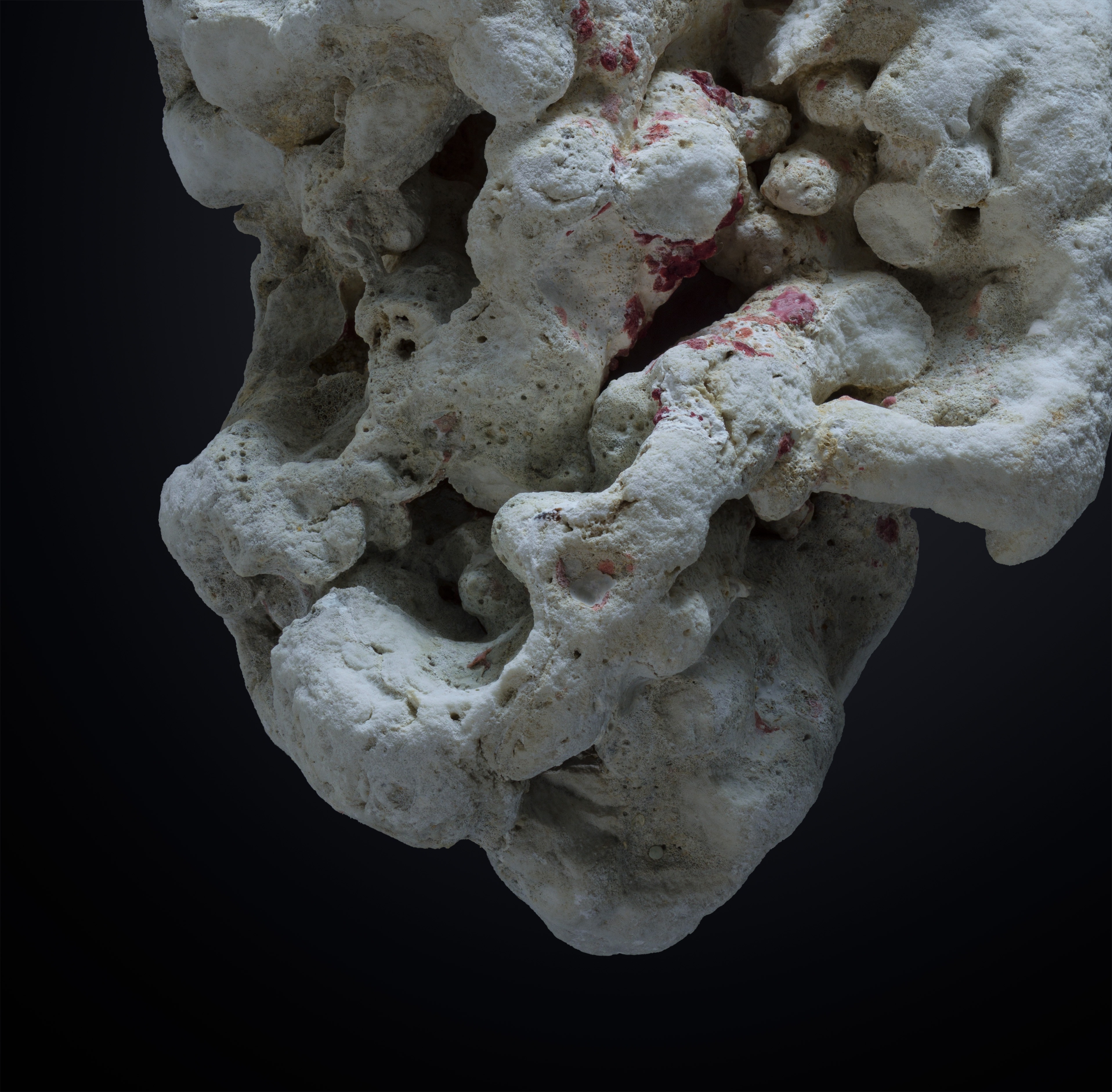
Born in 1953 in Seoul, Jaeeun Choi moved to Japan in 1976 to study at the Sogetsu school of avant-garde ikebana flower arrangement under Hiroshi Teshigahara. She soon went on to forge her own approach to the discipline using soil along with plants, reflecting a holistic consciousness of the wider contexts of nature and time that continues to inform her practice today. This is apparent in Choi’s employment of delicate materials, such as century-old aged paper and pressed flowers, to explore themes of time, nature, and existence. Her sweeping, cosmic vision can also be seen in sprawling installations, such as the thousands of pieces of dead coral from Okinawa that she presented in a recent solo exhibition at Ginza Maison Hermès Le Forum. This exhibition will feature new photographs and sculptural installations by Choi.
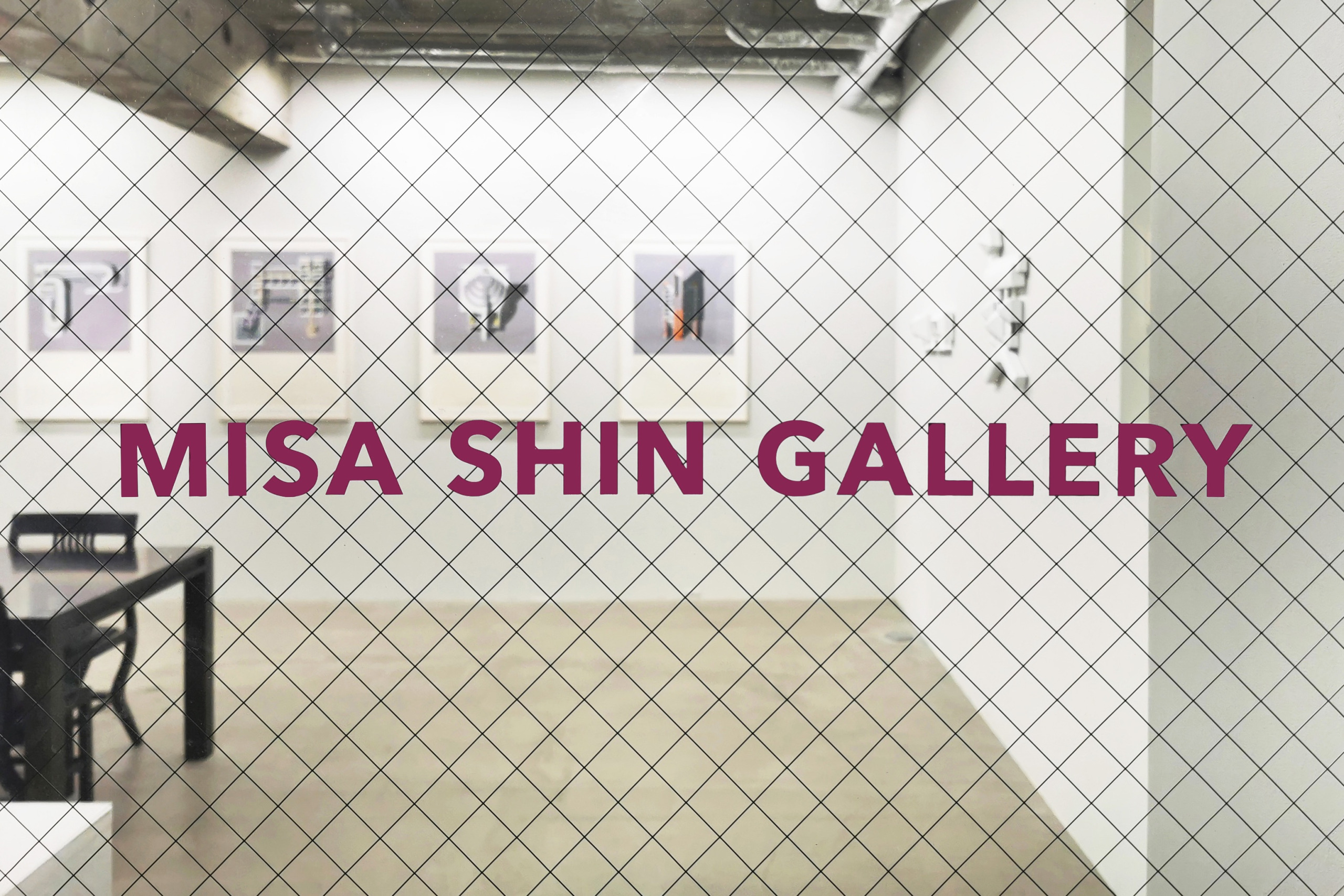
Misa Shin Gallery opened in 2010 in Shirokane, a central and historically industrial area of Tokyo that still contained small factories at the time. In 2018 the gallery relocated to Minami-Azabu, a quiet residential neighborhood that is also home to many embassies. The gallery represents a multigenerational roster of Japanese and international artists, many of whom work with conceptual and interdisciplinary approaches. The gallery seeks to both present exhibitions of cutting-edge work and establish the historical significance of its artists. In particular, the gallery’s representation of Japanese conceptual artists from the 1960s and ’70s has made lasting contributions to the global understanding and appreciation of postwar Japanese art.
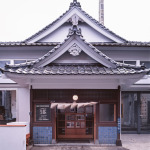
SCAI THE BATHHOUSE
- A8
- Nezu
- A8
- Nezu
VAJIKO CHACHKHIANI
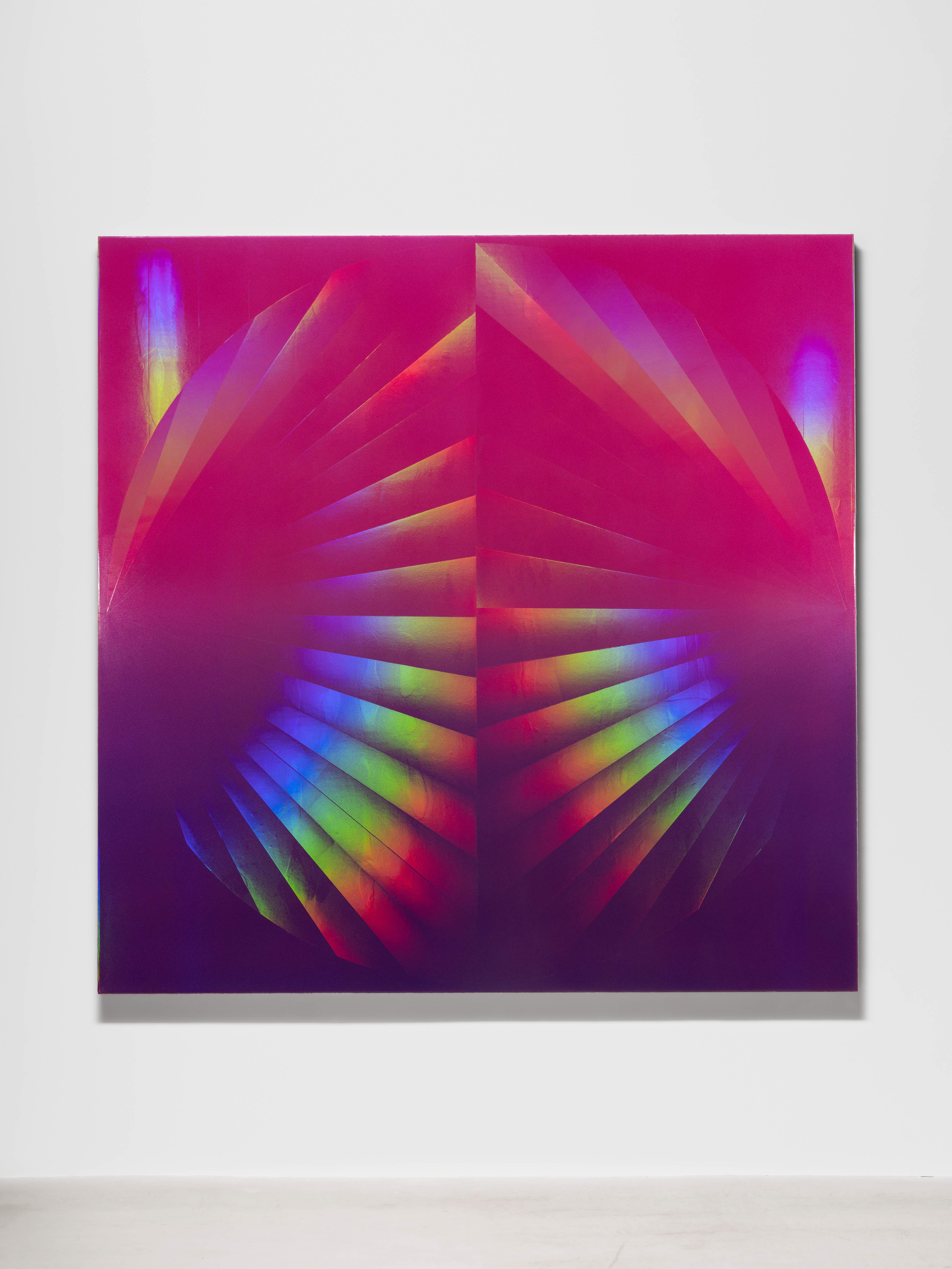
Based between Berlin and Tbilisi, Georgian artist Vajiko Chachkhiani works across film, sculpture, and installation. Having initially studied mathematics and informatics, Chachkhiani went on to study fine arts in Berlin and Amsterdam. His practice is focused on an exploration of how the human psyche operates, or in his words, “the way history defines psychic tendencies, and the intersection of inner and outer narratives.” The results are often uncanny and otherworldly. At the Venice Biennale in 2017, he presented a Georgian log cabin filled with furniture that grew moss as rain got inside the work, suggesting an inversion between interior and exterior environments and states of being. This solo exhibition will feature new videos and sculptural installations.
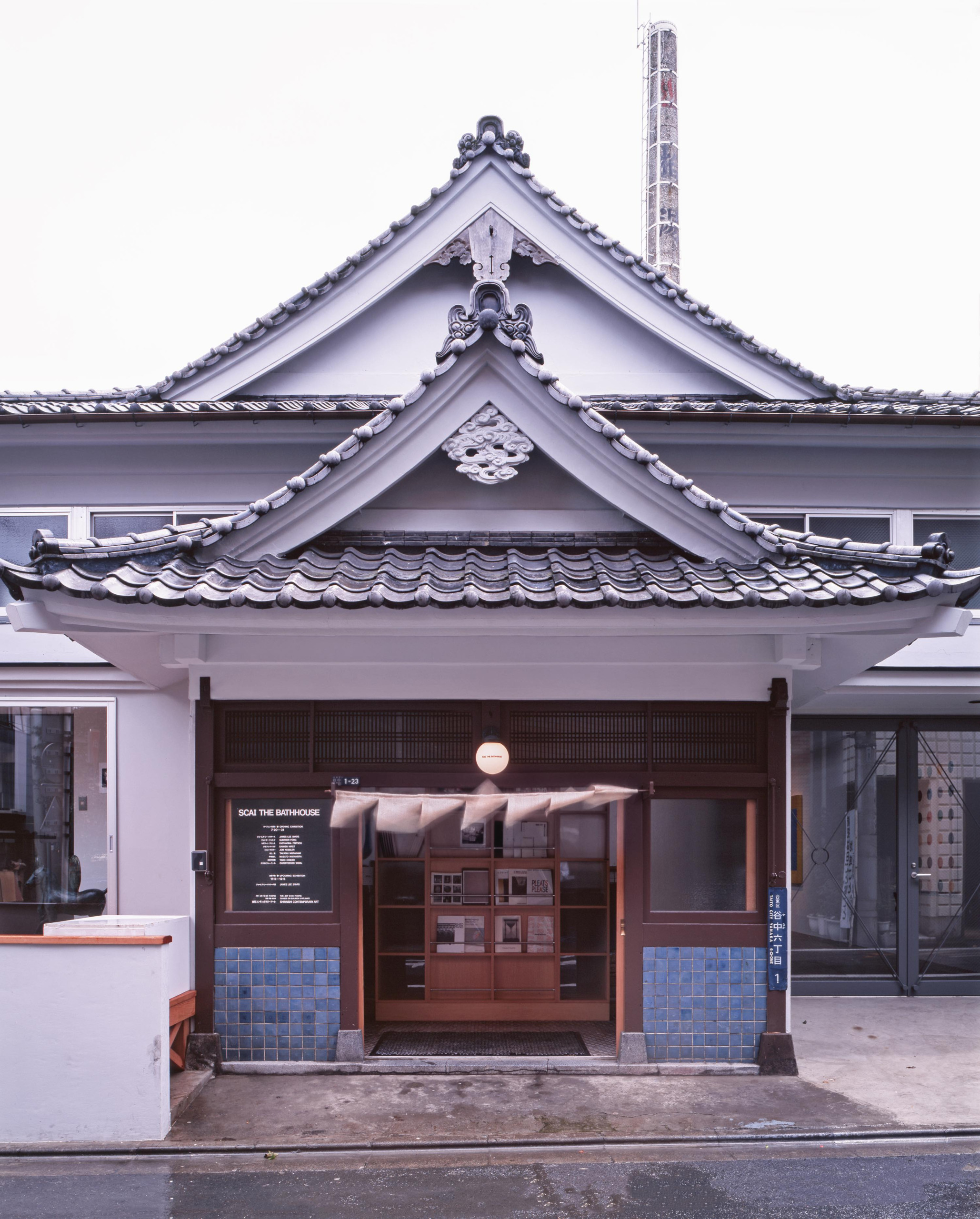
SCAI The Bathhouse was founded in 1993 in a 200-year-old former public bathhouse building in the old Tokyo district of Yanaka, a short walk from Ueno, an area dense with museums and art schools. Representing artists from across a wide range of generations and practices, the gallery seeks to function as a meeting place for various currents of contemporary art from Japan and abroad. To pursue this mission further, the gallery recently opened Komagome Soko, an experimental project space for emerging talents; SCAI Park, which transforms part of a storage facility into an exhibition site; and SCAI Piramide, an outpost in Roppongi for cultivating thoughtful exchanges and further advancing the contemporary art scene in Tokyo.
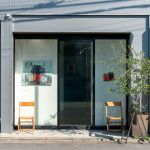
POETIC SCAPE
- C8
- Nakameguro
- C8
- Nakameguro
TOSHIO SHIBATA: GEOMETRICAL DRAWING
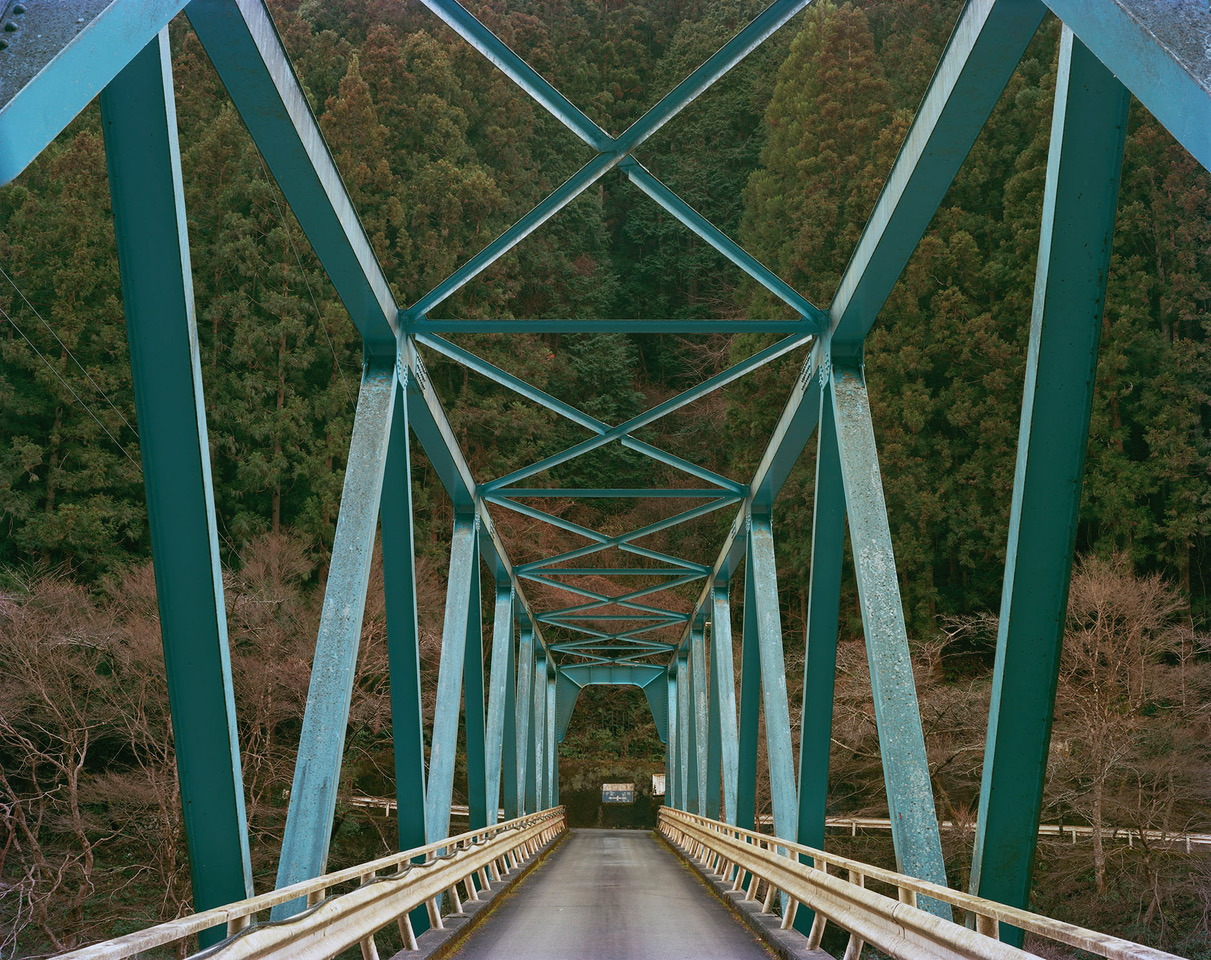
Born in 1949 in Tokyo, Toshio Shibata is known for his large-format photographs depicting civil engineering projects in vast panoramas devoid of people. Taken with a neutral gaze that observes both the creation and destruction entailed by these projects, his images document the impact of human activity on the natural environment. Initially trained as a painter, Shibata later studied at the Royal Academy of Ghent in Belgium on a fellowship from 1975 to 1977, during which time he turned to photography. While his large body of photographic work has focused on the Japanese environment, he has also extensively documented similar subjects in the United States, such as the Grand Coulee Dam on the Columbia River in Washington. This solo presentation will feature a selection of photographs including new works.
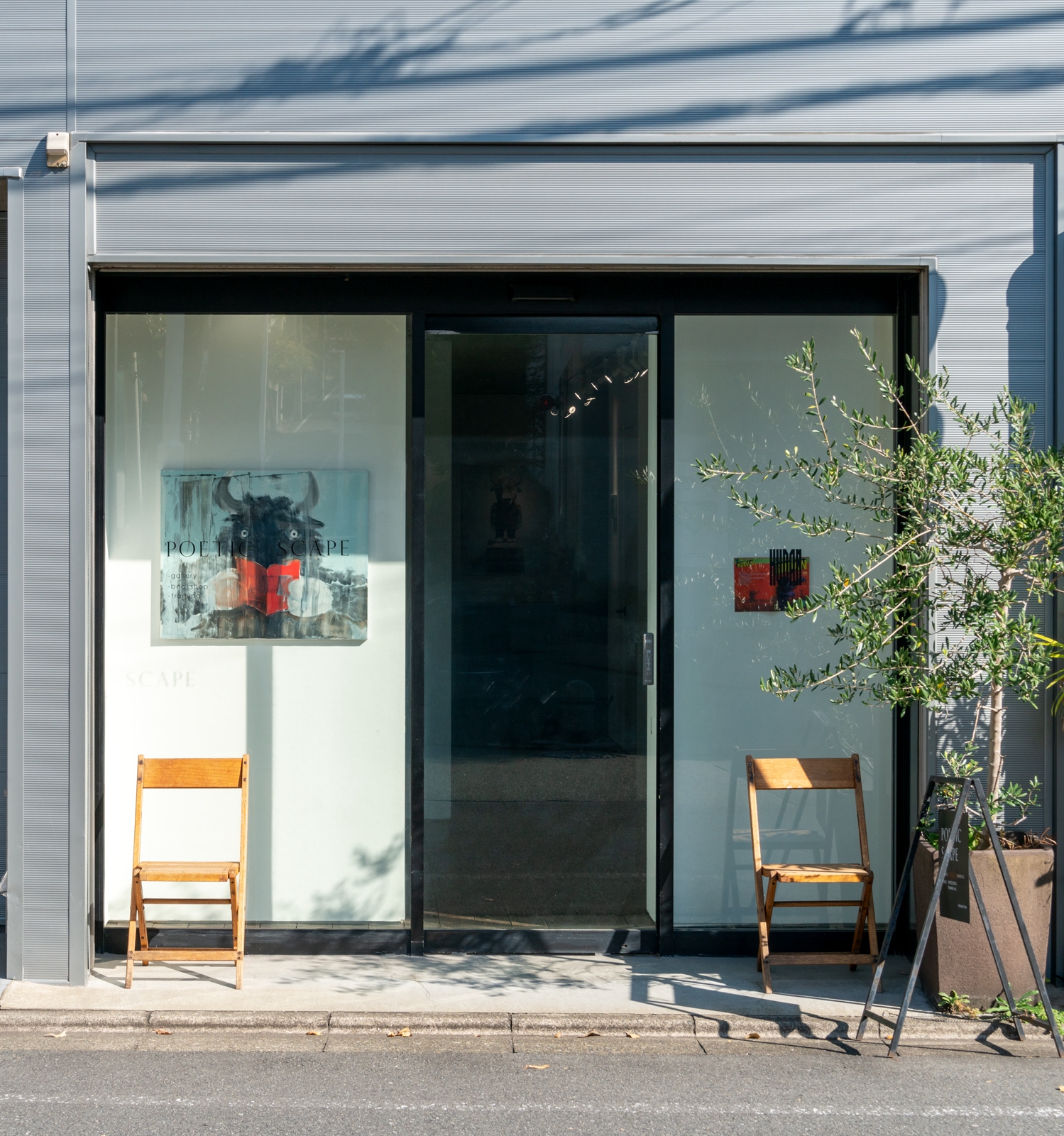
Poetic Scape opened in Nakameguro in 2011 as a gallery specializing in photography. In recent years, its program has expanded to include works in other mediums. Combining the words “poetic” and “landscape,” the gallery name reflects the ambition to show visitors a new landscape that cannot be clearly defined by language but that artists have the ability to see. Affiliated artists include Daido Moriyama, Hiroshi Nomura, Sakiko Nomura, Tracy Templeton, Toshiya Watanabe, and Haruka Yamada. In addition to its exhibition space, Poetic Scape runs a small shop that sells artist books and texts on photographic theory.
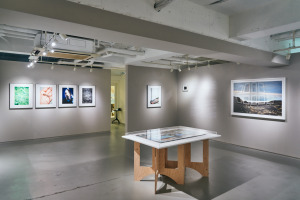
PGI
- C2
- Azabu-Juban
- C2
- Azabu-Juban
MICHIKO KON
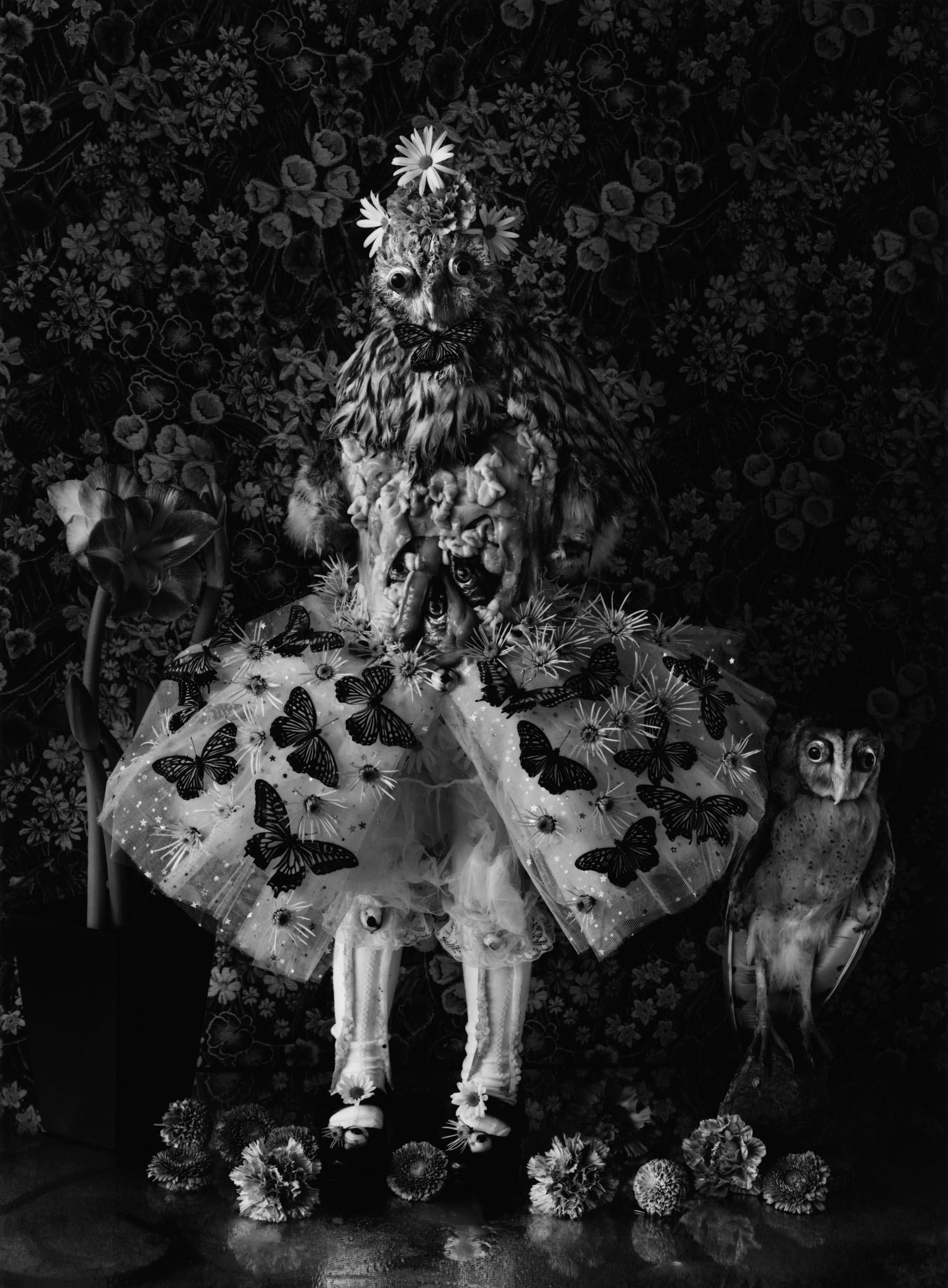
Japanese photographer Michiko Kon initially studied painting and printmaking before attending Tokyo Photographic College from 1978–80. Delving deep into her subconscious in search of inspiration for her otherworldly still life images, Kon transforms seemingly mundane objects like vegetables, actual sea creatures like fish and squid, flowers, and insects into surreal, enigmatic scenes that she then photographs and prints herself. Her recent work in Mexico draws on local motifs to juxtapose her own views on life and death with the country’s unique blend of religion and occultism. Taxidermy, insects, silkworms, larvae, and cocoons are just some of the organic materials that Kon uses to express her ideas of transmigration and the circle of life. Elsewhere, imaginary beasts draped in eyeballs and flowers or robed in garments made of fish and cocoons take on an inexplicable sensuality, becoming so vivid that the lush, handmade prints barely seem to contain them. This solo exhibition will feature around 20 gelatin silver prints by the artist.
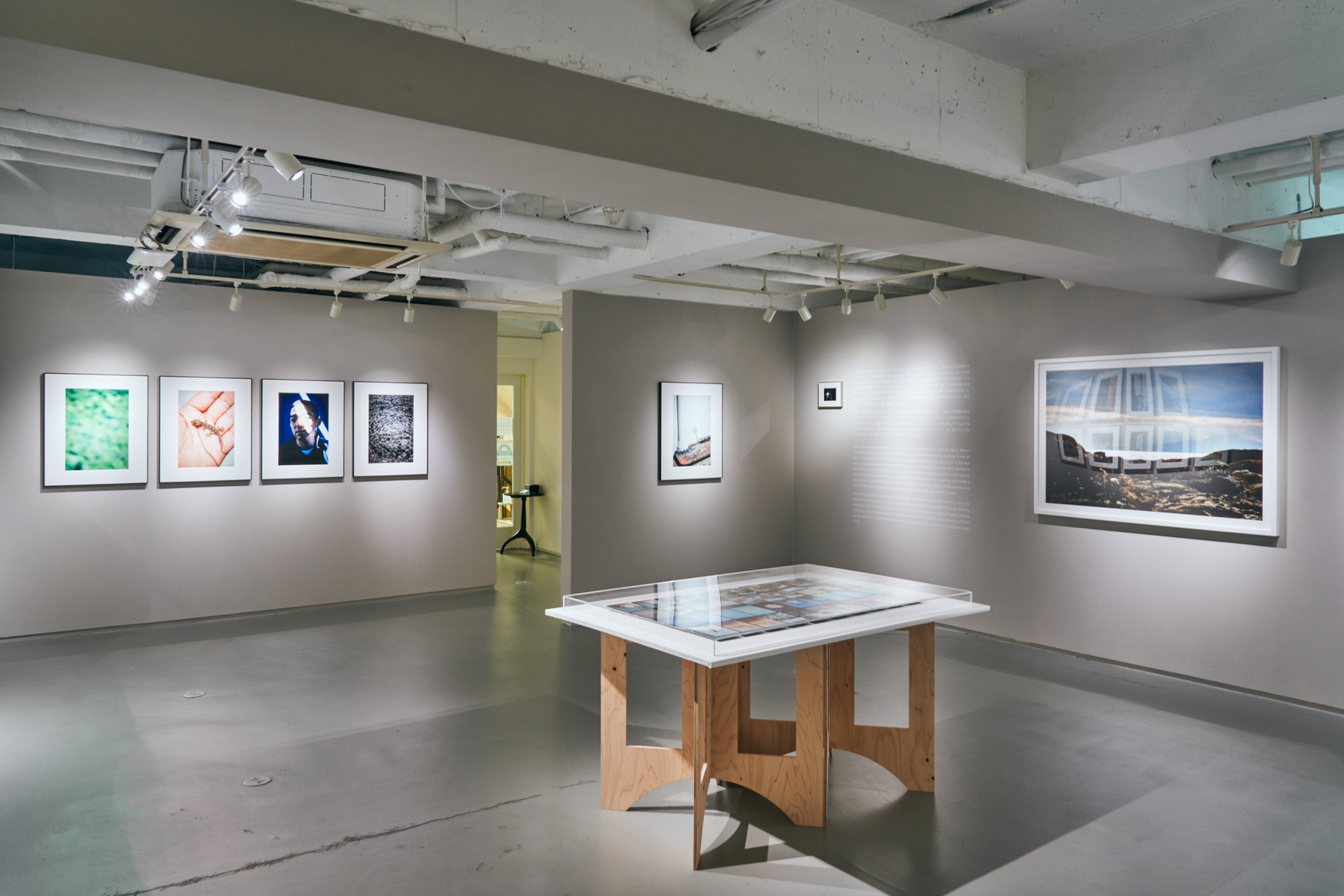
A pioneer among Japanese commercial galleries specializing in photographic art, Photo Gallery International was established in Tokyo’s Toranomon district in 1979. The gallery adopted its current name, PGI, upon its move to Higashi-Azabu in 2015. PGI exhibits seminal photographers from the United States and beyond, including Ansel Adams, Edward Weston, Harry Callahan, and Emmet Gowin. The gallery also works with masters of Japanese postwar photography like Yasuhiro Ishimoto, Kikuji Kawada, Ikko Narahara, and Eikoh Hosoe. PGI takes pride in partnerships with established artists such as Kozo Miyoshi, Michiko Kon, and Yoshihiko Ito that date back to the early days of their careers. Since 2003, the gallery has also discovered new talents, welcoming Shintaro Sato, Takashi Arai, Yuki Shimizu, Narumi Hiramoto, and many others to the program.
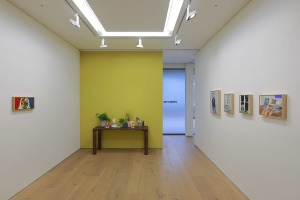
PERROTIN
- E2
- E4
- Roppongi
- E2
- E4
- Roppongi
DANIELLE ORCHARD
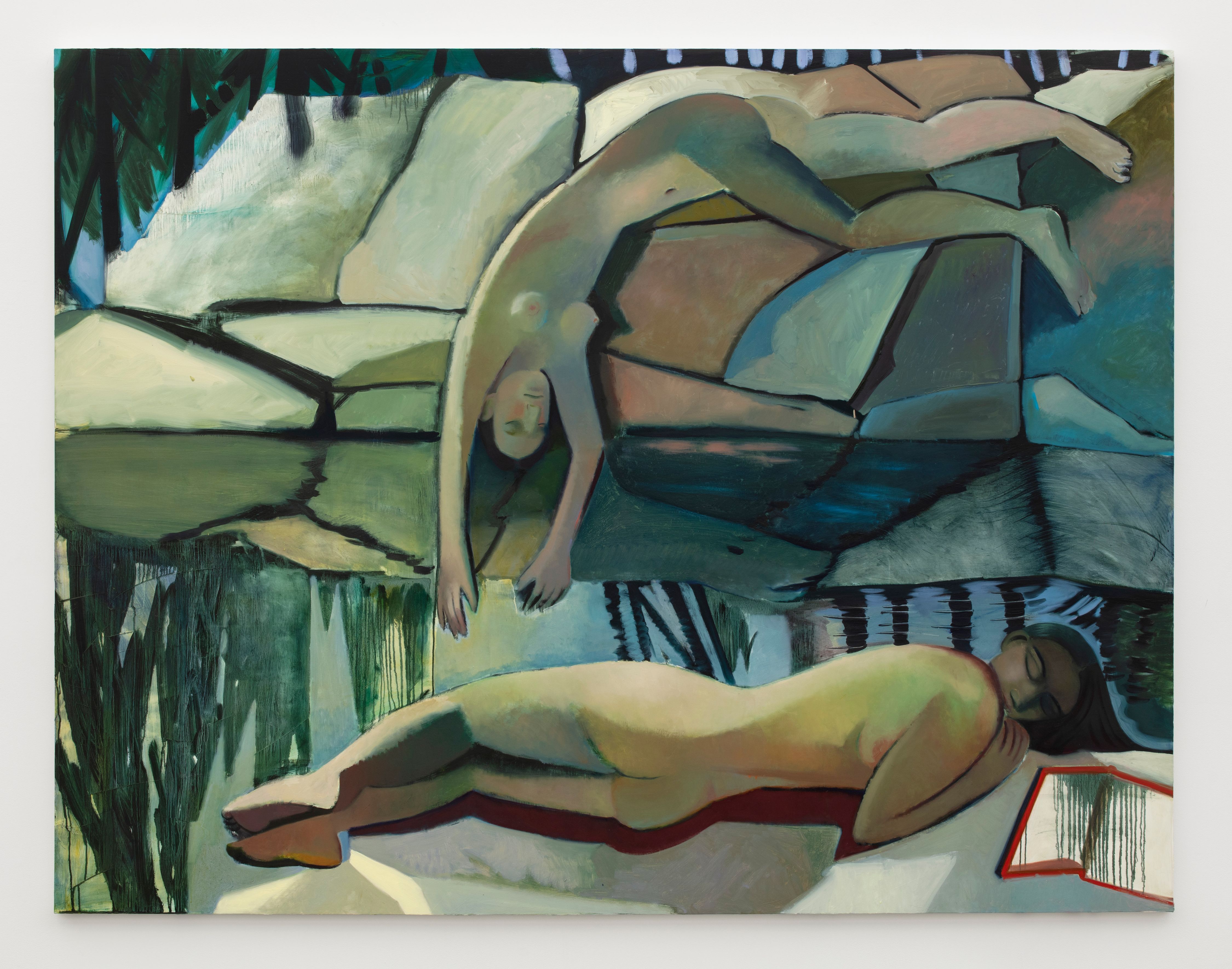
Born in 1985, American painter Danielle Orchard is known for her eclectic portraits that reference Cubist and modern masters like Picasso and Matisse, with a particular interest in representations of the female body. Using the multiple perspectives of analytical Cubism and a thick, saturated impasto technique, Orchard maintains a practice that introduces the perspective of a contemporary female artist into a genre historically dominated by male practitioners—a practice also informed by her own experiences posing for and teaching life drawing classes. This solo exhibition, her first in Japan, will showcase a selection of new paintings.
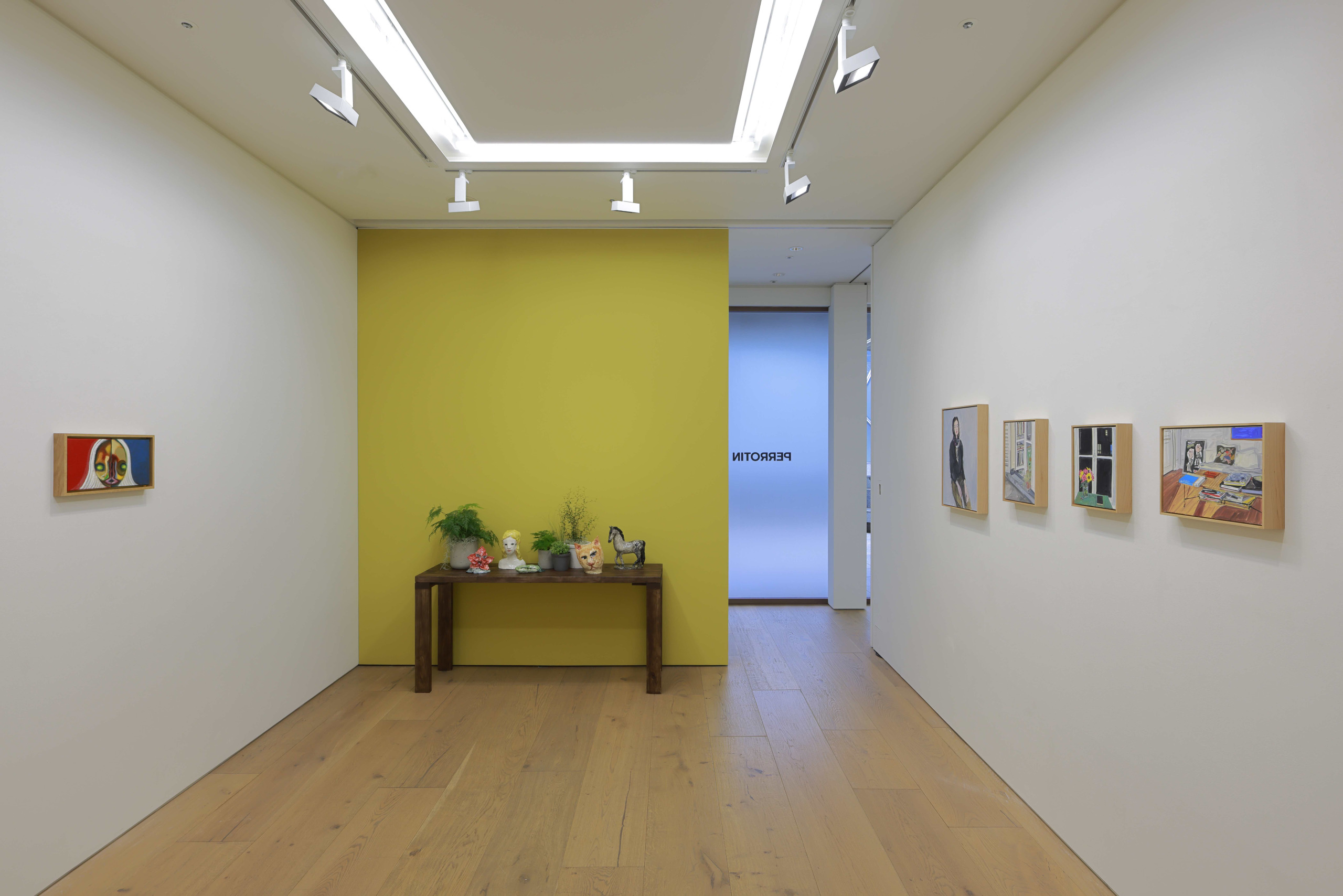
Emmanuel Perrotin founded his first gallery in Paris in 1990 at the age of 21. He has worked closely with his roster of artists—some for more than 30 years—to help realize their ambitious projects. Perrotin opened a Hong Kong space in 2012, followed by spaces in New York in 2013, Seoul in 2016, Tokyo in 2017, Shanghai in 2018, Dubai and a second Seoul location in 2022, and Los Angeles in 2023. With galleries now on three continents, Perrotin continues to gain international recognition and influence. The gallery also participates in more than 20 art fairs each year.
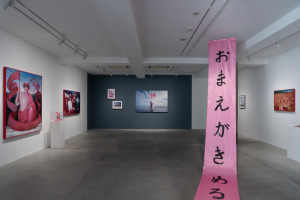
OTA FINE ARTS
- E2
- E4
- Roppongi
- E2
- E4
- Roppongi
CHEN WEI
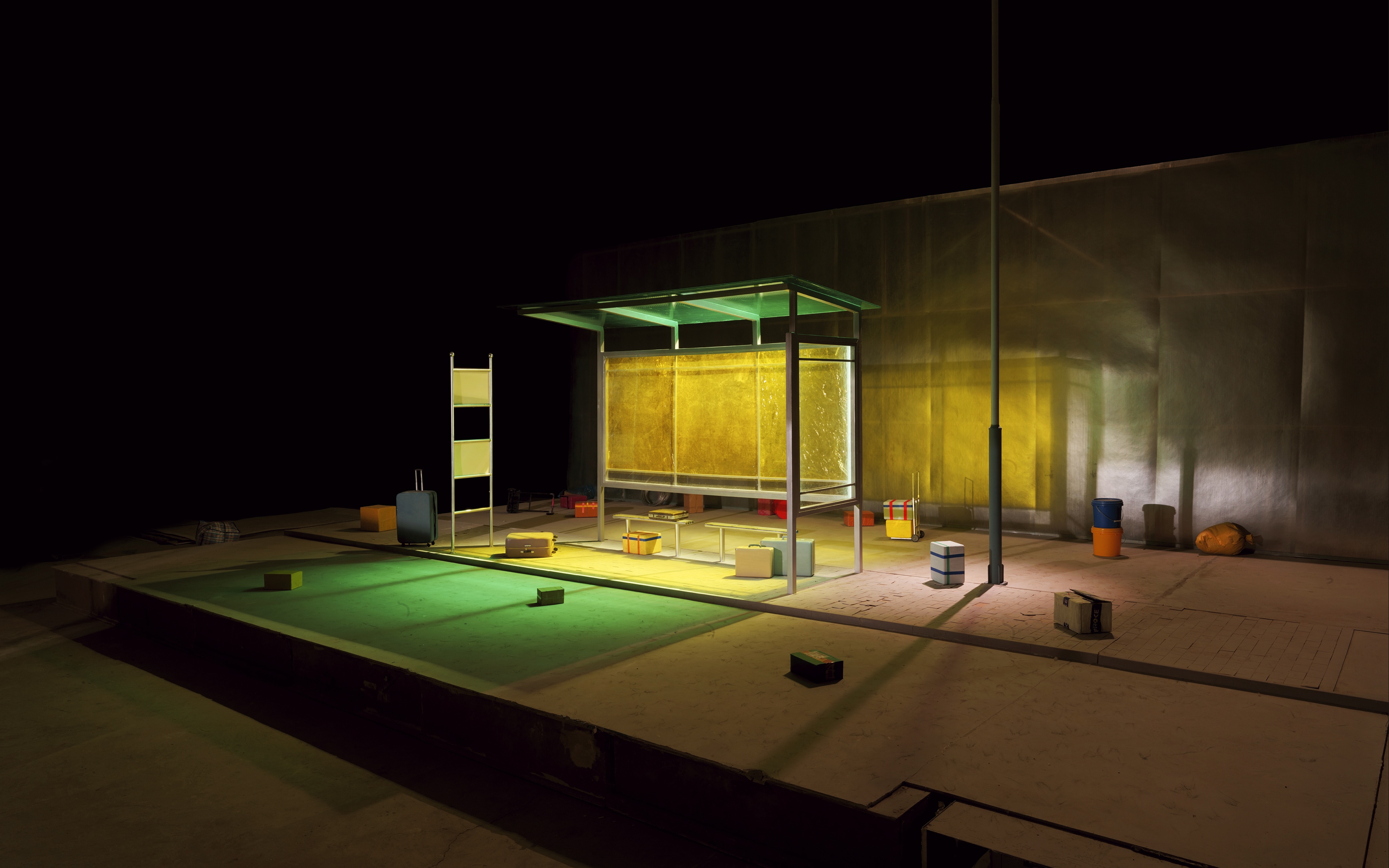
Born in 1980, Chen Wei is known for making staged photographs that reflect the vertiginous pace of change in urban China, especially in Beijing, the country’s political capital. He frequently depicts elaborate fictional settings, such as a nightclub or abandoned convenience store, by building sets in his studio that he then photographs with a neutral, impassive gaze. Chen also deploys an eclectic range of materials, including taxidermy, broken mirrors, and melted wax, to develop intricate narratives that are by turns ominous and idealistic. This solo exhibition will showcase both archival inkjet prints and sculptures made of LED boards and steel.
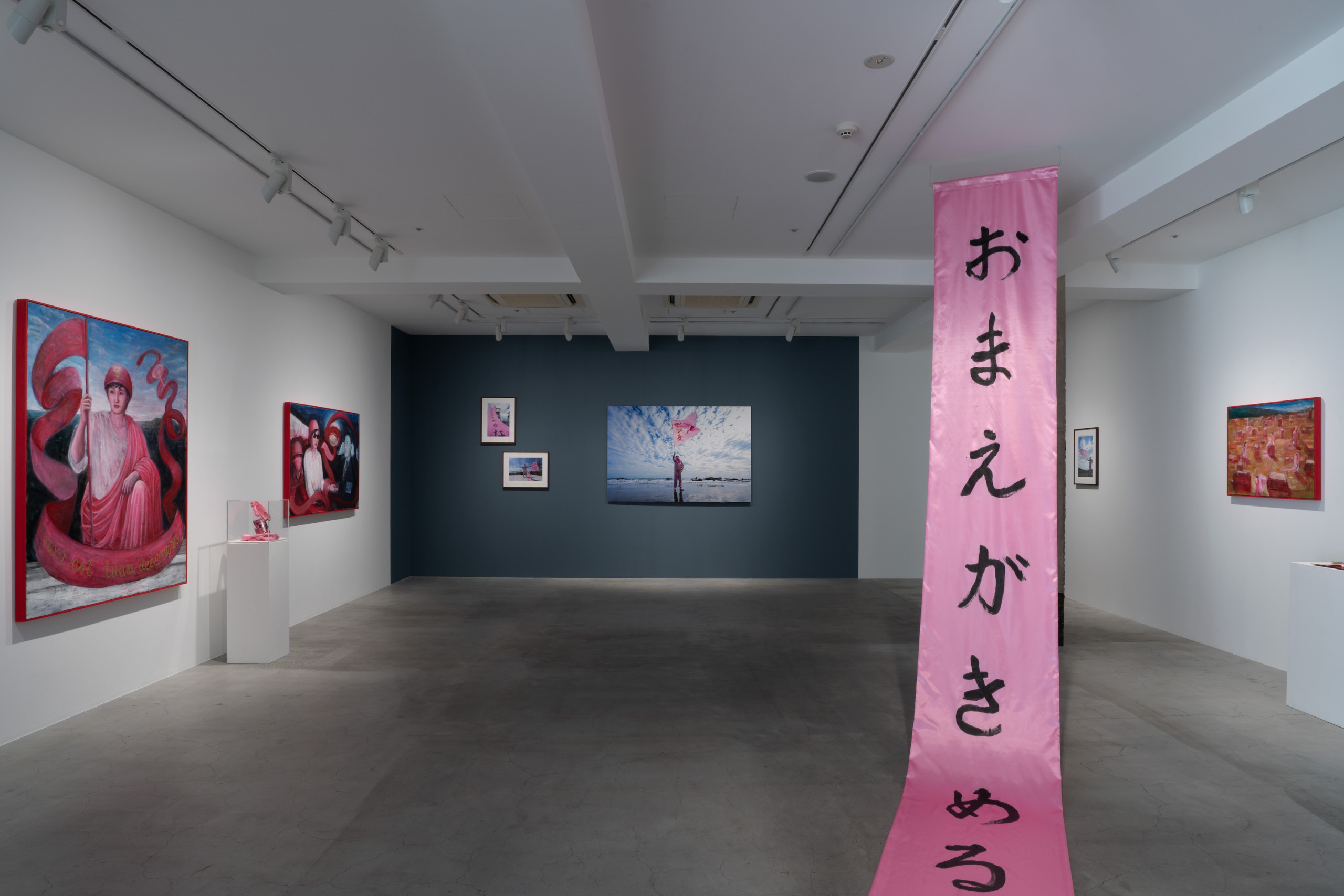
Ota Fine Arts was established in Tokyo in 1994. The gallery represents Japanese and international artists who work in diverse mediums, from painting to installation, video, and craft. Represented artists range from the world-renowned Yayoi Kusama to emerging talents.
Ota Fine Arts opened additional spaces in Singapore in 2012 and Shanghai in 2017. Seeking to create a new context for contemporary art in the Asia Pacific that accounts for both local specificity and regional commonalities, the gallery program is also committed to showing artists from countries including China, Indonesia, the Philippines, and Singapore.
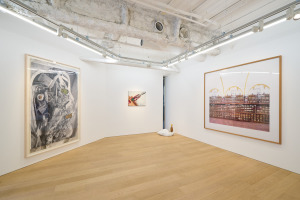
KOTARO NUKAGA
- E2
- E4
- Roppongi
- E2
- E4
- Roppongi
KOUR POUR AND REMBER YAHUARCANI
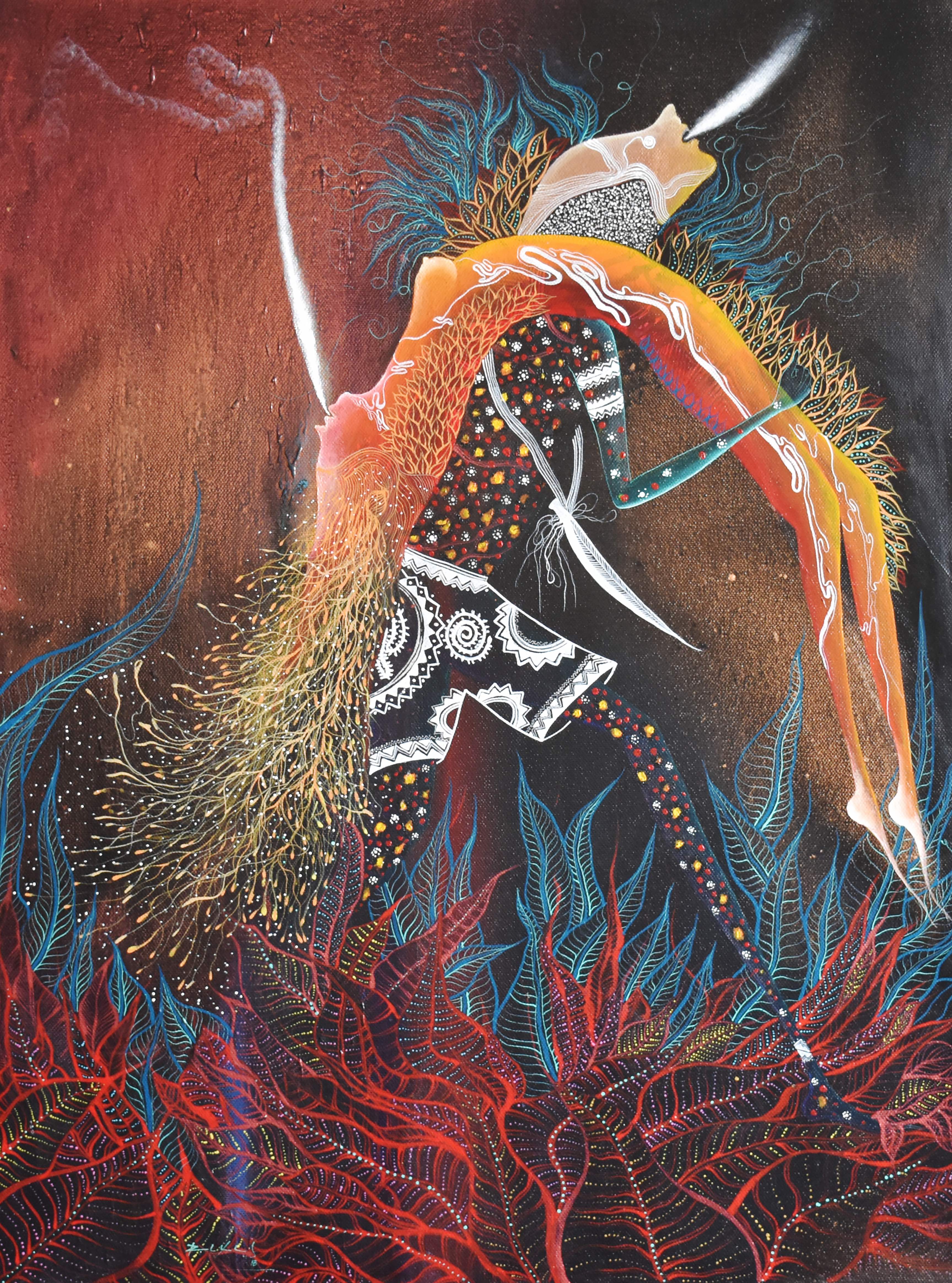
This two-person exhibition brings together works by Kour Pour and Rember Yahuarcani. Born in Exeter, England, and now based in Los Angeles, Pour achieved recognition as one of Forbes magazine’s “30 Under 30” in both 2015 and 2017 on account of his distinctive “carpet paintings” that combine Persian motifs with elements taken from Japanese ukiyo-e woodblock prints and Western abstract painting. Yahuarcani, a member of the White Heron clan of the Uitoto Nation of northern Amazonia in Peru, is known for paintings that combine iconography from Uitoto mythology with Western art traditions and techniques. He uses vivid colors and delicate linework to depict the daily life of the Uitoto people and the connections between plants, animals, humans, and spirits in the Amazon. Yahuarcani’s works are also on view in this year’s 60th Venice Biennale.
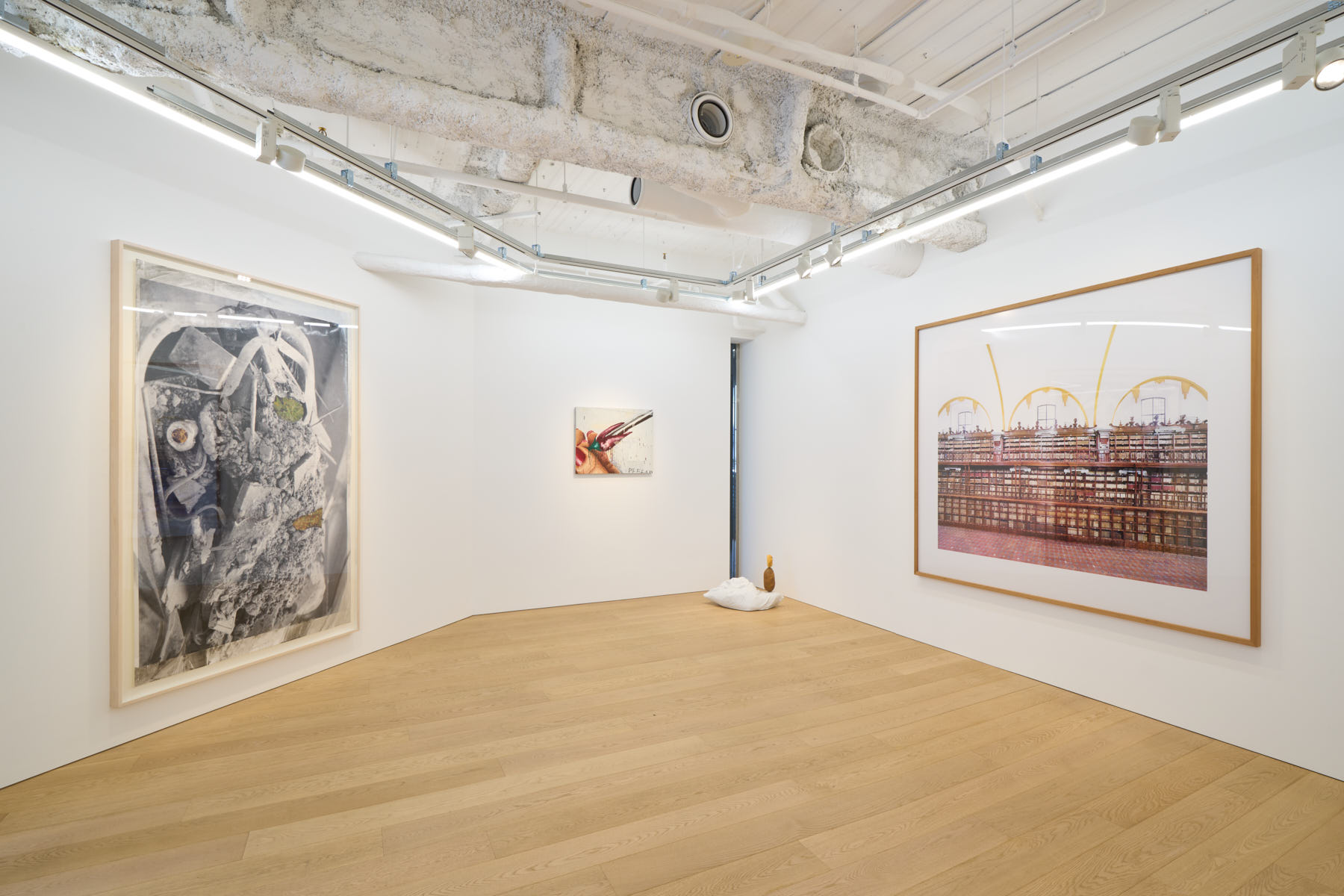
Kotaro Nukaga was founded in 2018 as a platform for thought-provoking ideas and daring sociopolitical confrontations. The gallery program employs an interdisciplinary lens that spans diverse cultural and academic fields, approaching art through its historical, cultural, social, scientific, and aesthetic contexts in order to reinterpret the past, gain new perspectives on the present, and imagine possible futures. The gallery seeks to promote its artists’ practices through an understanding of the dynamics of the current art ecosystem while also supporting projects that push beyond existing frameworks. Kotaro Nukaga has two spaces in Tokyo—one in Roppongi, a cultural hub bustling with new ideas, and the other in Tennozu Isle, a location that is currently gaining traction as a new center of contemporary art in the city.
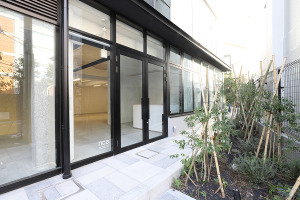
NCA | NICHIDO CONTEMPORARY ART
- D10
- Roppongi
- D10
- Roppongi
LIM SOKCHANLINA
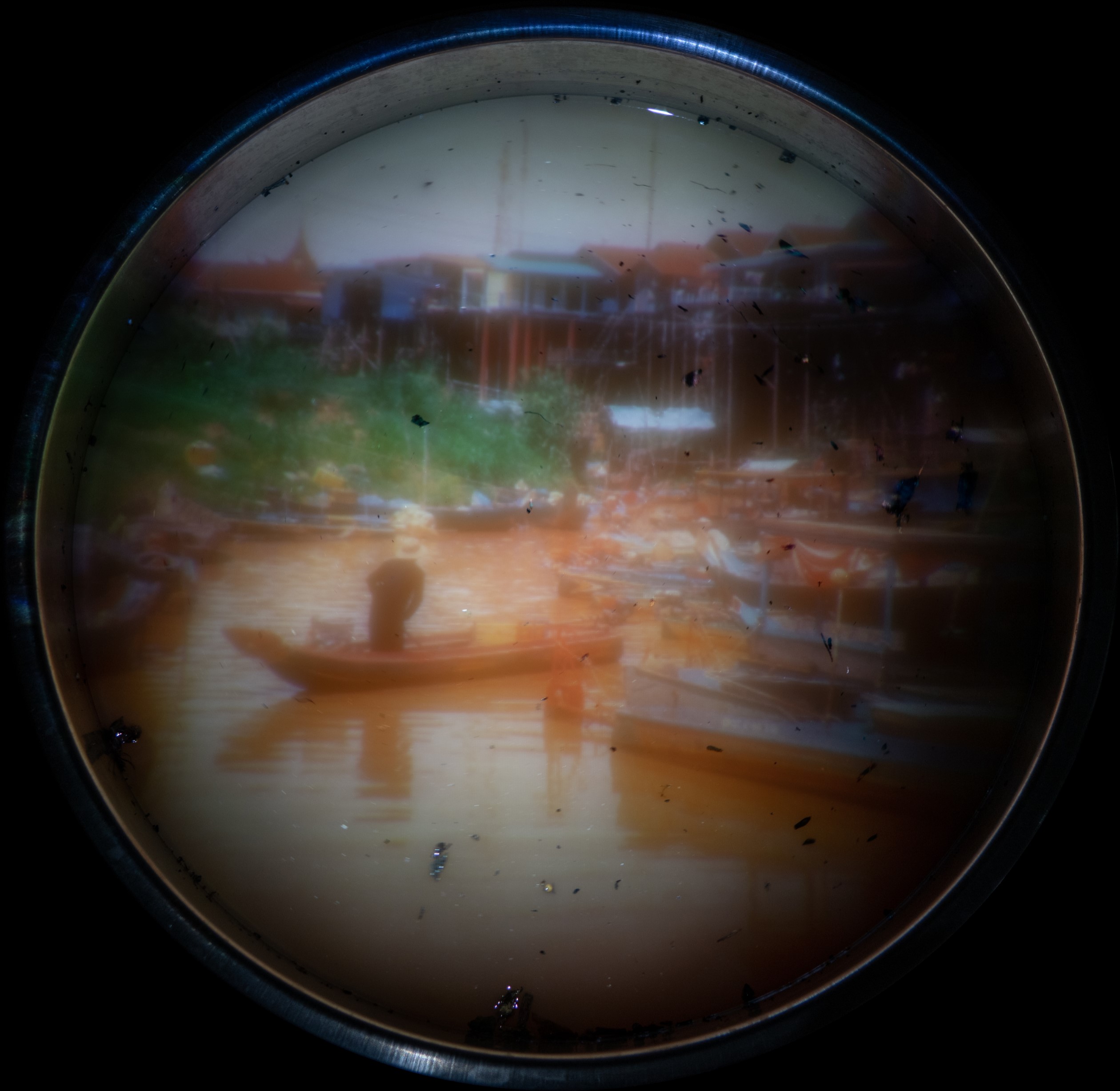
Lim Sokchanlina uses mediums including photography, video, and performance to draw attention to political, economic, environmental, and cultural issues in contemporary Cambodia, where he was born and still lives. Through his daily practice he documents the rapidly changing society and landscape caused by massive global inflows of capital and competing political agendas, sounding a cautionary alarm about a future where local communities, culture, and nature are lost. This exhibition will present new works by the artist.
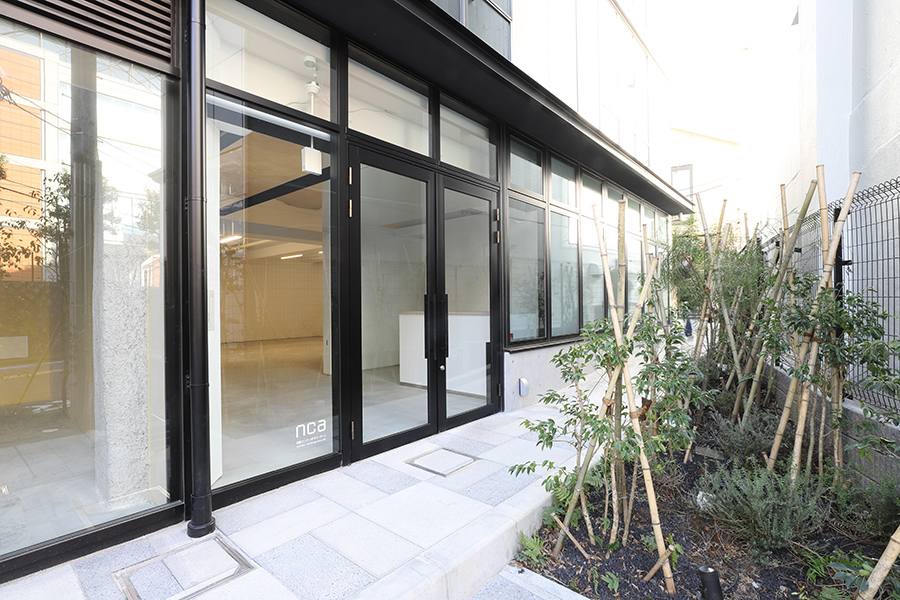
Opened in 2002, nca | nichido contemporary art is the contemporary branch of galerie nichido, the pioneering Ginza-based gallery established in 1928. Continuing its predecessor’s mission of promoting culture through innovative projects and exhibitions, nca features a program of up-and-coming Japanese and international artists. Since 2015 the gallery has expanded the scope of its program to actively promote Asia’s contemporary art scene.
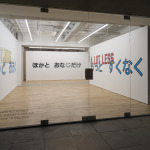
TARO NASU
- E2
- E4
- Roppongi
- E2
- E4
- Roppongi
JONATHAN MONK AND SALVATORE MANGIONE
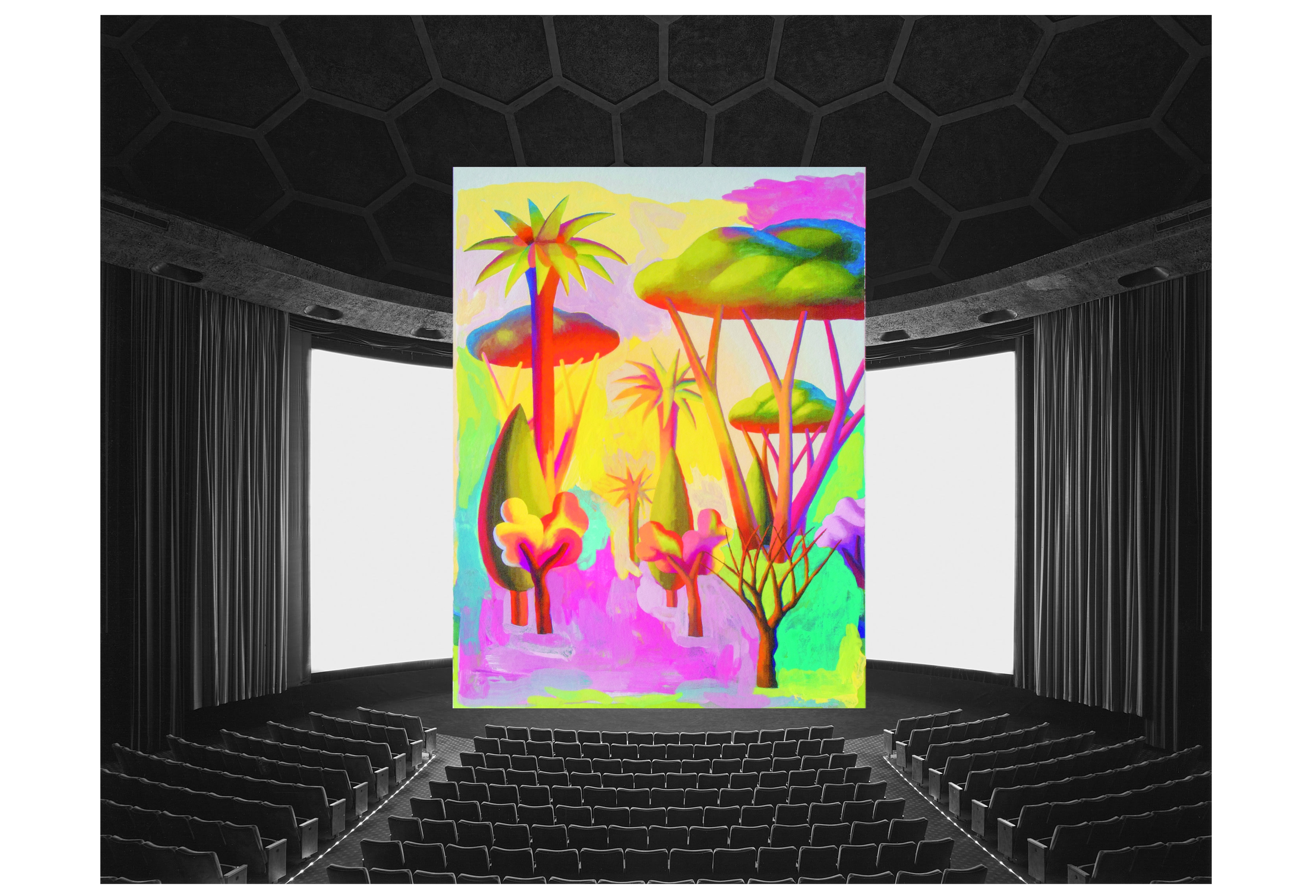
Active as a painter since the early 1960s, Italian artist Salvatore Mangione, known as Salvo, at one point made and sold inexpensive portraits, landscapes, and forgeries of works by famous artists to earn a living. British artist Jonathan Monk, on the other hand, has produced an ongoing series of works called Salvo Trees since 2016. In these works, Monk reproduces images of Salvo’s landscape paintings by inkjet printing them on blank A4 paper or atop fashion editorials, magazine advertisements, and furniture catalogues before covering their backgrounds with gouache and watercolor, leaving only the trees from the original composition. Further developing the use of appropriation in his practice, Monk focuses on the concept of repetition to shed light on Salvo’s artistic methods. In addition to new Salvo Trees works, this exhibition will also feature works by Salvo himself.
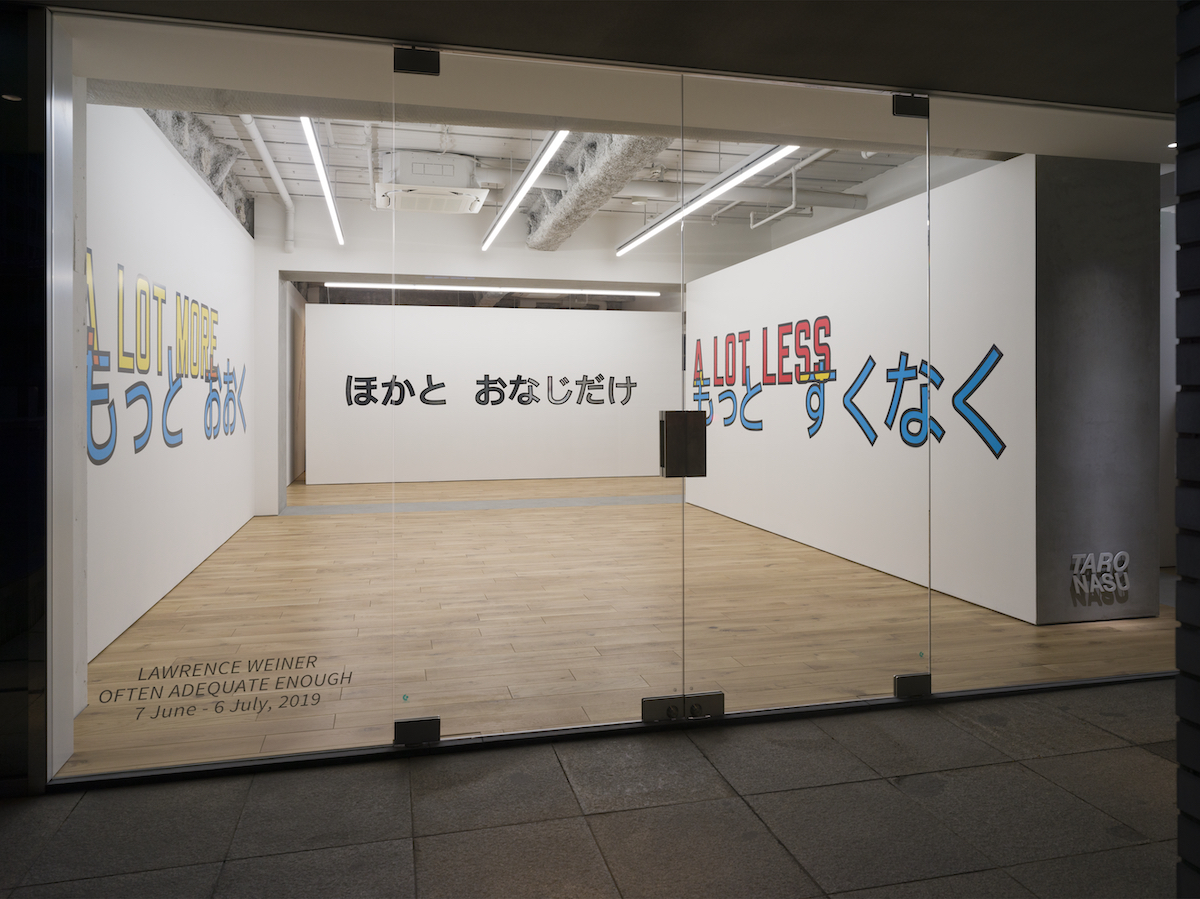
Taro Nasu was founded in 1998. The gallery represents conceptual artists including Futo Akiyoshi, Koichi Enomoto, Simon Fujiwara, Ryan Gander, Liam Gillick, Maiko Haruki, Takashi Homma, Pierre Huyghe, Ryoji Ikeda, Taiji Matsue, Mika Tajima, Michiko Tsuda, and Lawrence Weiner. Beyond its regular program, Taro Nasu also works with international art museums and public agencies to organize a range of other exhibitions and events.
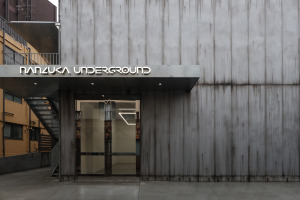
NANZUKA UNDERGROUND
- D7
- Harajuku
- D7
- Harajuku
ROBY DWI ANTONO
Born in Indonesia in 1990, the self-taught Yogyakarta-based artist Roby Dwi Antono grew up in a household that encouraged his artistic ambitions by allowing him to draw freely on the walls at home. Inspired by his artistic idols, such as Mark Ryden and Yoshitomo Nara, Antono’s singular visual language forges connections between classical Renaissance artworks, Futurism, and Surrealism, as well as science fiction and natural history. His brand of contemporary Surrealism is filled with chimerical figures made up of human, animal, and alien elements mixed with mythological creatures and pop cultural icons. On display in this solo exhibition will be paintings on canvas and wood, single-channel video installations, and drawings in oil stick, oil pastel, and pencil.
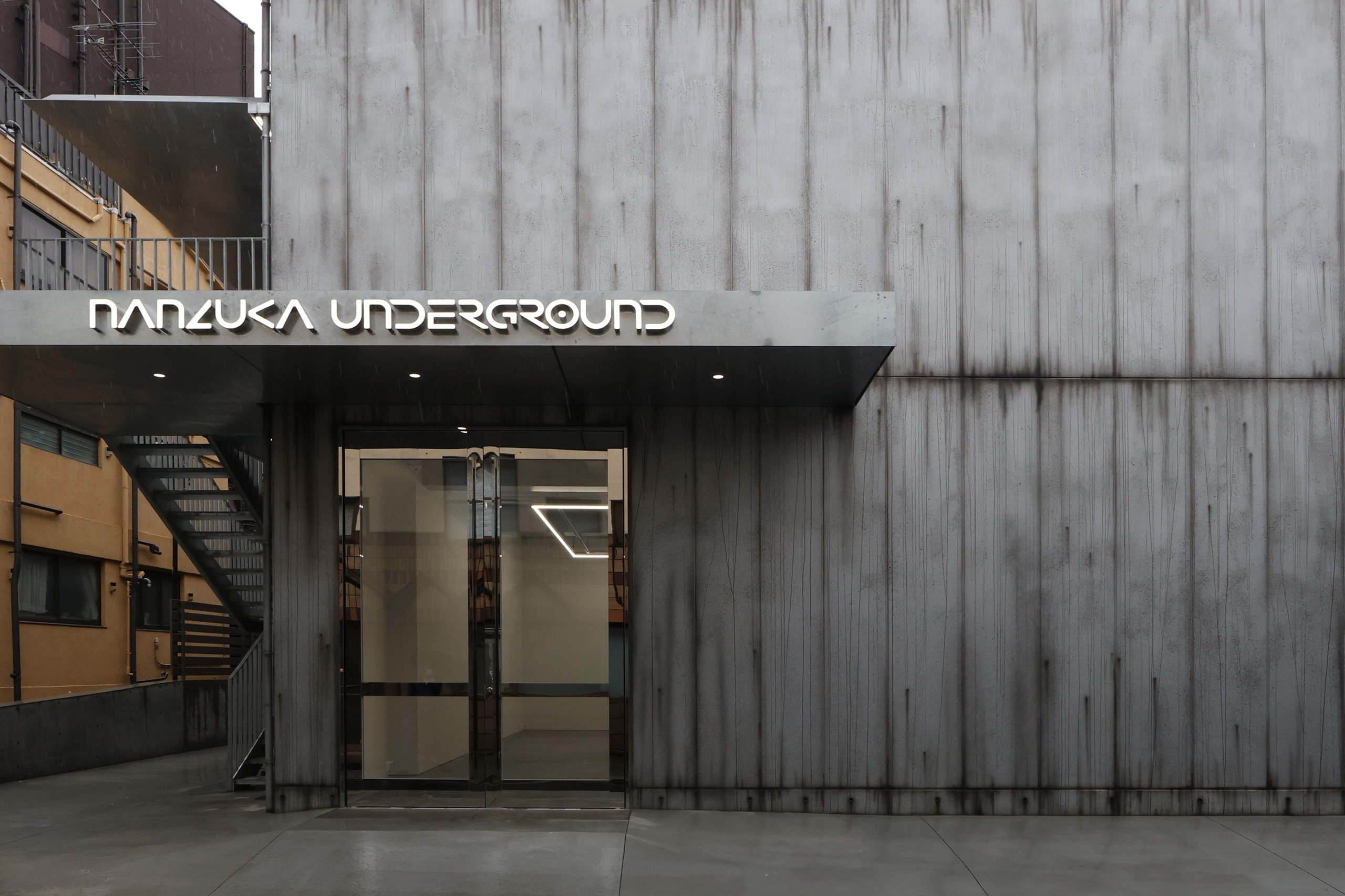
Nanzuka Underground was founded in 2005 in Shibuya as an experimental space dedicated to redefining design, illustration, street culture, fashion, music, and other creative fields as subjects for rigorous study. In particular the gallery aims to rediscover figures who were not considered “fine” artists by the Japanese art world that developed after World War II, including Toshio Saeki, Hajime Sorayama, Keiichi Tanaami, and Harumi Yamaguchi. Nanzuka Underground collaborates with many international galleries to support the broader reception of emerging Japanese artists such as Haroshi, Masato Mori, Ryuichi Ohira, Makoto Taniguchi, and Hiroki Tsukuda. The gallery also works with international artists to introduce global perspectives on contemporary art to Japan.
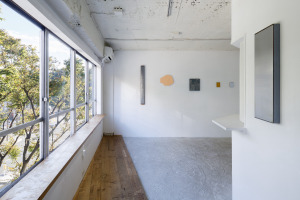
KEN NAKAHASHI
- D4
- Shinjuku
- D4
- Shinjuku
YUKI HARADA
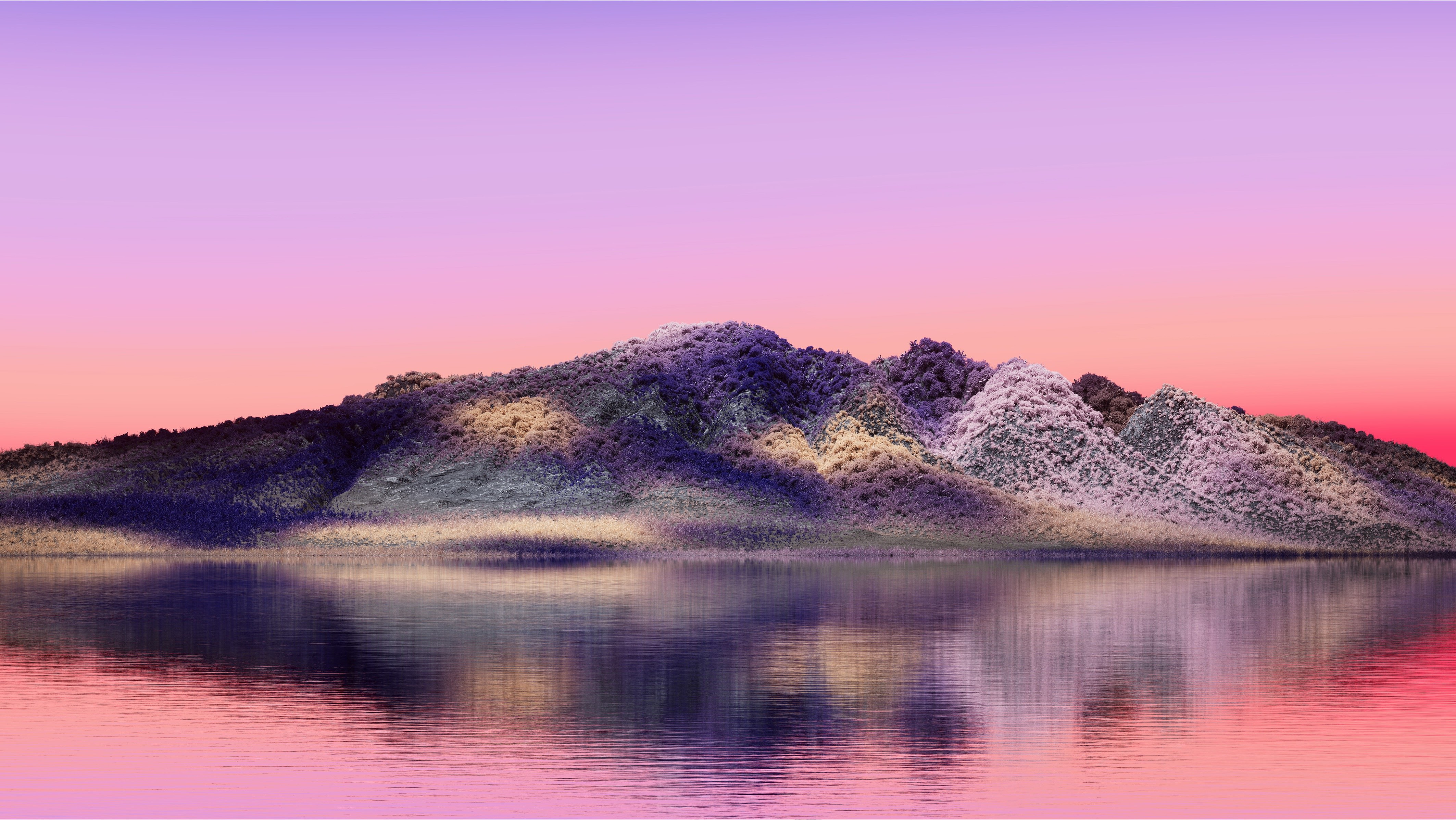
Yuki Harada employs technology and performance in his works to explore the overlooked elements of visual culture. In this exhibition, Harada will debut his first-ever series of two-dimensional works, Dreamscape (2024). The series draws inspiration from the genre of digital landscape art known as “dreamscape,” which emerged around the year 2020. Harada interprets these dreamscapes, which are characterized by a surreal sense of stillness, security, and sterility, as “landscapes that reflect contemporary global circumstances and the state of the planet.” Among the works in the Dreamscape series are Home Port (2024), inspired by the history of the town of Lahaina on the island of Maui, and Afterglow (2024), which depicts the mountains of Iwakuni, Harada’s hometown in western Japan.
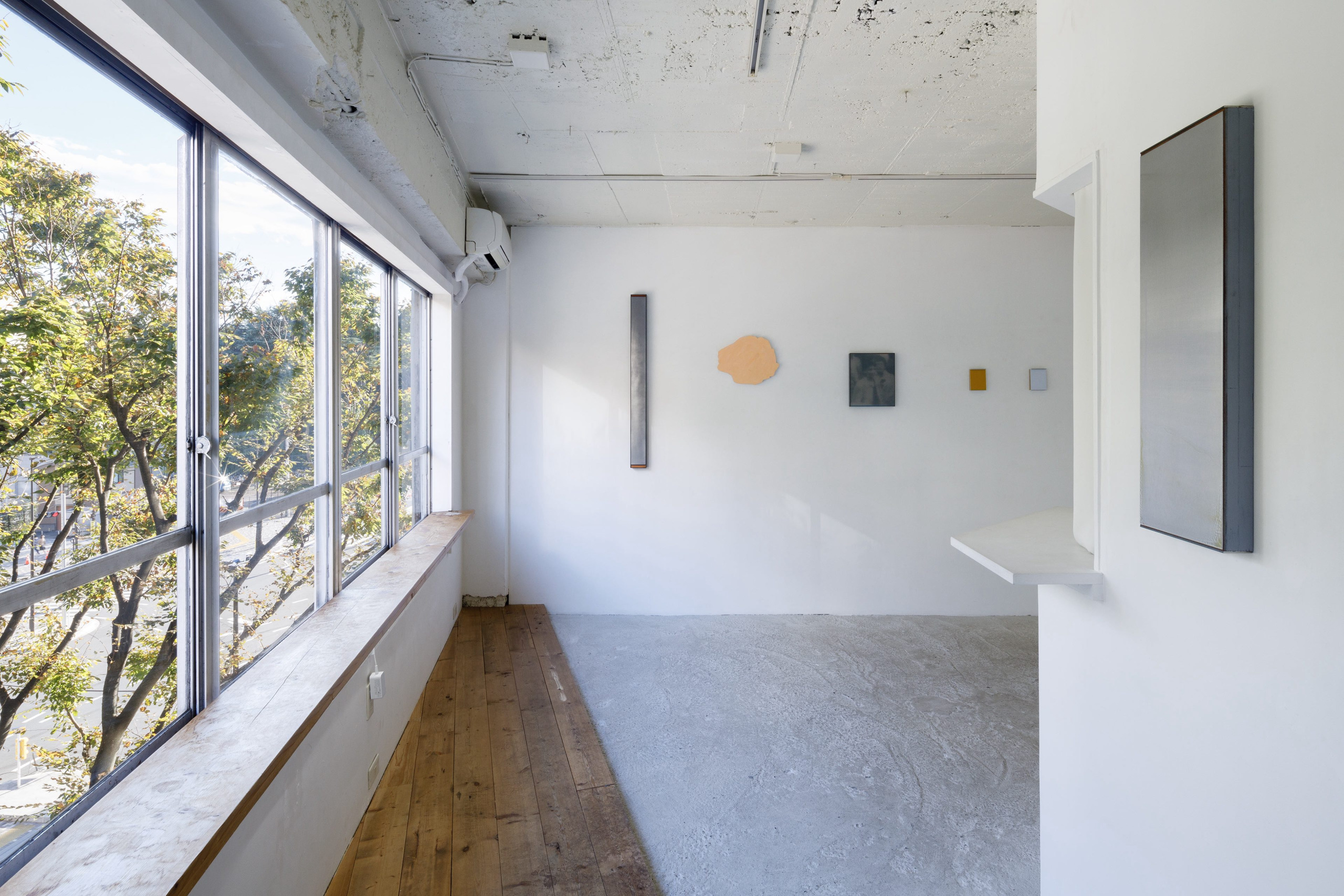
Ken Nakahashi was established in 2014 with a commitment to finding new ways of understanding the dynamics between art and humanity. The gallery shows artists who investigate various issues of global society against the backdrop of our ever-expanding collective history. Represented artists include Yuki Harada, Eiki Mori, Masaharu Sato, and Erik Swars, among others.

MUJIN-TO PRODUCTION
- B4
- Kinshicho
- B4
- Kinshicho
MEIRO KOIZUMI: ALTAR
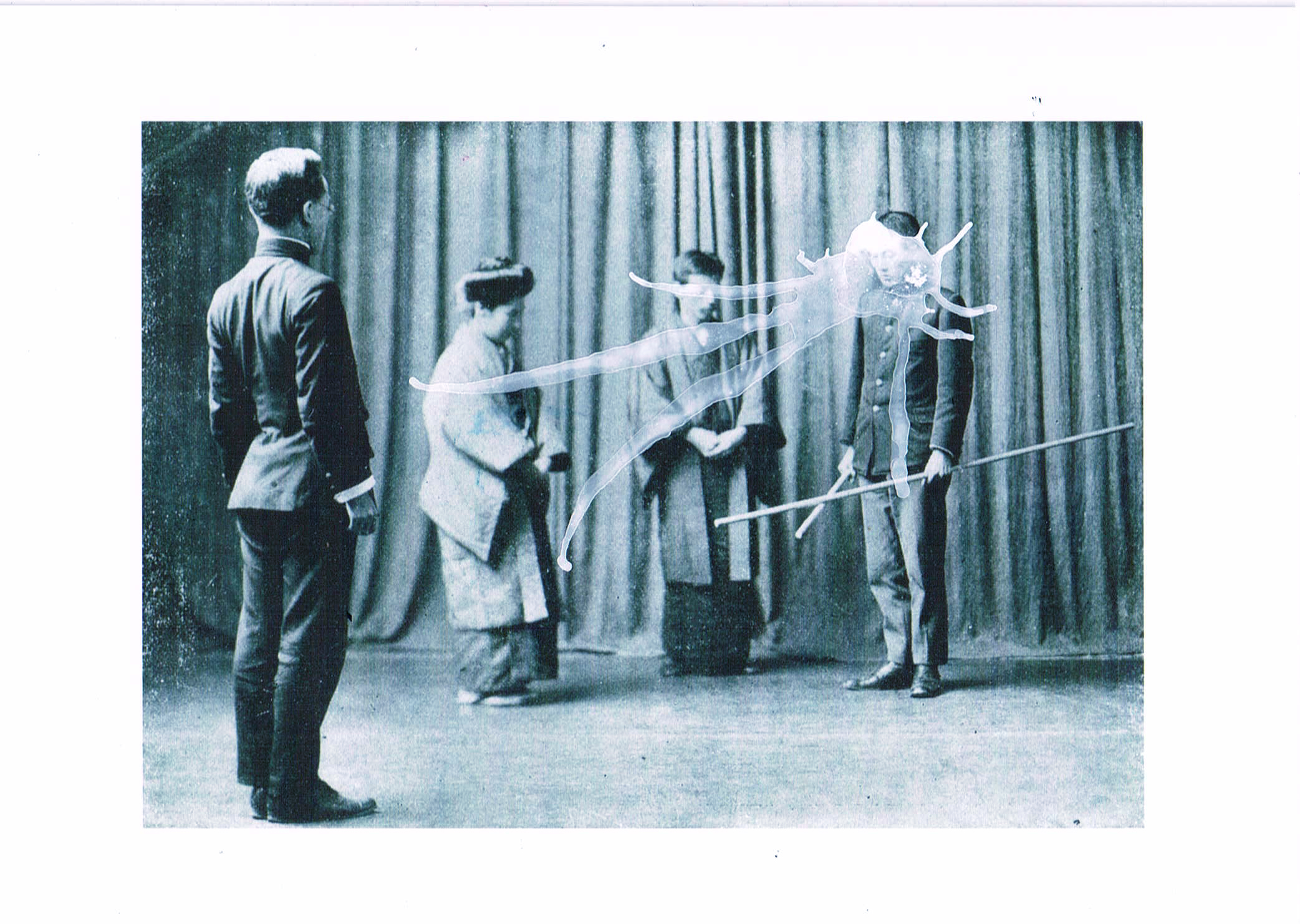
Born in 1976 in Gunma Prefecture, Meiro Koizumi employs diverse practices, including video, performance, and drawing, to address the power dynamics of the family and the nation, the boundaries between private and public, and the unwritten social codes dictating collective obligations in Japanese society and culture. Through the creation of elaborately choreographed scenarios, Koizumi shows how these invisible social forces determine everything from the trajectory of individual behavior to the course of national history. His works pack an emotional charge that can range from sharp irony and dark comedy to earnest psychological intensity. This solo exhibition will feature a selection of new sculptures and installations.
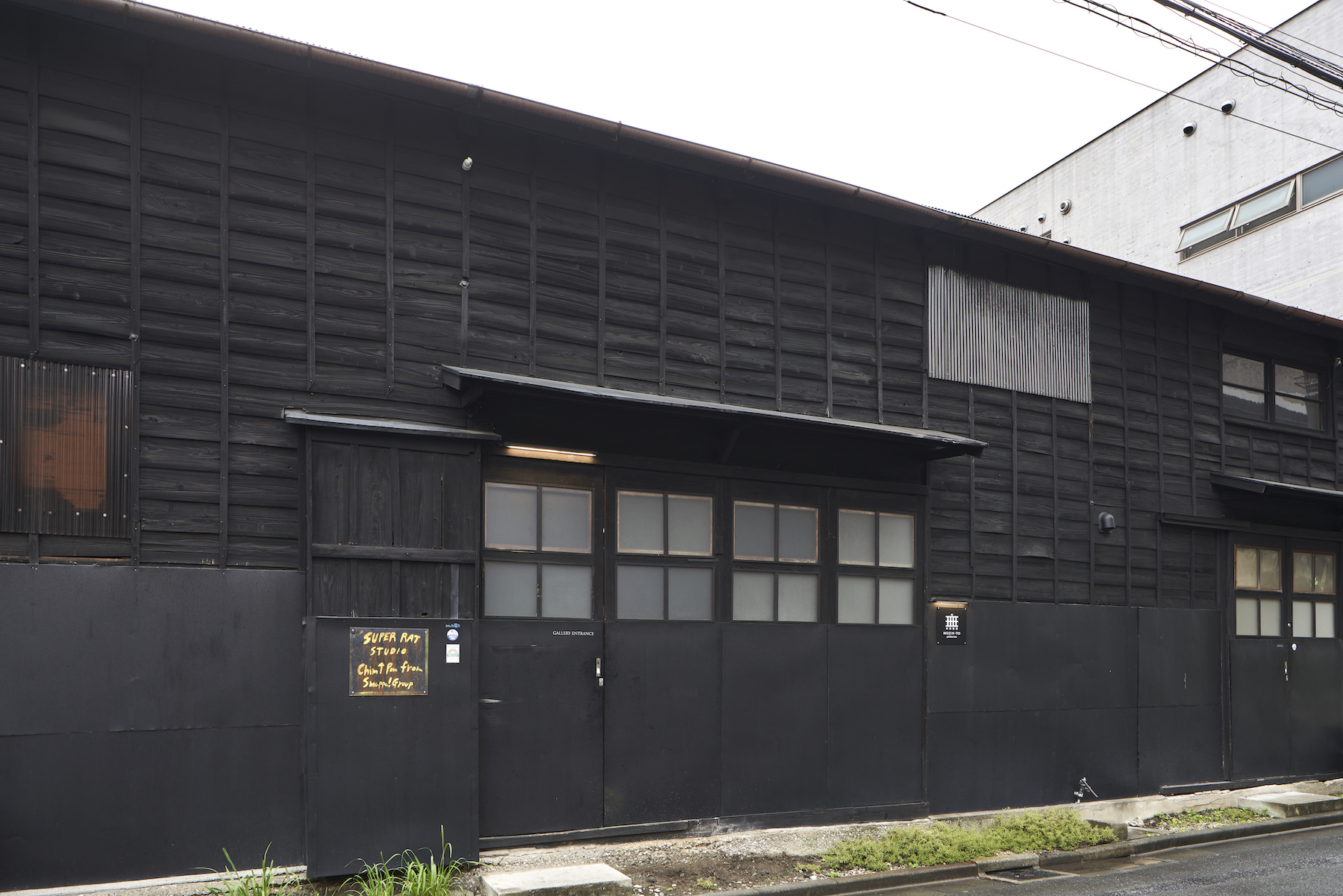
Since its establishment in 2006, Mujin-to Production has promoted outstanding emerging and midcareer artists and art collectives from Japan through exhibitions, experimental projects, and presentations at local and international art fairs. The gallery is a fearless advocate of the artists it represents, many of whom engage social issues in their work. Beyond its exhibition program, Mujin-to Production publishes books and DVDs to foster deeper understanding of the gallery artists’ practices.
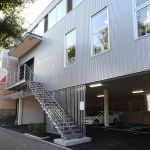
MIZUMA ART GALLERY
- A2
- Iidabashi
- A2
- Iidabashi
SATORU AOYAMA
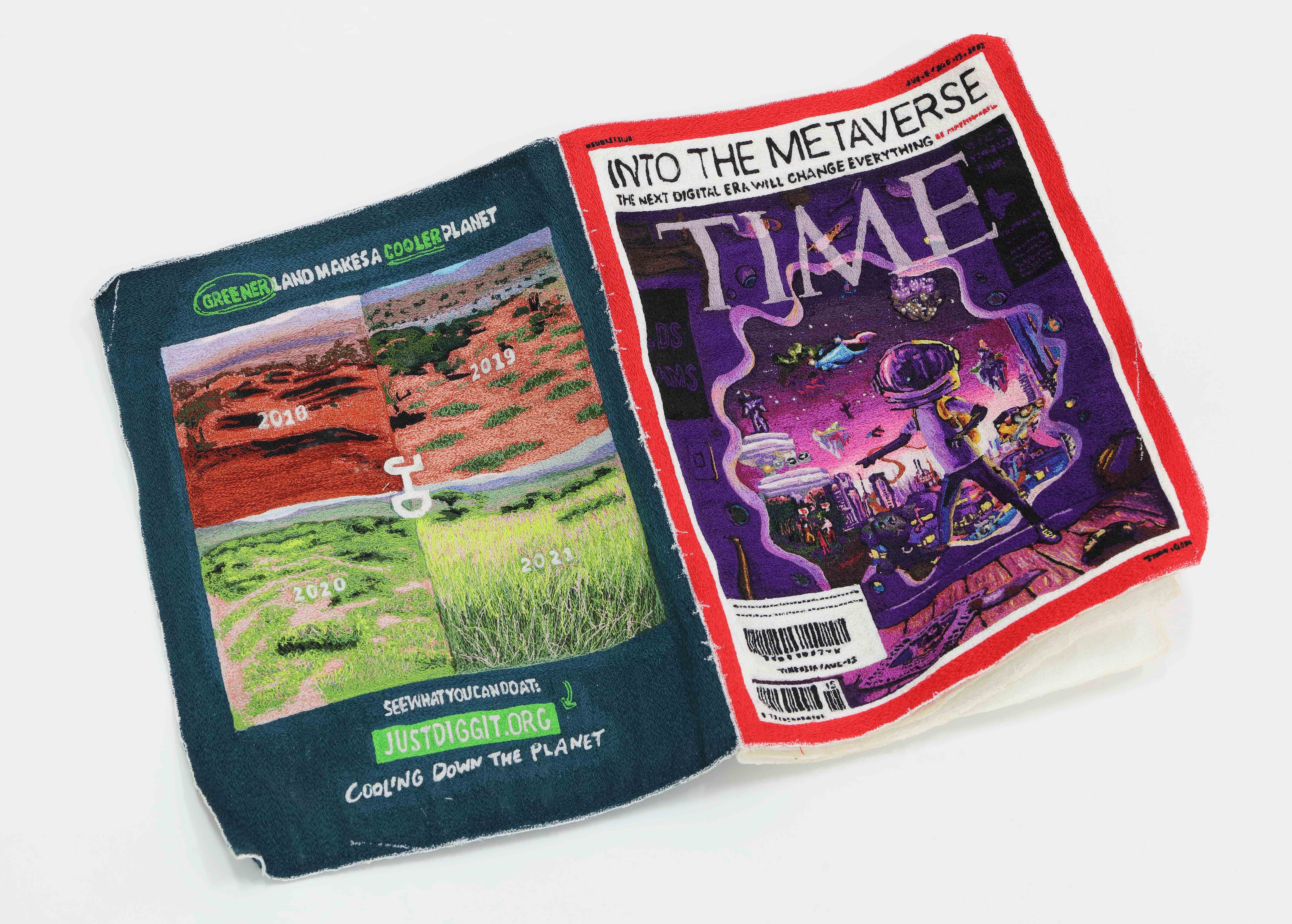
Satoru Aoyama, who studied textiles at Goldsmiths College in London and fiber and material studies at the School of the Art Institute of Chicago, is known for his meticulously detailed embroidery works. Produced with industrial sewing machines, these works expand the boundaries of the medium of embroidery while also raising questions about human labor, technology, and modernization. Aoyama’s recent solo exhibition at the Meguro Museum of Art, “A Boy Who Sews Forever,” showcased works inspired by things that have disappeared or become obsolete with the passage of time, including the school he used to attend in Tokyo’s Meguro district and Labor Day demonstrations in New York City. Building on these themes, this solo exhibition will feature a series of works focusing on things and people that are disappearing from today’s capitalist society.
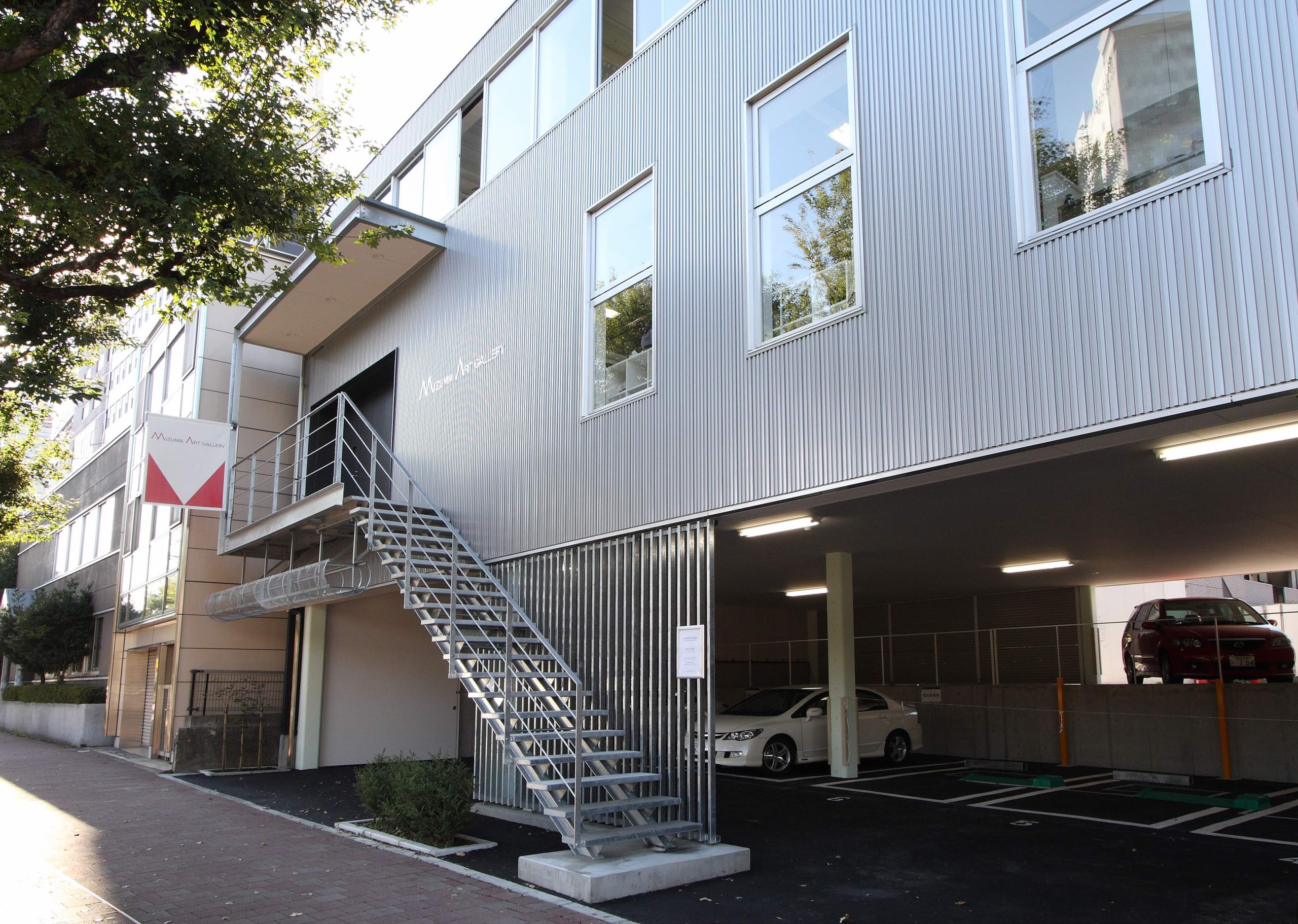
Executive Director Sueo Mizuma opened Mizuma Art Gallery in Tokyo in 1994. Since its founding, the gallery has represented artists from Japan and, increasingly, the surrounding regions whose works exhibit unique sensibilities unaffected by stylistic trends. Matching the rapid expansion of Asia’s contemporary art market, Mizuma Art Gallery established additional spaces in Beijing and Singapore in 2008 and 2012, respectively. In 2014 the gallery opened the artist residency space Rumah Kijang Mizuma in Yogyakarta to facilitate exchanges between Indonesian and Japanese artists. Mizuma Art Gallery is an active participant in international art fairs, including Art Basel Hong Kong and the Armory Show in New York, and continues to support and promote many internationally active artists.
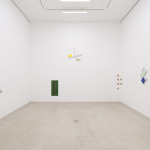
MISAKO & ROSEN
- A5
- Otsuka
- A5
- Otsuka
MAUREEN GALLACE
Born in 1960, American artist Maureen Gallace is known for her intimate paintings of rural and coastal New England. Her landscapes are typically devoid of people, featuring vague contours and soft, muted colors that evoke a faint nostalgia. Although Gallace studied under David Salle at Rutgers University while working toward her MFA, the flattened perspective and omission of detail in her work has little in common with the postmodern expressionism that Salle represents, displaying instead a strong affinity with the early American modernism of Edward Hopper or Milton Avery. This exhibition will feature a selection of small paintings.
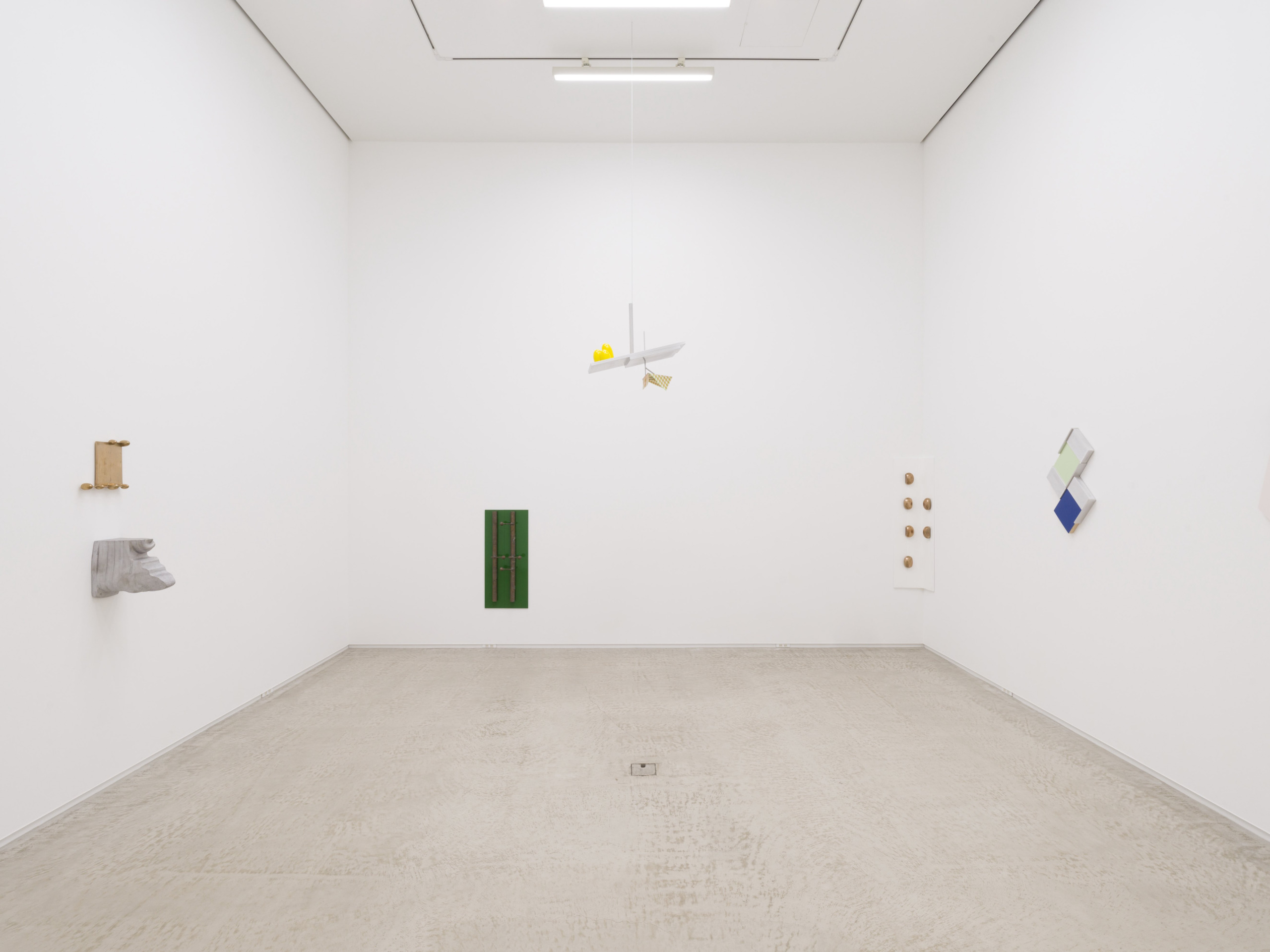
Opened in 2006, Misako & Rosen represents Japanese and international artists whose practices take a critical approach to the contemporary world without shying away from humor.
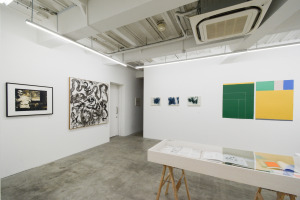
MEM
- C6
- Ebisu
- C6
- Ebisu
ON MONO, KOTO, AND IMAGE
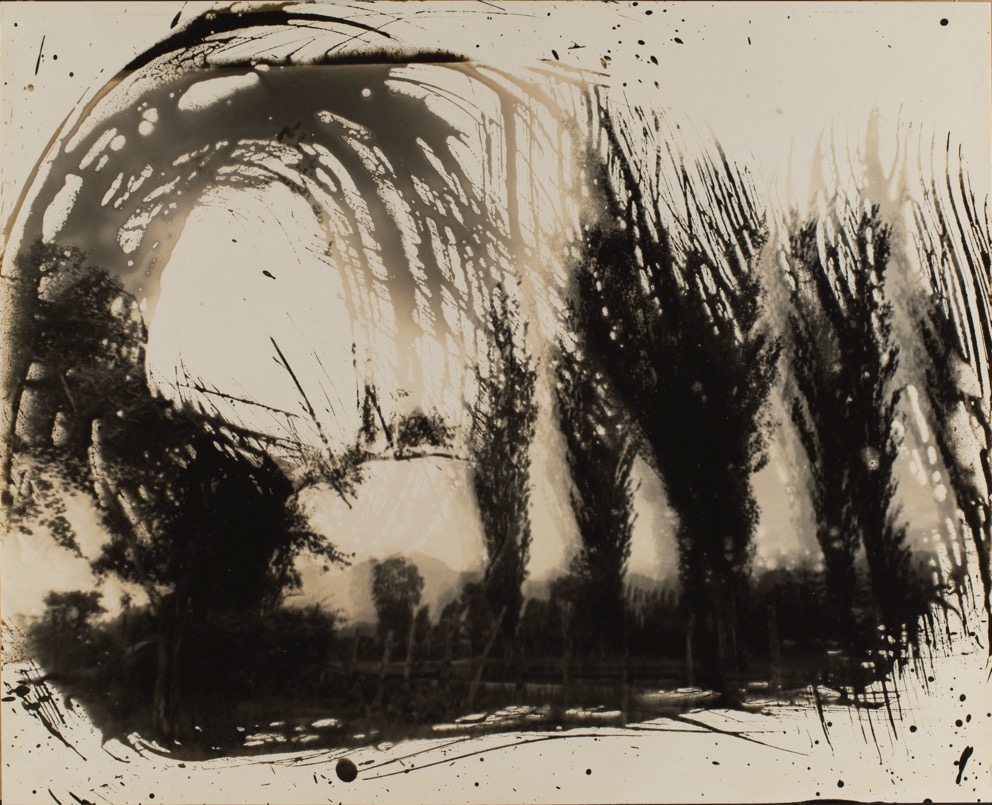
This exhibition takes its starting point from mono and koto, two concepts that are said to shape thought and creation in Japanese art. Often translated as “material,” “object,” or “thing,” mono refers to an object that occupies space or a form that is perceptible by the human senses. Carrying the sense of “incident” or “event,” koto, on the other hand, refers to an abstract object of thought, consciousness, phenomena, action, or character.
One of the artists featured in this group exhibition, Shigeru Onishi (1928–1994) studied topology and theoretical mathematics before turning to photography as a way of expressing his mathematical theories through art. He later shifted to working in avant-garde calligraphy and abstract ink painting, making work that the influential curator and critic Michel Tapié showed in Europe alongside pieces by Gutai artists in the late 1950s and 1960s. Recent years have seen a reevaluation of Onishi’s photographic output and his use of experimental techniques including multiple exposure, discoloration, and color tone manipulation using temperature. Alongside Onishi’s works, the paintings, drawings, prints, photographs, and videos by the other participating artists tease out the implications of mono and koto in modern and contemporary Japanese artistic practices
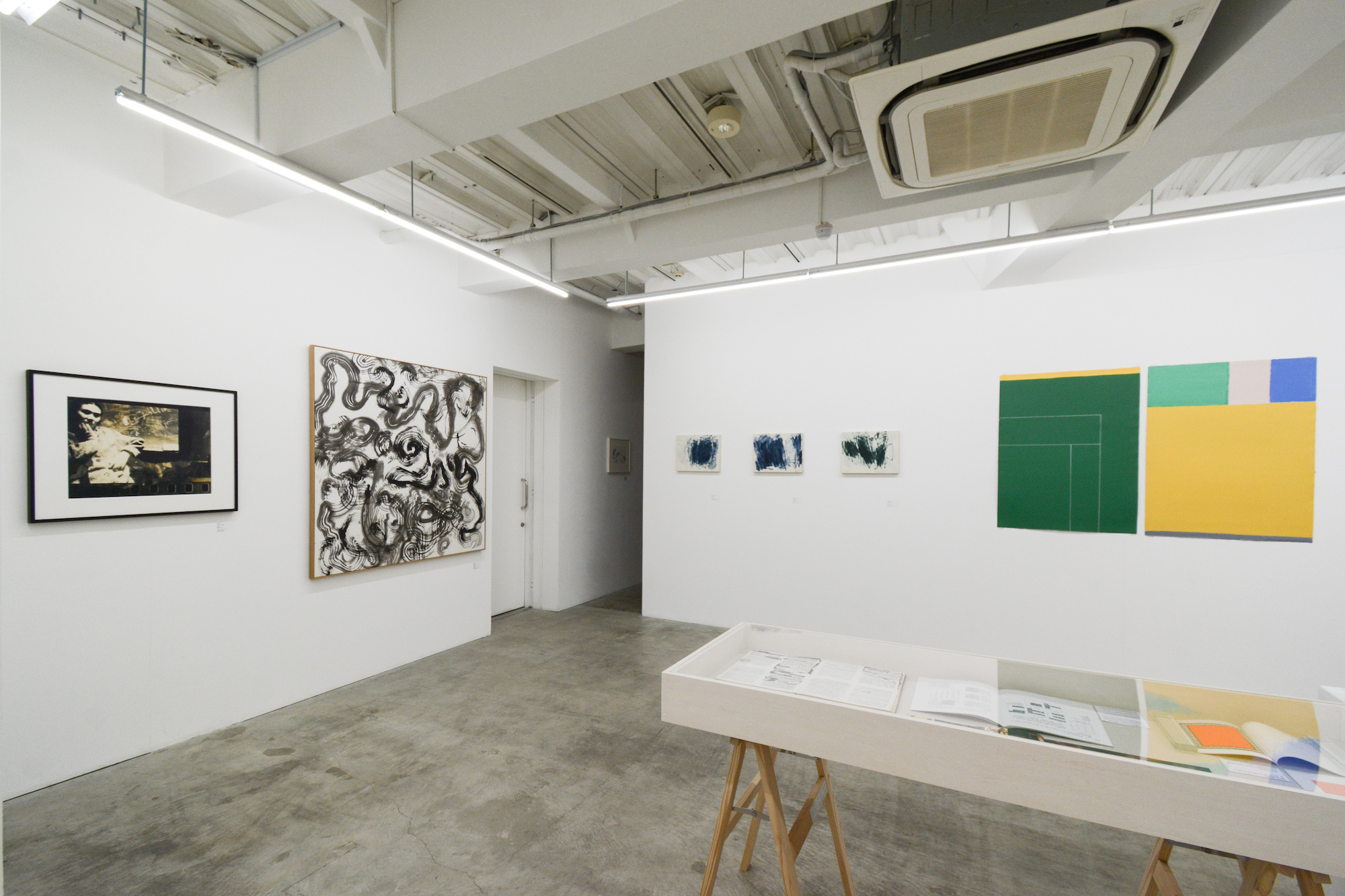
MEM (Multiply Encoded Messages) was founded in Osaka in 1997 and moved to Tokyo in 2010. The gallery serves as an intersectional zone between artists and the public: a collaborative arena where experimental projects and artworks are conceived and exhibited, and where the multiplication of encoded messages can inspire new thinking.
Initially, MEM represented established artists who emerged in the 1980s in the Kansai region and were working in new media, such as video and photography, including Tomoaki Ishihara, Yoshio Kitayama, Chie Matsui, Kimiyo Mishima, and Yasumasa Morimura. Upon relocating to Tokyo, the gallery extended its program to add emerging artists, such as Ayano Sudo and Natsuko Tanihara. It also strengthened its focus on photography by organizing exhibitions for Antoine d'Agata, Ken Kitano, Katsumi Omori, and other contemporary photographers.
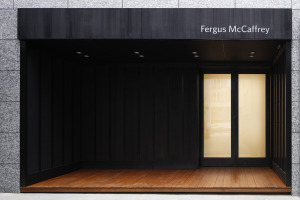
FERGUS MCCAFFREY
- D2
- Omotesando
- D2
- Omotesando
KAZUO SHIRAGA & AKIRA KANAYAMA: PLUS-MINUS
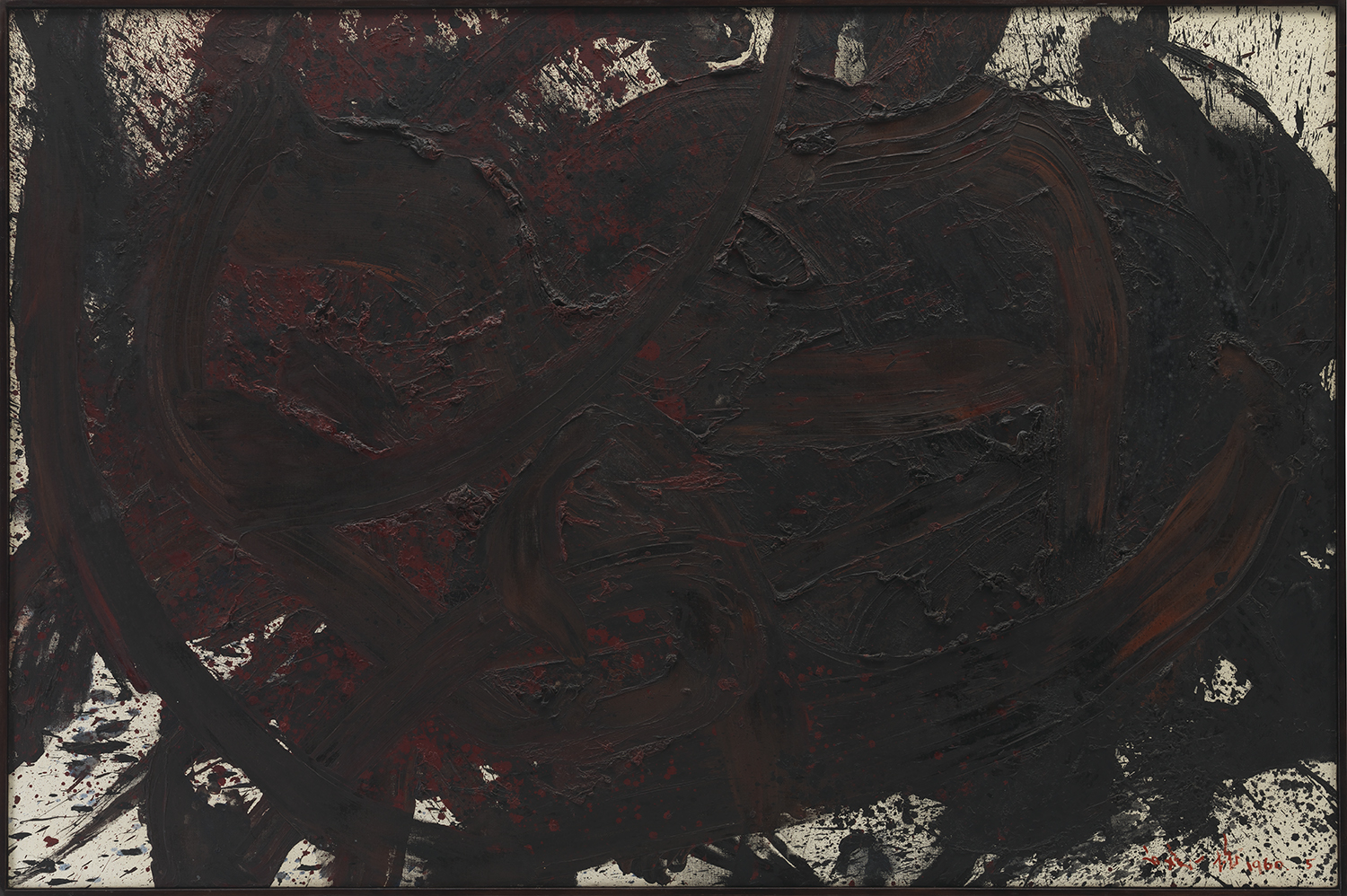
“I said to him, ‘You [Kanayama] seem to like cold abstraction, so why don’t you explore the extremities of that? I like hot abstraction, so I’ll explore the opposite extreme.’ We promised to do that and said, ‘You are here, I am here.’ And that is how I conceived the theory of Plus-Minus.” —Kazuo Shiraga
Fergus McCaffrey is pleased to present a two-person exhibition of Gutai artists Kazuo Shiraga (1924–2008) and Akira Kanayama (1924–2006). “Plus-Minus” focuses on both artists’ highly individualistic and innovative methods of painting that fulfilled the Gutai mantra of “making art that has never been seen before.” Shiraga relied on raw physicality and expressive bodily gestures, as seen in his foot paintings, while Kanayama embraced techniques and materials associated with mass production and consumption—such as acrylic paint, motors, and robots—as well as repetitive geometric patterns. This exhibition celebrates the centennial of the birth of both of these Gutai artists.
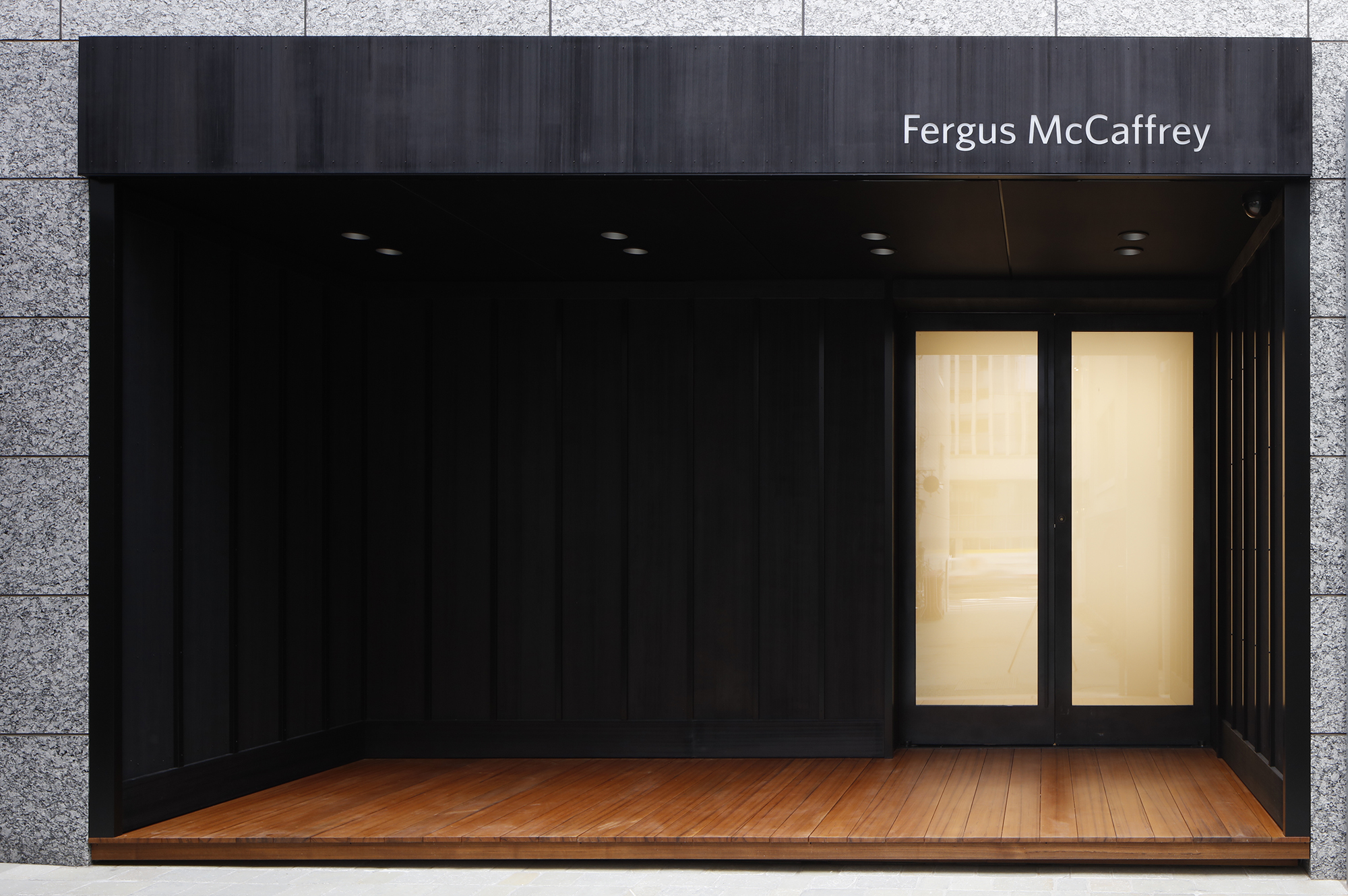
Founded in 2006, Fergus McCaffrey is internationally recognized for its promotion of postwar and contemporary art from Japan, Europe, and the United States. The gallery runs a multifaceted program and represents 24 artists and estates worldwide.
Fergus McCaffrey has locations in Tokyo, New York, and St. Barth. The gallery opened its Tokyo outpost in March 2018 with a show of paintings by Robert Ryman and has since exhibited such artists as Matthew Barney, Jasper Johns, Shigeko Kubota, Carolee Schneemann, Richard Serra, Kazuo Shiraga, and Min Tanaka.
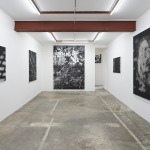
LEESAYA
- C9
- Meguro
- C9
- Meguro
SHUSUKE TANAKA
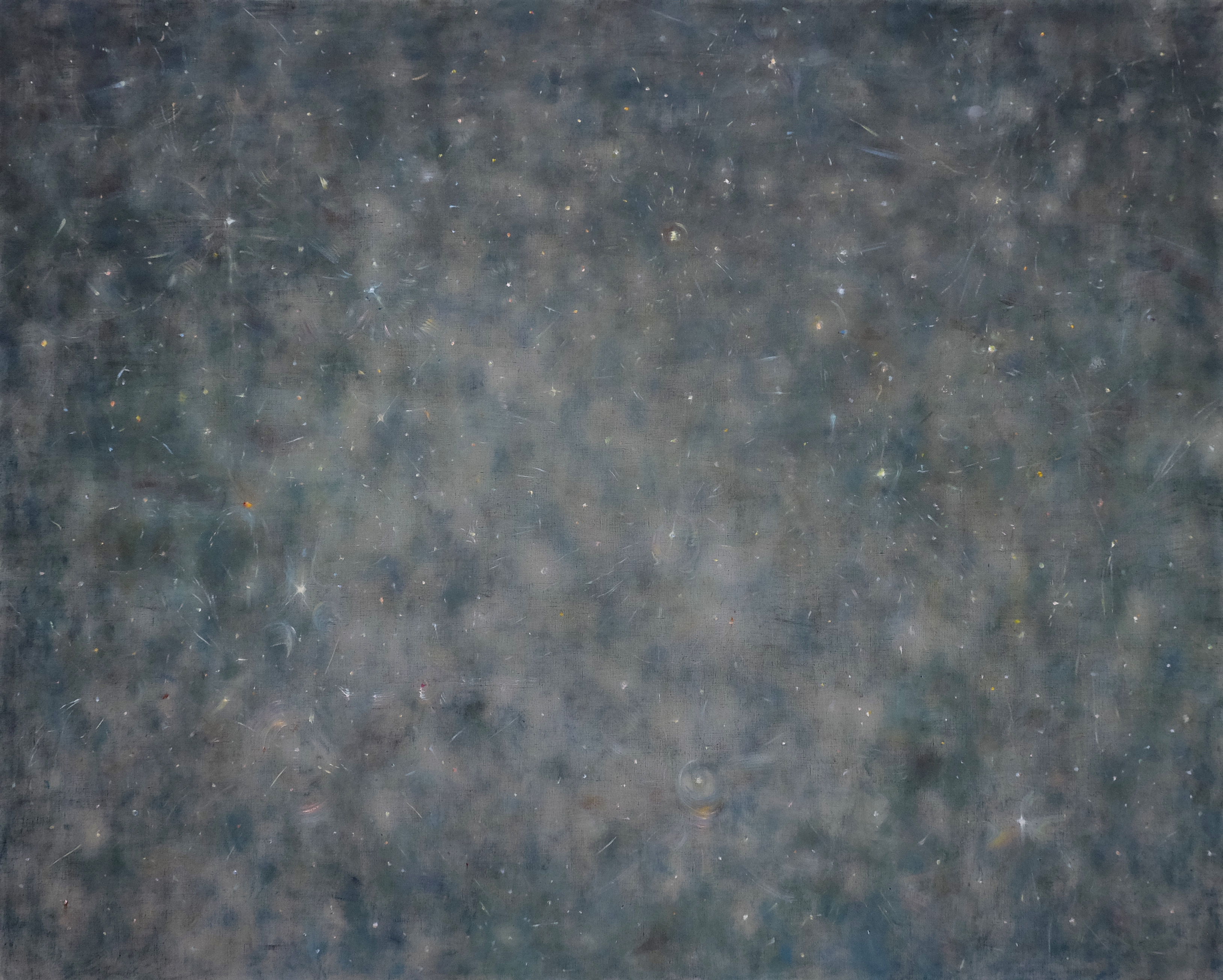
Osaka-based artist Shusuke Tanaka’s painting practice is grounded in a desire to depict the wonder in everyday life. For his 2022 exhibition “Painting through the Museum” at the Osaka Museum of Natural History, Tanaka produced, for example, a series of large paintings that sought to represent the experience of viewing objects like fossils and other specimens in the museum’s collection. Tanaka’s latest works approach the physicality of painting and its limited frame as a means of embodying the spontaneity of objects and scenes that appear in a particular configuration only once in a lifetime.
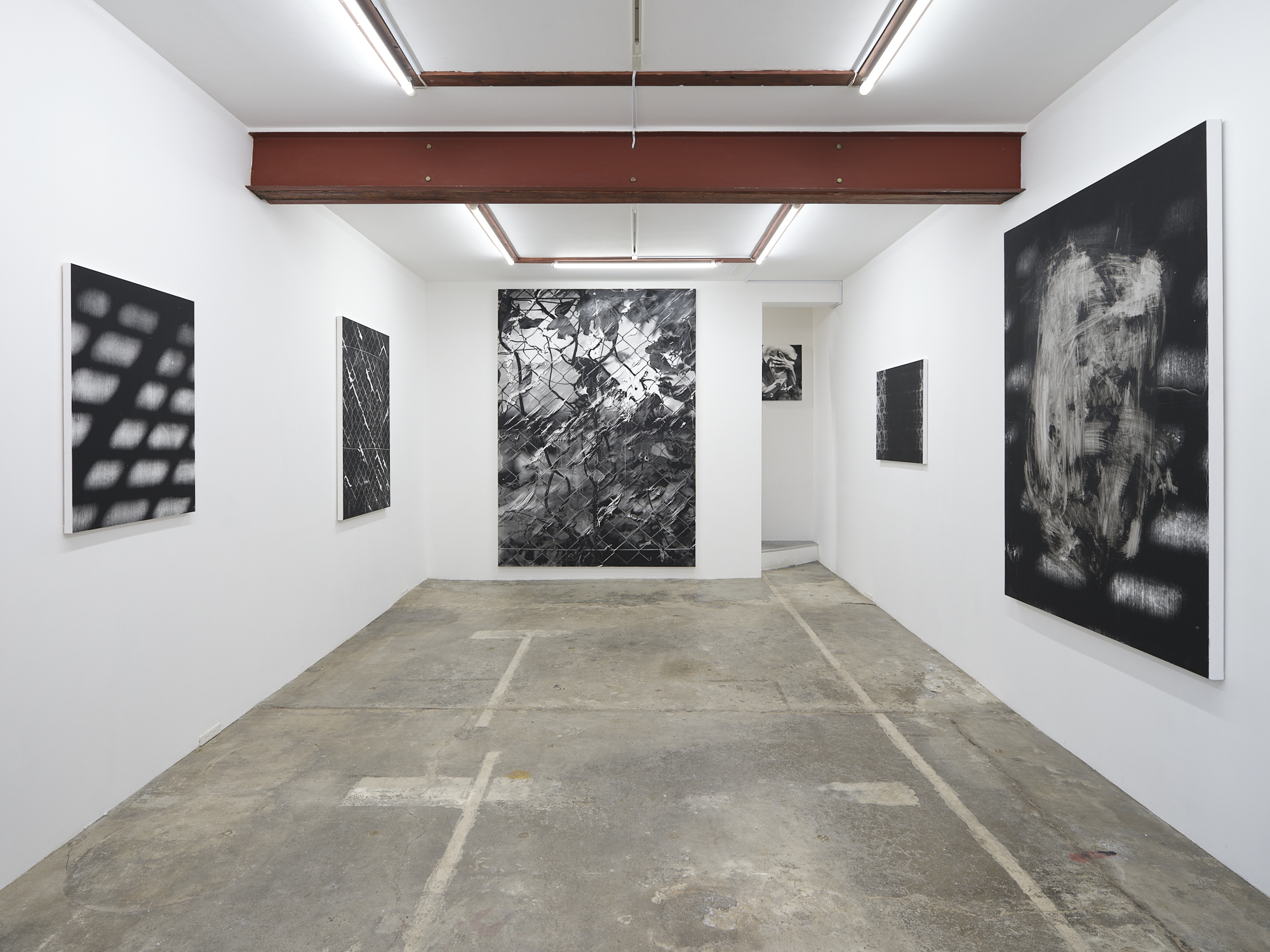
Leesaya was established in 2019 to nurture young artists who seek innovative modes of expression. The gallery collaborates with creators working across a wide range of practices to explore new possibilities of contemporary art.
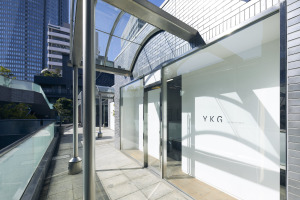
YUTAKA KIKUTAKE GALLERY
- E2
- E4
- Roppongi
- E2
- E4
- Roppongi
BIRDS
Featuring artists including Yukari Motoyama, whose works deconstruct the elements of painting, and Futoshi Miyagi, known for a practice that confronts his identity as a sexual minority, this group exhibition will explore the representation of birds in modern and contemporary Japanese literature and music. Also drawing on sources ranging from Olivier Messiaen’s 13-part piano solo Catalogue d’oiseaux (Catalogue of birds, 1956–58) to philosopher Alphonso Lingis’s book The Community of Those Who Have Nothing in Common (1994), the exhibited works will shine a new light on the otherness of birds as both hidden presences and sudden visitors in urban lives.
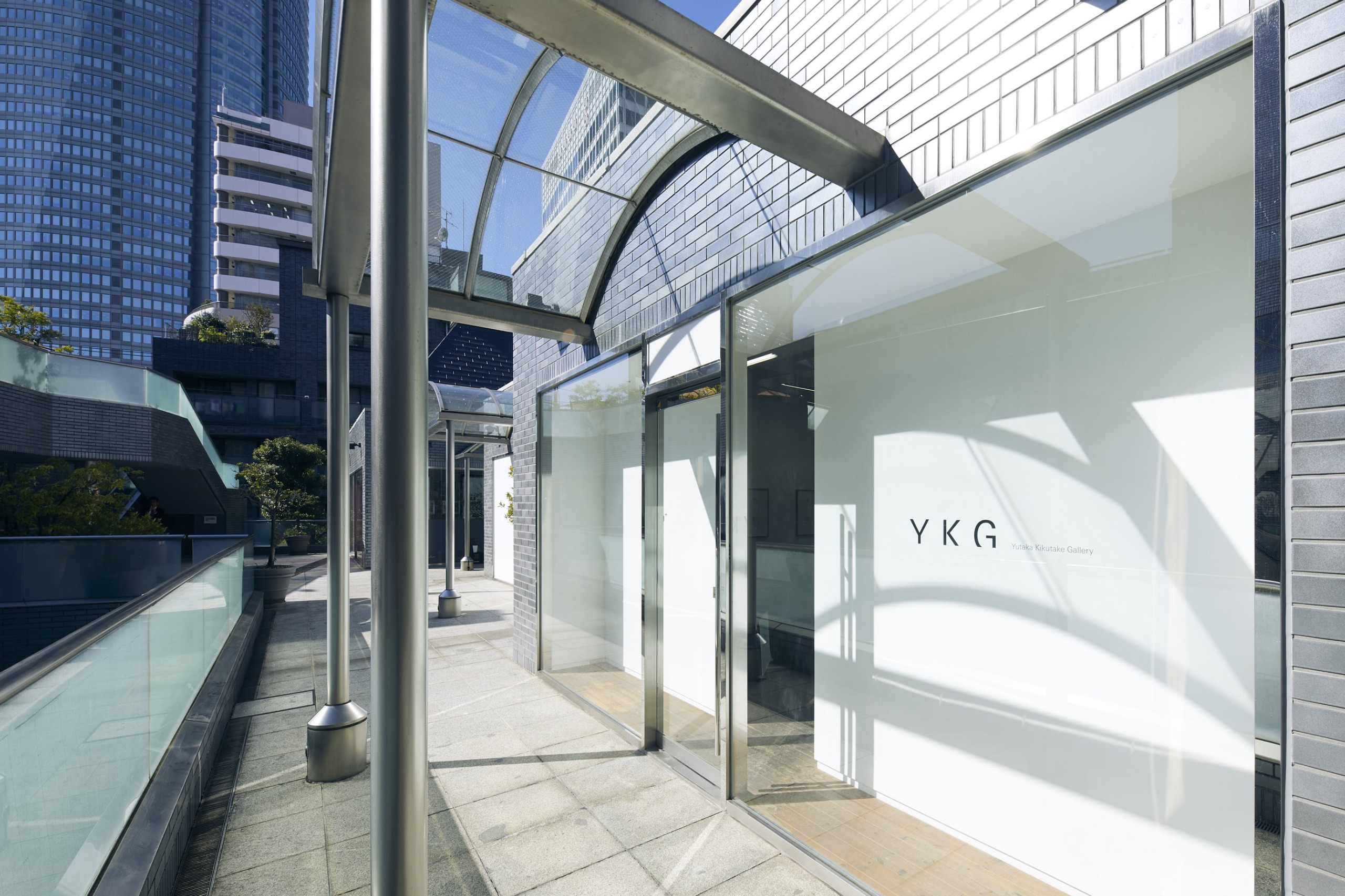
Yutaka Kikutake Gallery opened in Roppongi in 2015. The gallery is committed to adding to the diversity of contemporary art by supporting innovative modes of expression. Its exhibition program features Japanese and international artists who work in a broad range of mediums, from painting and photography to sculpture and film.
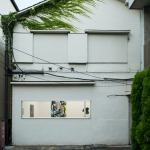
KAYOKOYUKI
- A7
- Komagome
- A7
- Komagome
YUTAKA NOZAWA
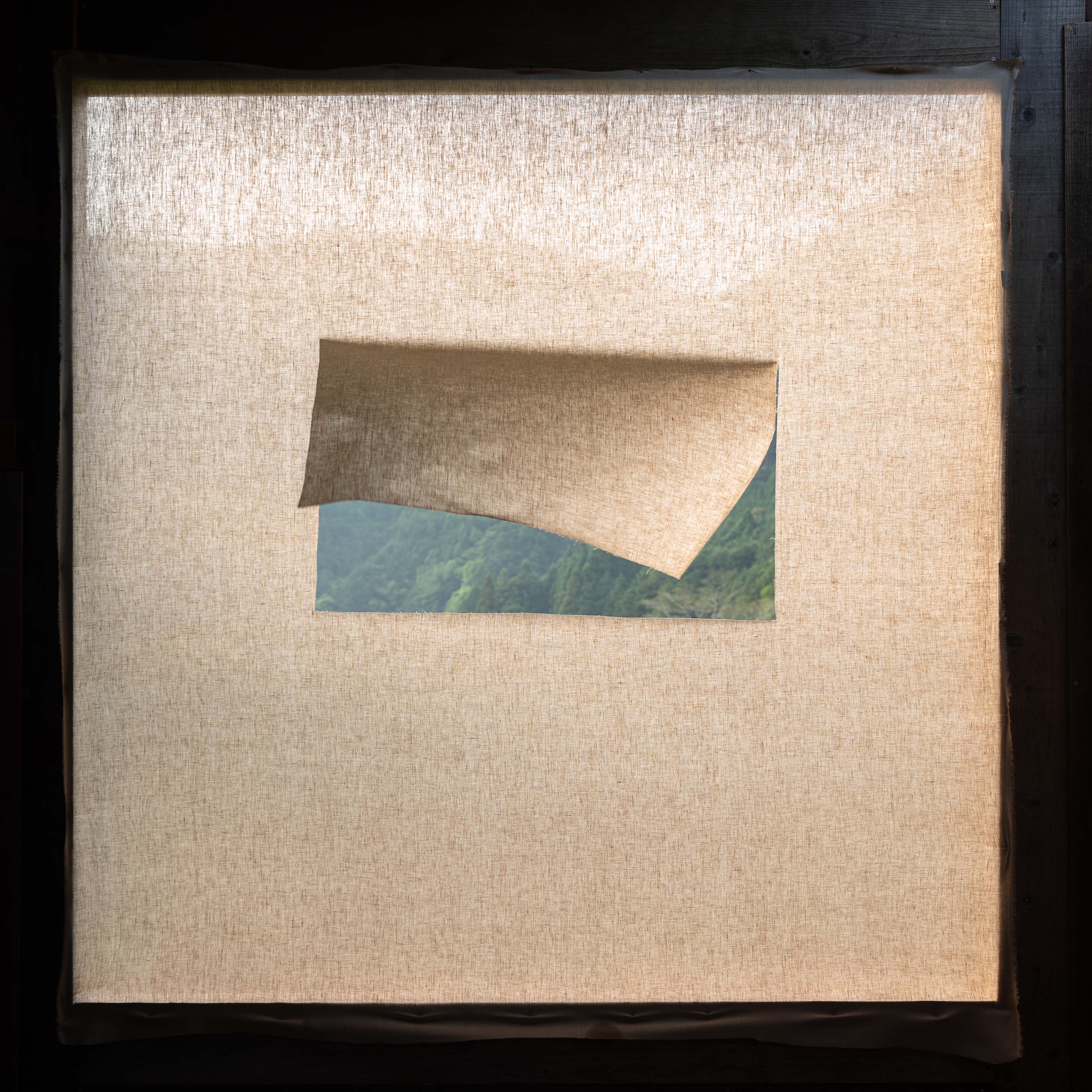
Working across installation, photography, and video, Yutaka Nozawa depicts humorous, staged situations where overlapping images and objects coexist and point to each other in a kind of self-referential loop. A series of printed photos mounted in acrylic frames, for example, depicts fragments of those same frames within the images, like visual riddles that challenge the viewer to decipher them. Nozawa’s multimedia installations, on the other hand, often contain complex arrangements of objects alongside printed photos that depict those objects within a three-dimensional installation space, producing a mishmash of referents and perspectives that provocatively frustrate any attempt at a cohesive interpretation. This exhibition will feature a selection of photographs, paintings, and videos by the artist.
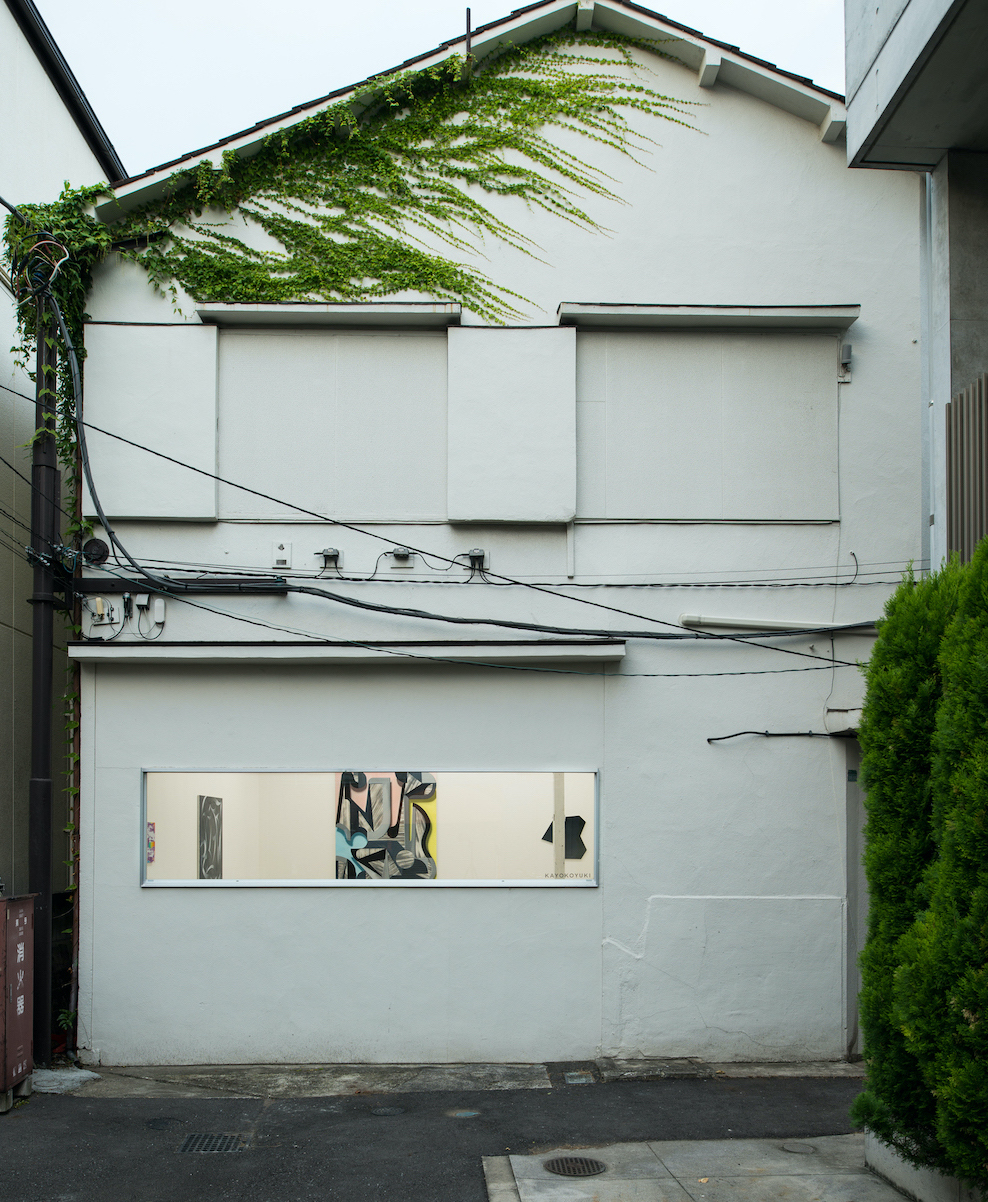
Kayokoyuki was founded by Kayoko Yuki in Tokyo in 2011 and has occupied its current converted warehouse space in Komagome since 2015. The gallery supports artists who use ephemeral imagery derived from objects in their everyday lives to reflect on their experiences and create works that propose new ways of coexisting at a time of increasing social polarization.
Kayokoyuki participates in international art fairs, such as Paris Internationale and NADA Miami, and operates a second space, Echo, Cologne, in collaboration with three other international galleries. Represented artists include Nobuya Hitsuda, Kenji Ide, Yohei Imamura, Shiho Kagabu, Kazuki Matsushita, Ayako Ohno, Emi Otaguro, Michi Suwa, Daichi Takagi, Masanori Tomita, and Evelyn Taocheng Wang.
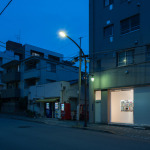
KANA KAWANISHI GALLERY
- B5
- Kiyosumi-Shirakawa
- B5
- Kiyosumi-Shirakawa
RYOICHI FUJISAKI
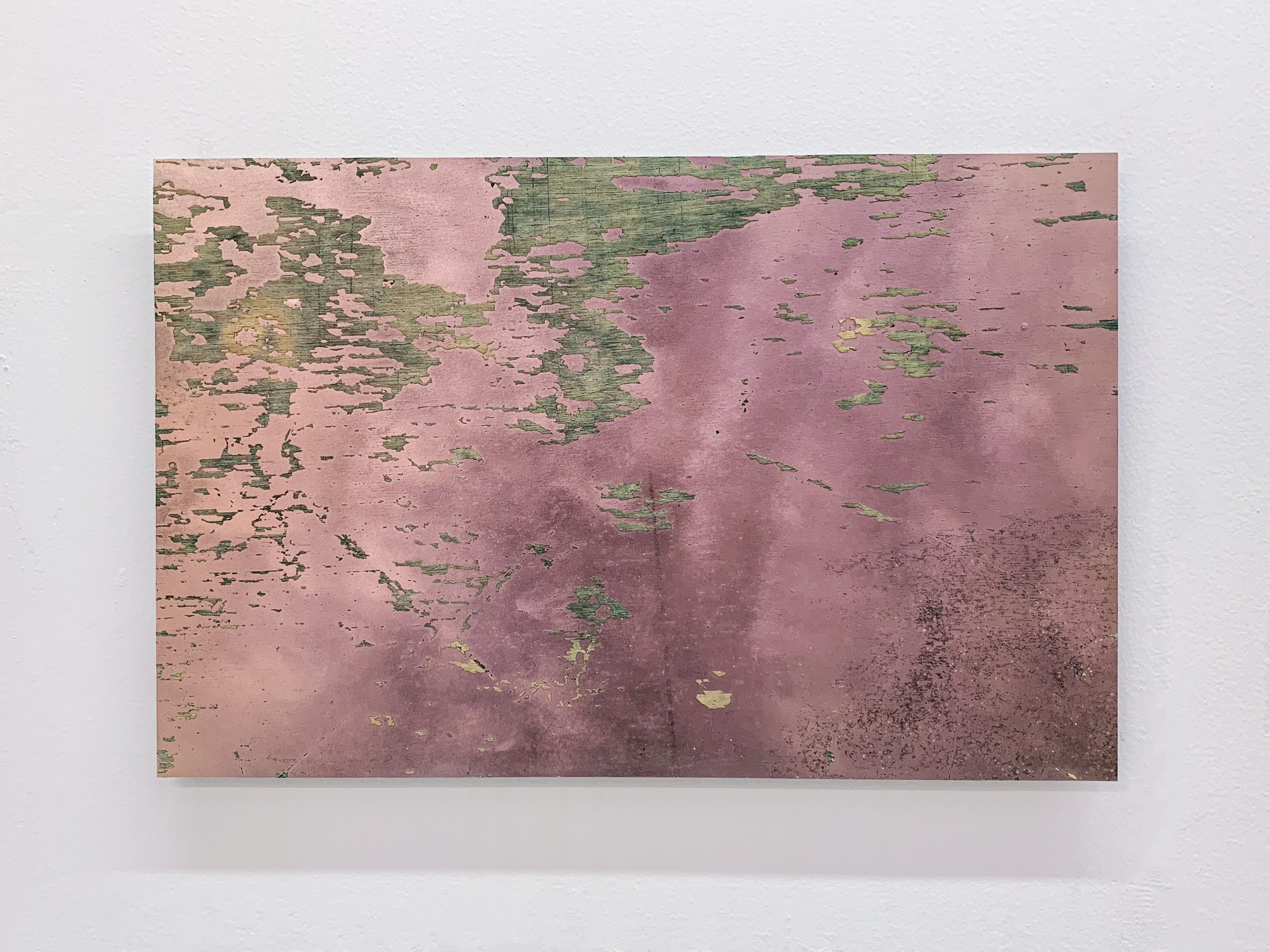
Born in 1975 in Osaka, Ryoichi Fujisaki studied sculpture at Kyoto City University of Arts and is known for a practice that confronts the realities of materials. Started in 2020, his ongoing “scan” series, for example, explores the sculptural concepts of positive and negative space on a flat surface by transferring uneven textures from the reverse side of a wood panel onto a cutting mat. On display in this solo exhibition will be two-dimensional works made of PVC sheets and pigment on wood panel alongside a single-channel video and a new sculptural installation.
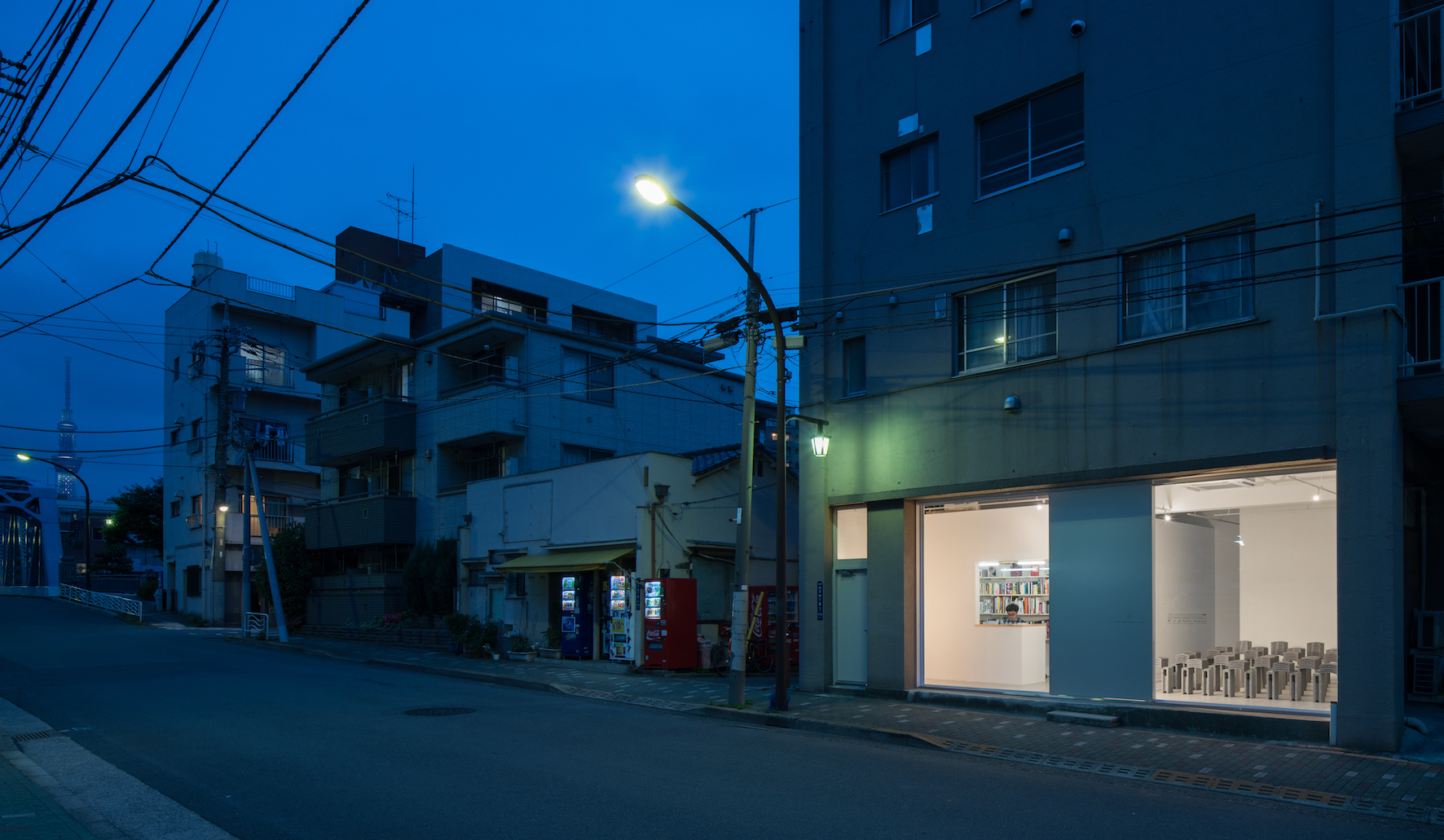
Kana Kawanishi Gallery was founded in 2015 to showcase Japanese and international artists who explore aspects of society through visual media. The gallery is located in Kiyosumi-Shirakawa, a five-minute walk from the Museum of Contemporary Art Tokyo. Its satellite space, Kana Kawanishi Photography, which focuses on contemporary photography, opened in 2018 in Nishi-Azabu, near the Mori Art Museum. Both spaces were designed by Yuko Nagayama & Associates.
Kana Kawanishi Gallery has placed works by its artists in major public collections, including the British Museum, London; the 21st Century Museum of Contemporary Art, Kanazawa; the Museum of Contemporary Art Tokyo; and the Tokyo Photographic Art Museum. The gallery also regularly participates in international art fairs, including NADA New York, photo basel, Photo London, and Unseen in Amsterdam. Kana Kawanishi Gallery was named a “power player” of the Tokyo art scene by Artnet News in 2022 and has previously been featured in stories in Artsy, the Asahi Shimbun, Bijutsu Techo, Blouin Artinfo, The Guardian, Forbes, Libération, and Monocle.
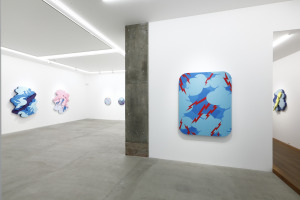
KOSAKU KANECHIKA
- C10
- Tennozu
- C10
- Tennozu
DAN MCCARTHY
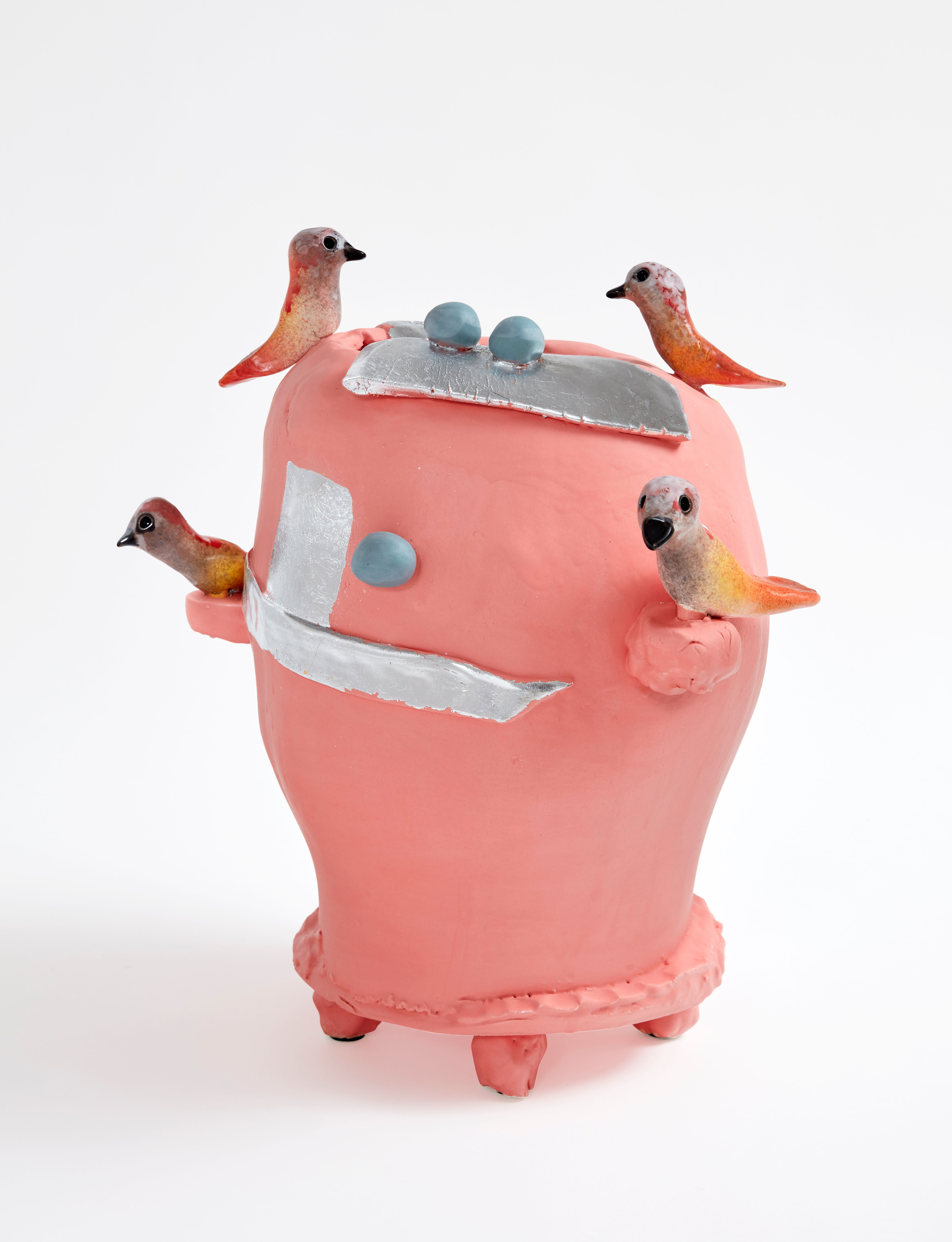
Born in Hawaii and raised in Southern California, Dan McCarthy studied both painting and ceramics at the San Francisco Art Institute before moving to New York in 1989. After several decades focusing on his painting practice, in 2010 he reconnected with ceramics. McCarthy takes an eclectic approach to the medium that is both contemporary and respectful of historical traditions. This is evident in everything from his use of kintsugi, a Japanese ceramic technique dating back to the 15th century that employs gold leaf to make repairs to pots, to the iconically playful forms and vividly colored glazes of his “Face Pots,” which are often adorned with gold and silver luster. His genre-defying style pushes ceramic art into the realm of contemporary sculpture, much like Takuro Kuwata, another ceramic artist represented by the gallery with whom he exhibited in the two-person show “Dear Friend” in 2022. McCarthy’s first solo exhibition in Japan will feature new ceramic works featuring bird motifs accompanied by new paintings.
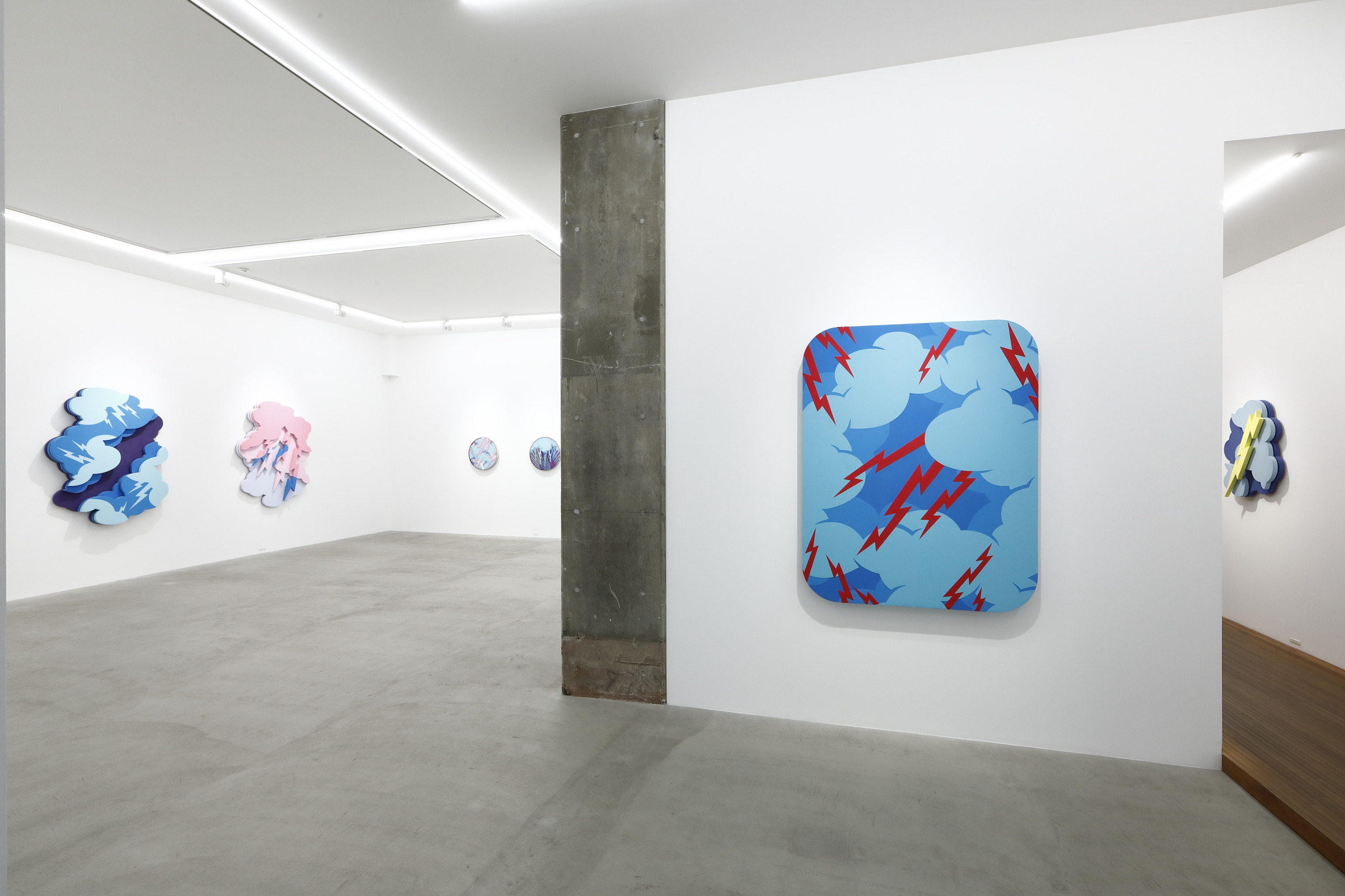
Kosaku Kanechika was founded in Tokyo in 2017. Part of a new generation of venues redefining the local art landscape, the gallery showcases work by Japanese artists who are active both nationally and internationally. Represented artists include Yutaka Aoki, fumiko imano, Takuro Kuwata, Junko Oki, Ataru Sato, Chikashi Suzuki, and Noritaka Tatehana. The program also features international artists, such as Dan McCarthy and Ruby Neri, whose innovative approaches to expression transcend medium and genre.
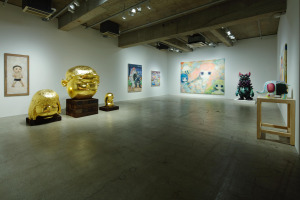
KAIKAI KIKI GALLERY
- C4
- Hiroo
- C4
- Hiroo
AYA TAKANO

Fascinated by science fiction and the supernatural from an early age, Aya Takano is known for a body of work that combines eroticism with Following the disasters of the Tohoku earthquake and tsunami of 2011, abundant nature and daylight began to appear more frequently in her paintings, which previously had been dominated by cities, nightscapes, and moonlight. Showcasing new oil paintings and a diorama model, “LONGER THAN THE MYTH OF THE GALAXY alternative future” is the artist’s first solo exhibition at the gallery in a decade.
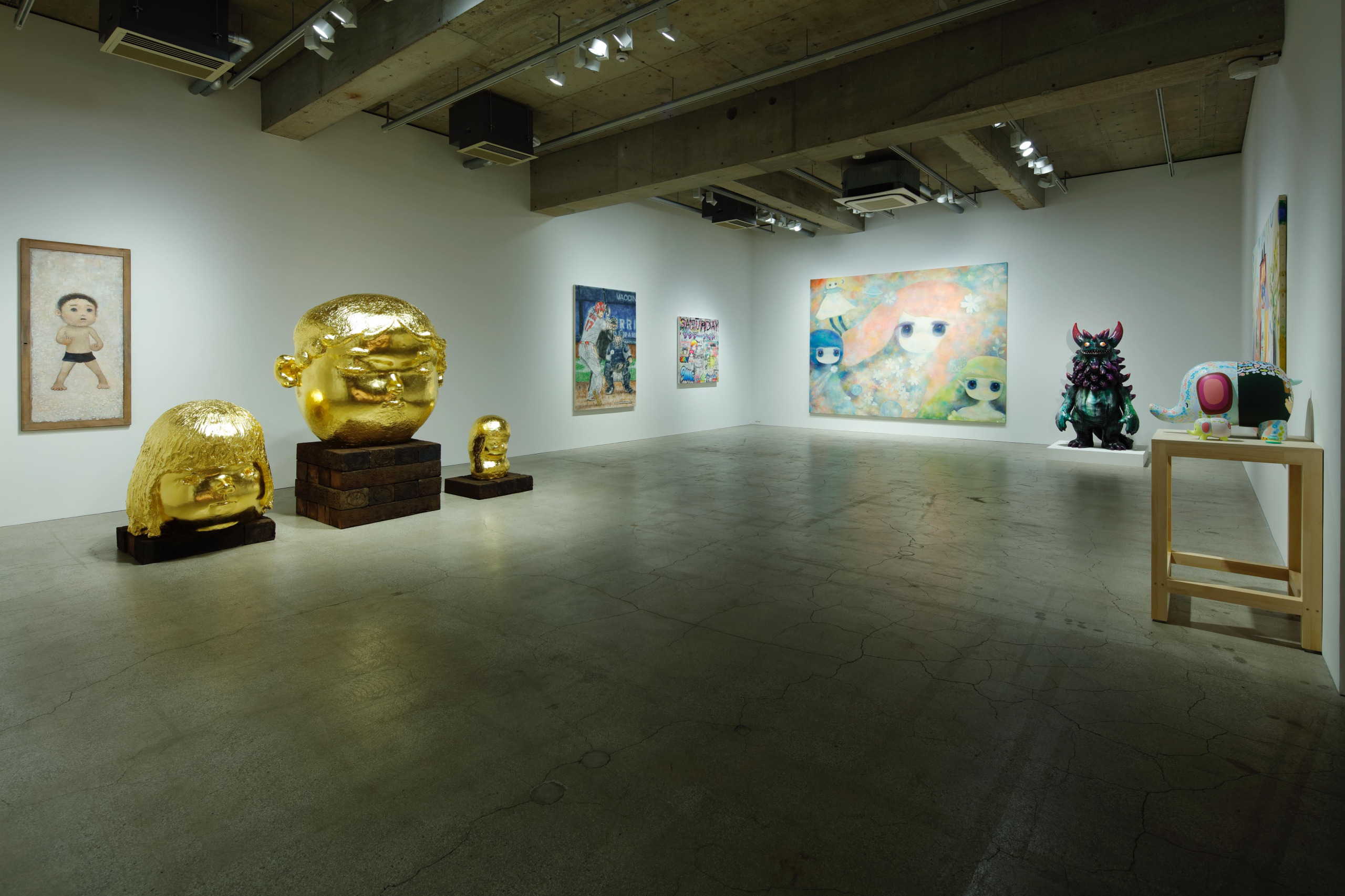
Takashi Murakami founded Kaikai Kiki Gallery in 2008 as a space for presenting the work of the artists he manages. The gallery seeks to imbue art with new social value and contribute to the development of the Japanese art scene as a whole through its activities. Represented artists include Chiho Aoshima, Emi Kuraya, Madsaki, Mr., Shin Murata, ob, Otani Workshop, Aya Takano, and TENGAone, while international artists who have shown with the gallery in Tokyo include Kasing Lung and Futura.
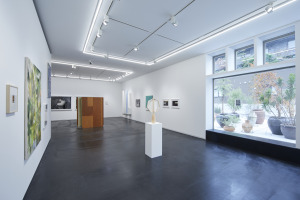
TAKA ISHII GALLERY
- E2
- E4
- Roppongi
- E2
- E4
- Roppongi
JUSTIN CAGUIAT AND RAFAEL DELACRUZ
This exhibition showcases two emerging artists: Justin Caguiat and Rafael Delacruz. Caguiat is known for his large-scale paintings typically done on pinned, unstretched canvases. Combining swirls of luxuriant color and dense layering with abstract and pointillist forms and faint figurative touches, Caguiat’s work has prompted comparisons to the Swedish painter Hilma af Klint. Self-taught artist Rafael Delacruz deploys a wide range of techniques, from charcoal drawing to oil and acrylic painting to making silkscreens of digitally distorted images. Often beginning with a simple motif from everyday life, such as a car or shopping cart, Delacruz then layers vibrant colors over these subjects, imparting an almost spiritual quality to quotidian objects through dreamy abstraction.
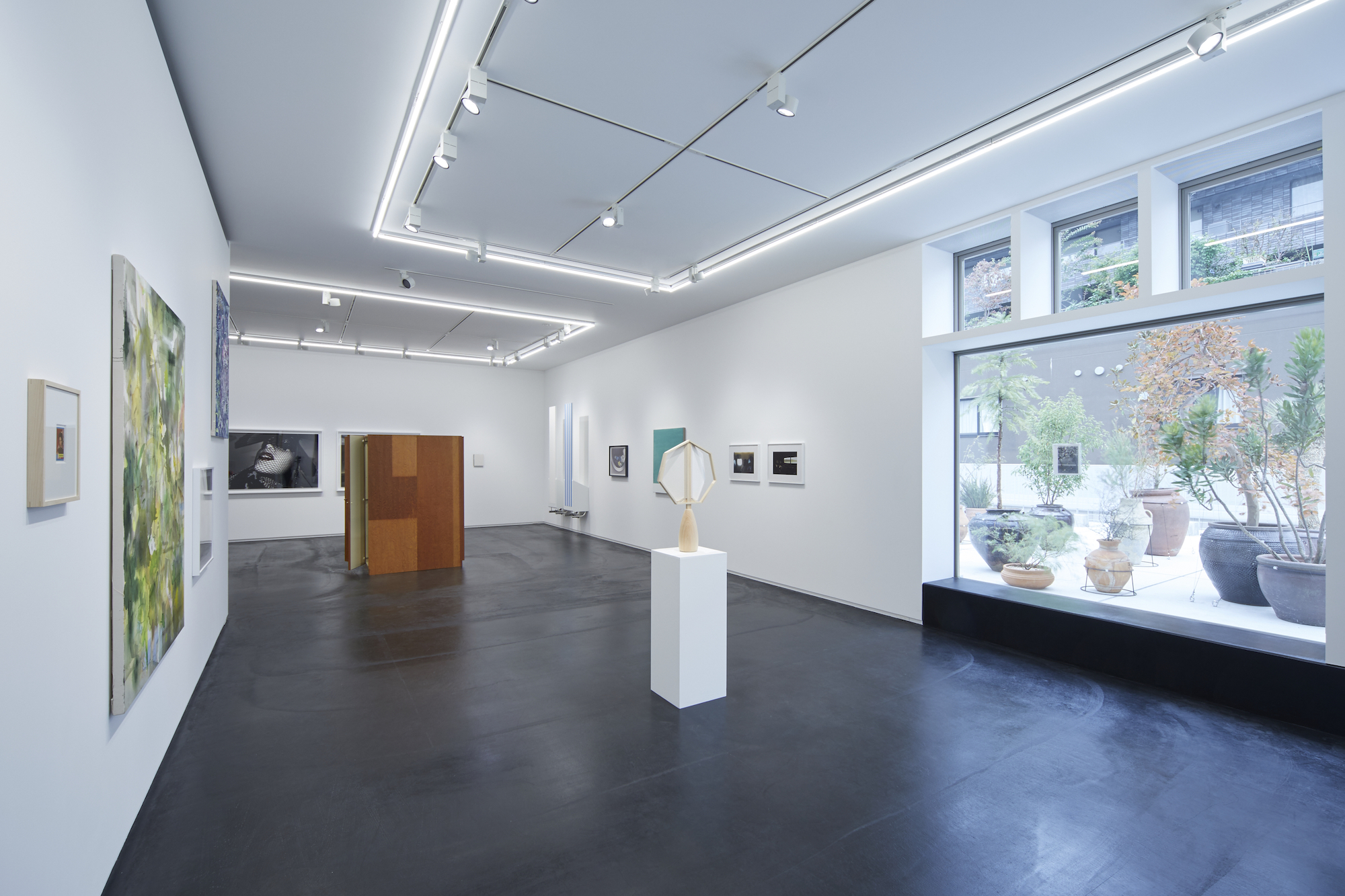
Since opening in 1994 Taka Ishii Gallery has developed an exhibition program that introduces international contemporary artists to Japan while providing a global platform for the country’s emerging artists and contemporary masters. While the gallery aesthetic is rooted in the photographic, the program is contemporary and represents artists working in a variety of media. It maintains an annual calendar of eight exhibitions and publishes catalogues and artist books. In addition to its primary exhibition space at complex665, Taka Ishii Gallery has a second venue in Roppongi, amanaTIGP, which focuses on pre- and postwar Japanese photography and film. In 2023 the gallery added branches in Kyoto and Maebashi for hosting collaborative projects with artists and also established a viewing space in Hong Kong.
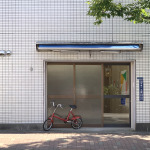
HAGIWARA PROJECTS
- B7
- Kiyosumi-Shirakawa
- B7
- Kiyosumi-Shirakawa
DREAMING CHIMERA
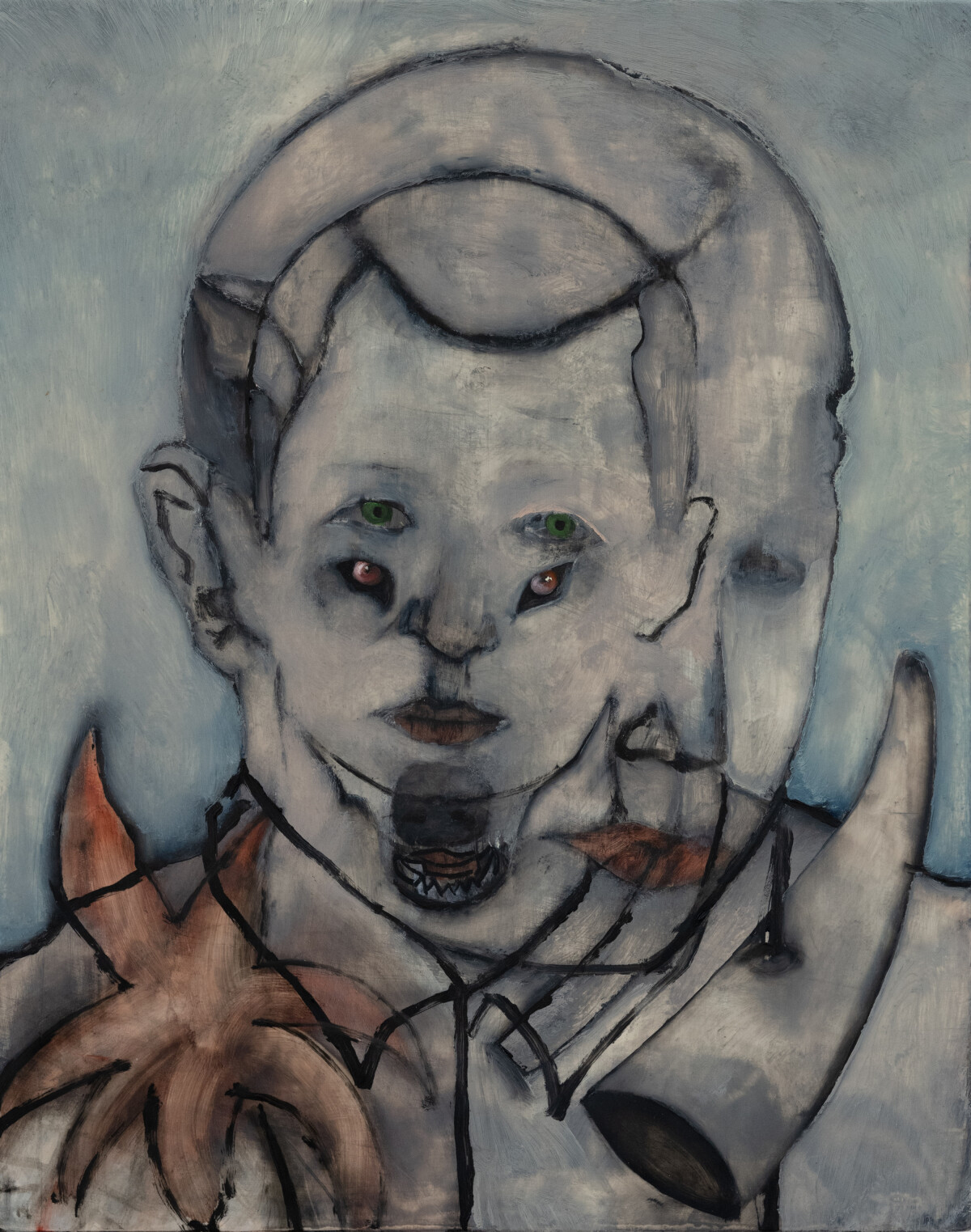
Hagiwara Projects is pleased to present “Dreaming Chimera,” a group exhibition cocurated by Kazuhito Tanaka, an artist and the founder and director of Kyoto-based artist-run space soda, and multinational artist duo Ittah Yoda. Both Tanaka, who explores abstract expression through photography, and Ittah Yoda, whose multisensory installations foster communication between human and nonhuman beings, are presenting works in the exhibition. Among the six other participants are Tbilisi-based mixed-media artist Nika Kutateladze, who creates poetic paintings and sculptures that deal with social and environmental transformation, and Tokyo-based artist Maiko Jinushi, who is known for her contemplative video works that explore themes of time, memory, and narrative.
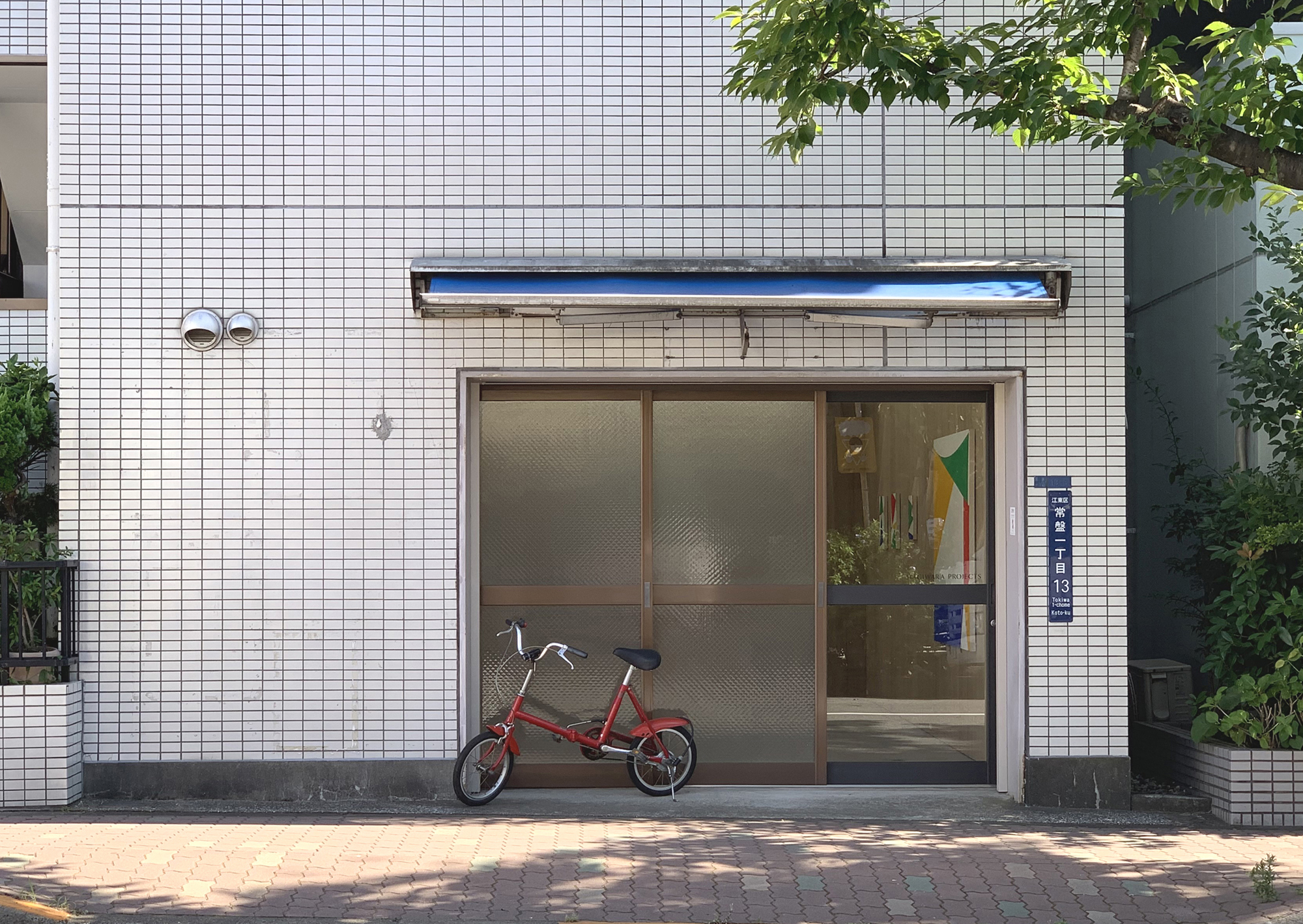
Hagiwara Projects was established in Tokyo’s Nishi-Shinjuku district in 2013 and relocated to Koto-ku in 2021. The gallery focuses on emerging and midcareer Japanese and international artists working in painting, sculpture, film, photography, and other mediums. In addition to showing its represented artists, Hagiwara Projects actively contributes to the Japanese art scene by commissioning guest curators to organize thematic exhibitions. The gallery also introduces the work of Japanese artists to a global audience through regular participation in international art fairs
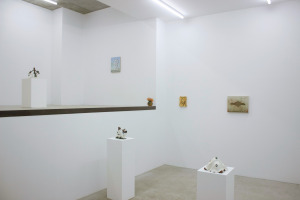
FIG.
- A5
- Otsuka
- A5
- Otsuka
SHIZUKA OKADA
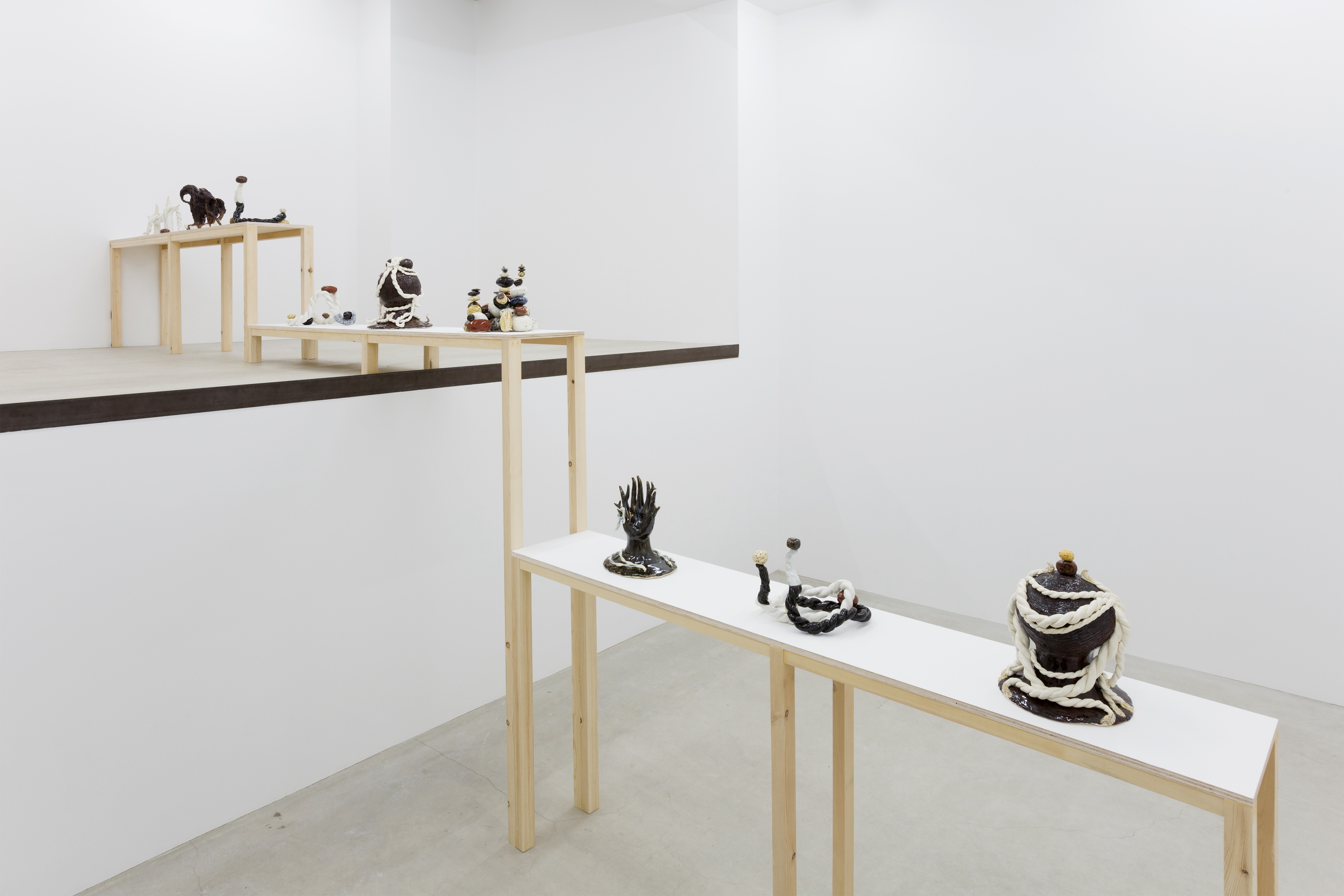
Born in 1987 in Gunma Prefecture and currently based in Kyoto, Shizuka Okada studied ceramics in the department of craft and industrial design at Musashino Art University, Tokyo, and at the Städelschule, Frankfurt am Main. She is known for her glazed ceramic objects that combine animal, plant, and other motifs drawn from everyday life with abstract elements. This solo exhibition will present a selection of new ceramic sculptures by the artist.
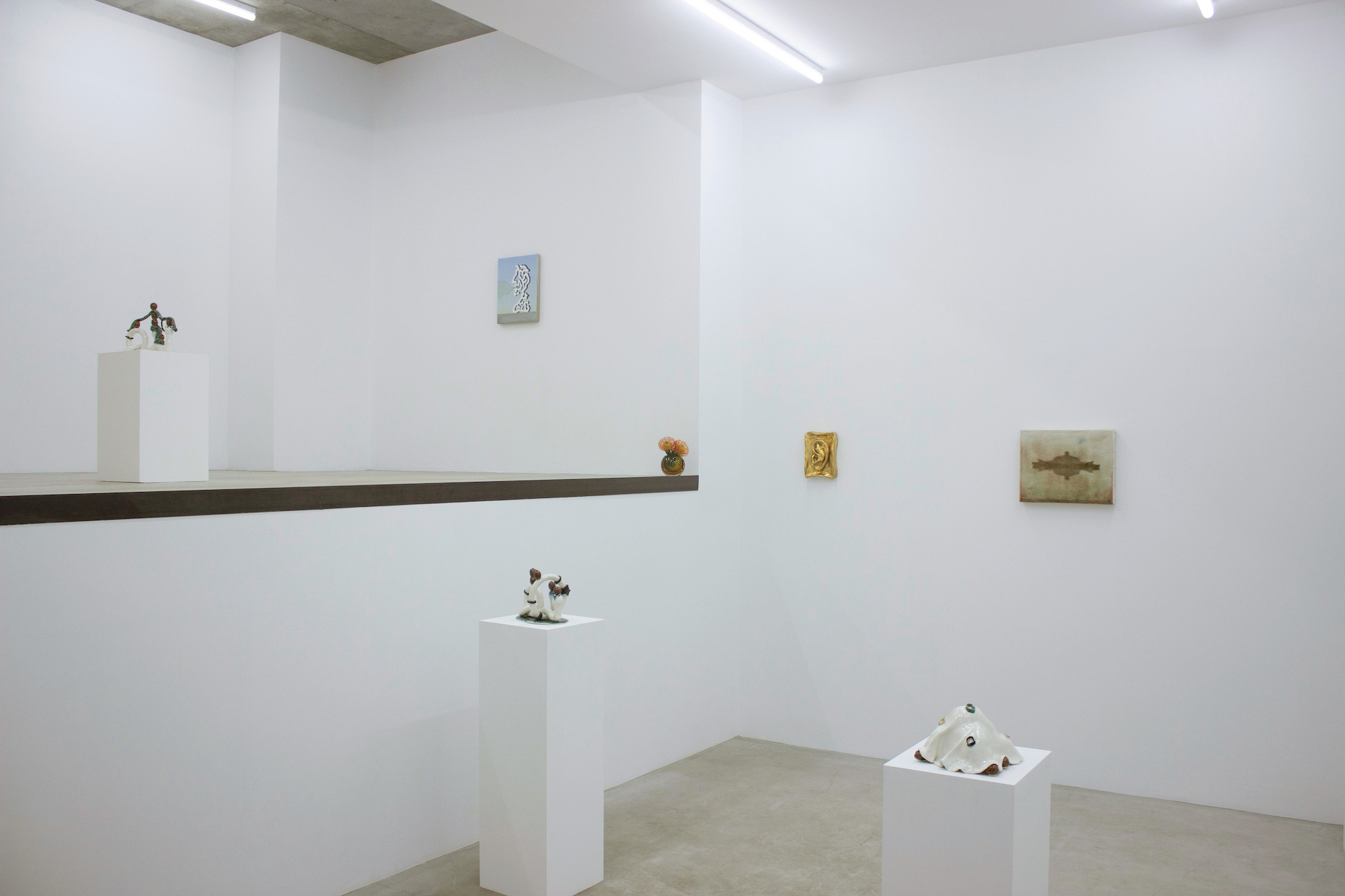
Fig. is an artist-run space founded in Kita-Otsuka in 2017. Organized on a project basis, its exhibition program features both local and international artists and is often developed in collaboration with other art spaces from Japan and abroad. Past exhibitions include David Ostrowski, “Leeres Wasser (Anti Drawings)” (2023); Umico Niwa, “My Life Inside a Shoe (the phantom cricket)” (2023), organized with XYZ collective; “Drawing Fever I: Narrative, on-going” (2022); Nicolás Guagnini and Shizuka Okada, “Interference” (2021), organized with Galerie Max Mayer; Hannah Weinberger “wedidntwanttoleave.live” (2020), curated by Fitzpatrick Gallery with the Performance Agency; Cobra, “The Museum” (2019); and Shizuka Okada, “Slender and Long My Whistle” (2018).
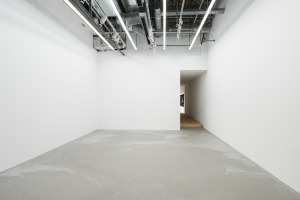
YUMIKO CHIBA ASSOCIATES
- E2
- E4
- Roppongi
- E2
- E4
- Roppongi
KAZUYO KINOSHITA, YOKO SAWAI, AND TOEKO TATSUNO: THE 1970S ‒ BEYOND "BARREN"
Kazuyo Kinoshita, Yoko Sawai, and Toeko Tatsuno developed their unique artistic practices in the Japanese postwar period while simultaneously responding to global trends in the Conceptual art and abstract painting movements of the time. After being involved in the avant-garde Group I, Kinoshita went on to use photography and painting to examine the relations between image, perception, and material. Sawai is known for works in which she draws countless parallel lines on paper with a knife and highlights these scratches with carbon chalk. Tatsuno, for her part, explored the nature of multilayered pictorial space through geometric abstraction. These three artists have been the subject of reappraisal in recent years. All three were showcased in the exhibition “Women and Abstraction” at the National Museum of Modern Art, Tokyo, in 2023, while the Nakanoshima Museum of Art, Osaka, hosted a retrospective of Kinoshita’s work earlier this year on the occasion of the 30th anniversary of her passing.
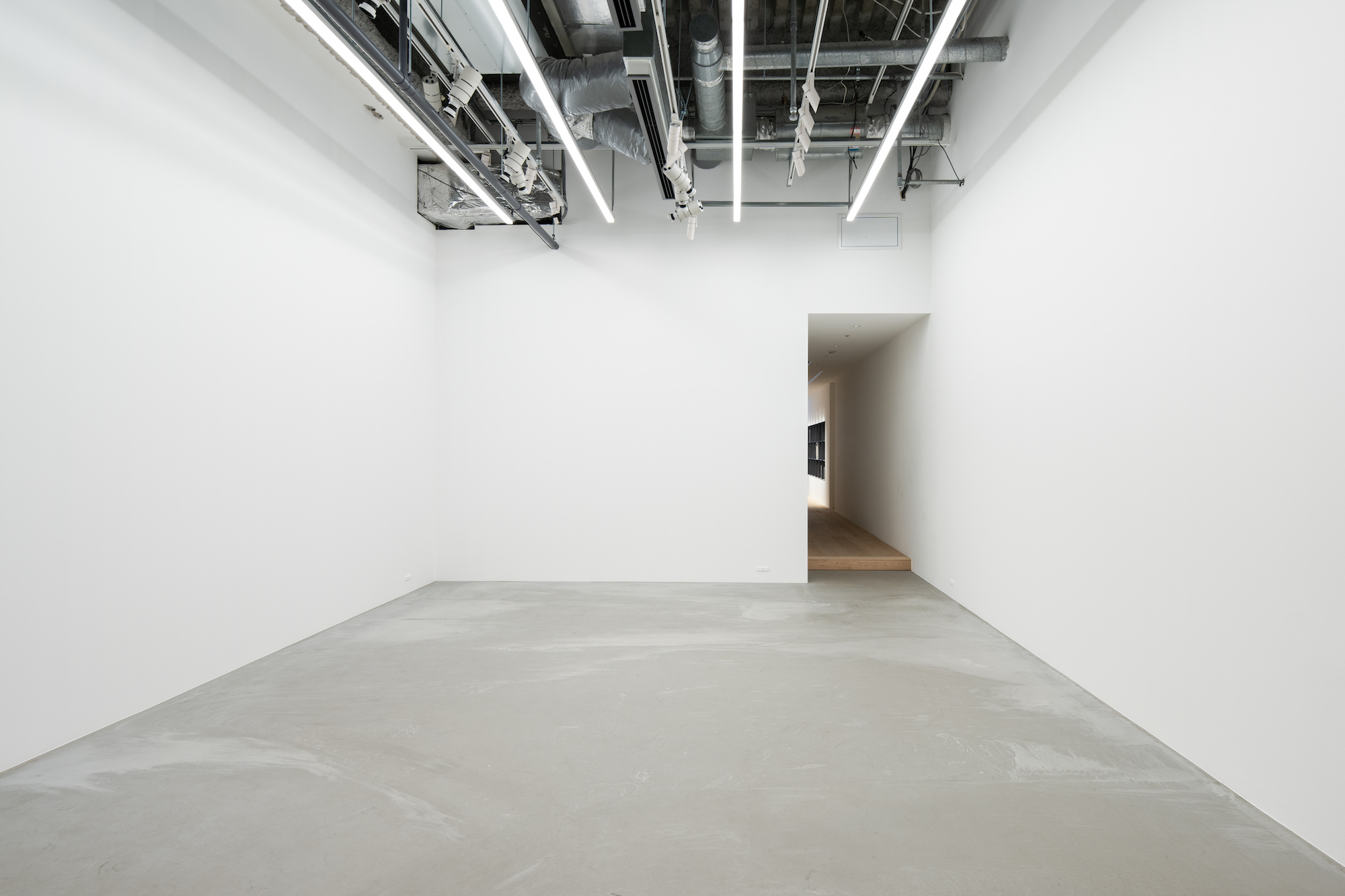
Yumiko Chiba Associates was founded in 1988 and operated as an artist management office before opening its Shinjuku gallery in 2010. The gallery moved to its current space in Roppongi in 2022. YCA represents the estates of some of the most important figures in Japanese postwar art, from Jiro Takamatsu to Masafumi Maita, Shin Yanagisawa, and Katsuro Yoshida. The exhibition program features solo shows by these and other artists, including those of younger generations. The gallery also maintains an active publishing program, commissioning critical essays that contribute to art historical research on various practices. In 2022, coinciding with its move to Roppongi, YCA launched the Roppongi ArsCuria hub to further promote artistic and critical discussion. YCA is a regular participant at Art Basel Hong Kong, Paris Photo, and other contemporary art fairs.
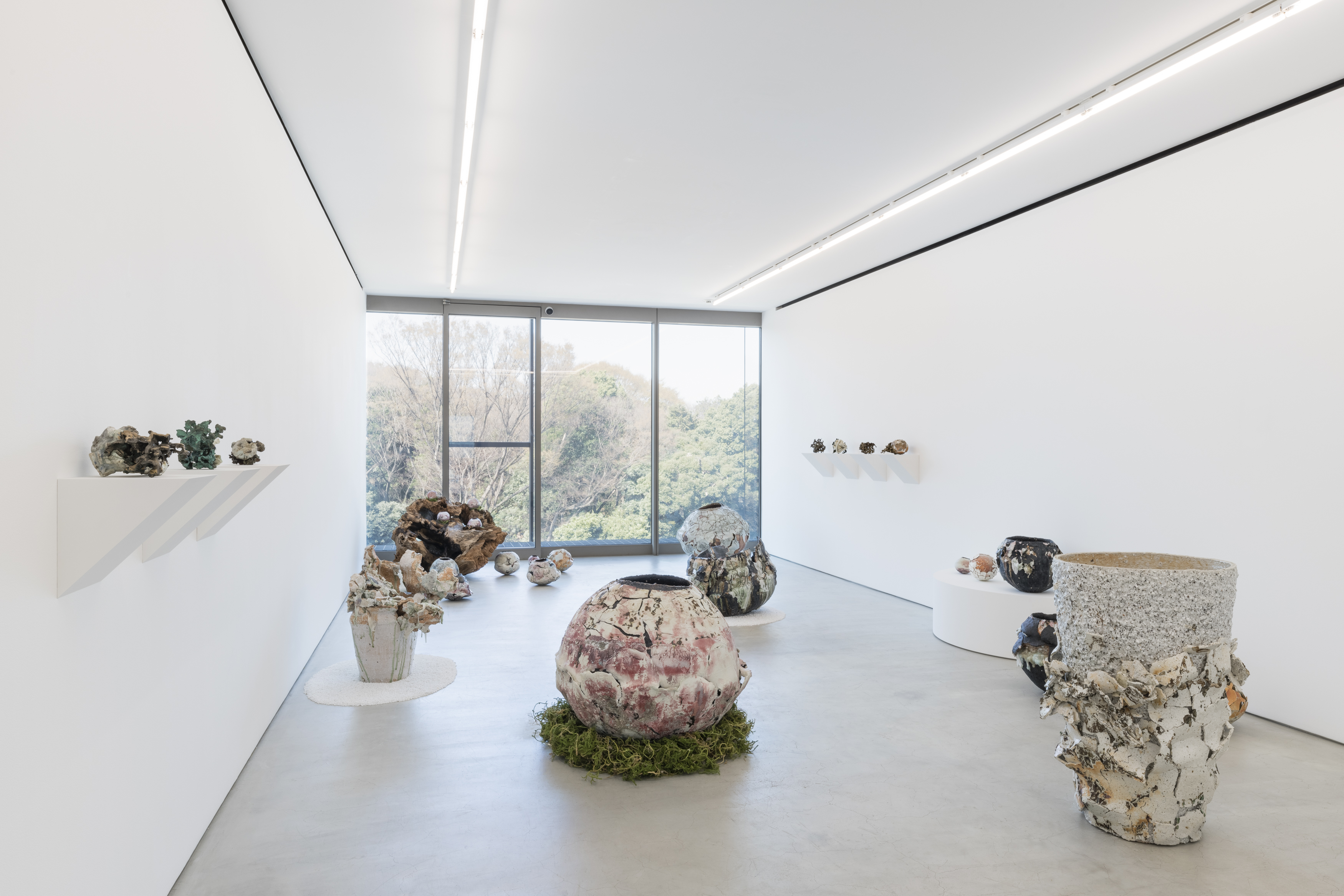
Blum
- D8
- Harajuku
- D8
- Harajuku
YOSHITOMO NARA
Blum is pleased to announce an exhibition of recent work by Yoshitomo Nara at the gallery’s Tokyo location in November 2024. The new body of work created this year and sees Nara using a limited color palette and simple, distinct lines to carry and convey his potent, thought-provoking messages. On monochrome backgrounds, Nara’s imagination runs free, and his rapid strokes are full of spontaneity and energy. His characteristically wide-eyed, large-headed figures, delineated in paint with the same economy of line as in his pencil drawings, are accompanied by bold inscriptions: declarations that originate directly and sincerely from Nara’s heart. This solo exhibition will be followed by a larger show at Blum’s Los Angeles location in January 2025.

Representing more than 60 artists and estates from 16 countries worldwide, Blum’s hands-on approach nurtures a diverse roster of artists at all stages of their practices with a range of global perspectives. The gallery has been a pioneer in its early commitment to Los Angeles as an international arts capital and is recognized for collaborating in launching the careers of artists such as Mark Grotjahn, Friedrich Kunath, Takashi Murakami, Yoshitomo Nara, Asuka Anastacia Ogawa, Anna Park, Umar Rashid, and Henry Taylor. The gallery has also been acclaimed for its groundbreaking work in championing artists of Korean and Japanese postwar and contemporary movements, such as Dansaekhwa, Mono-ha, and Superflat. Across its spaces in Los Angeles (opened 1994), Tokyo (opened 2014), and New York (opened 2014), the gallery has organized museum-caliber solo presentations and historical survey exhibitions, often partnering with renowned curators and scholars, and presenting retrospectives of late artists such as American painter Robert Colescott and multidisciplinary artist Thornton Dial.
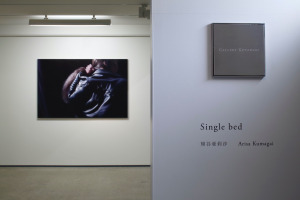
GALLERY KOYANAGI
- B10
- Ginza
- B10
- Ginza
TABAIMO
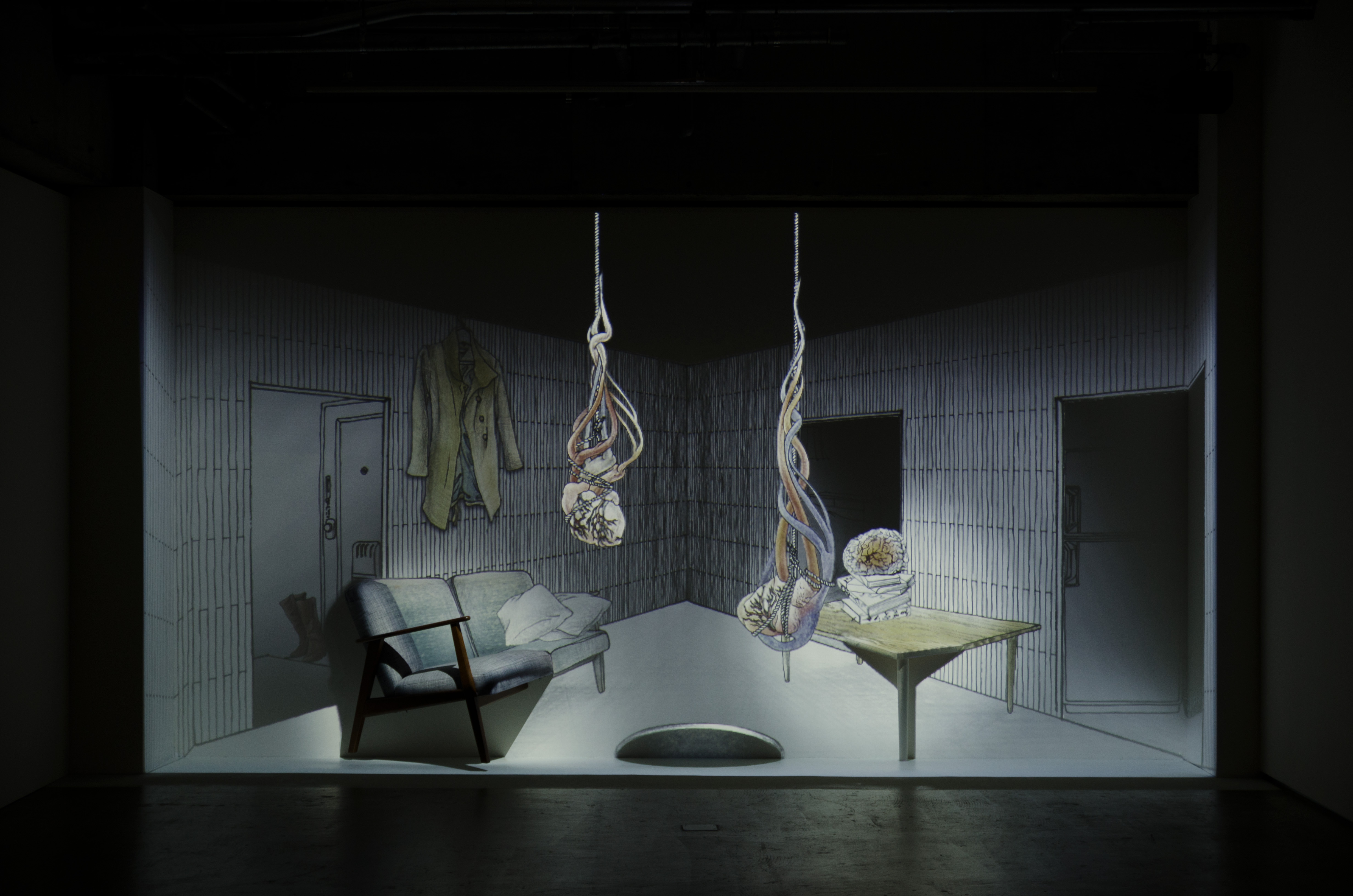
Born in 1975 in Hyogo Prefecture, Tabaimo achieved worldwide acclaim after representing Japan at the 54th Venice Biennale in 2011. She is known for her large-scale video installations that employ meticulously hand-drawn images inspired by manga, anime, and ukiyo-e woodblock prints to depict surreal narratives that unfold within seemingly innocuous everyday and domestic settings. Whether depicting a commuter train or public restroom, Tabaimo’s wry choice of vibrant colors offer an ironic contrast to the uncanny, macabre scenarios they depict. This approach allows her to reveal the darker undercurrents that lie beneath the veneer of polite society in a disarming way. This solo exhibition—her first with the gallery in six years—will feature several video installations.
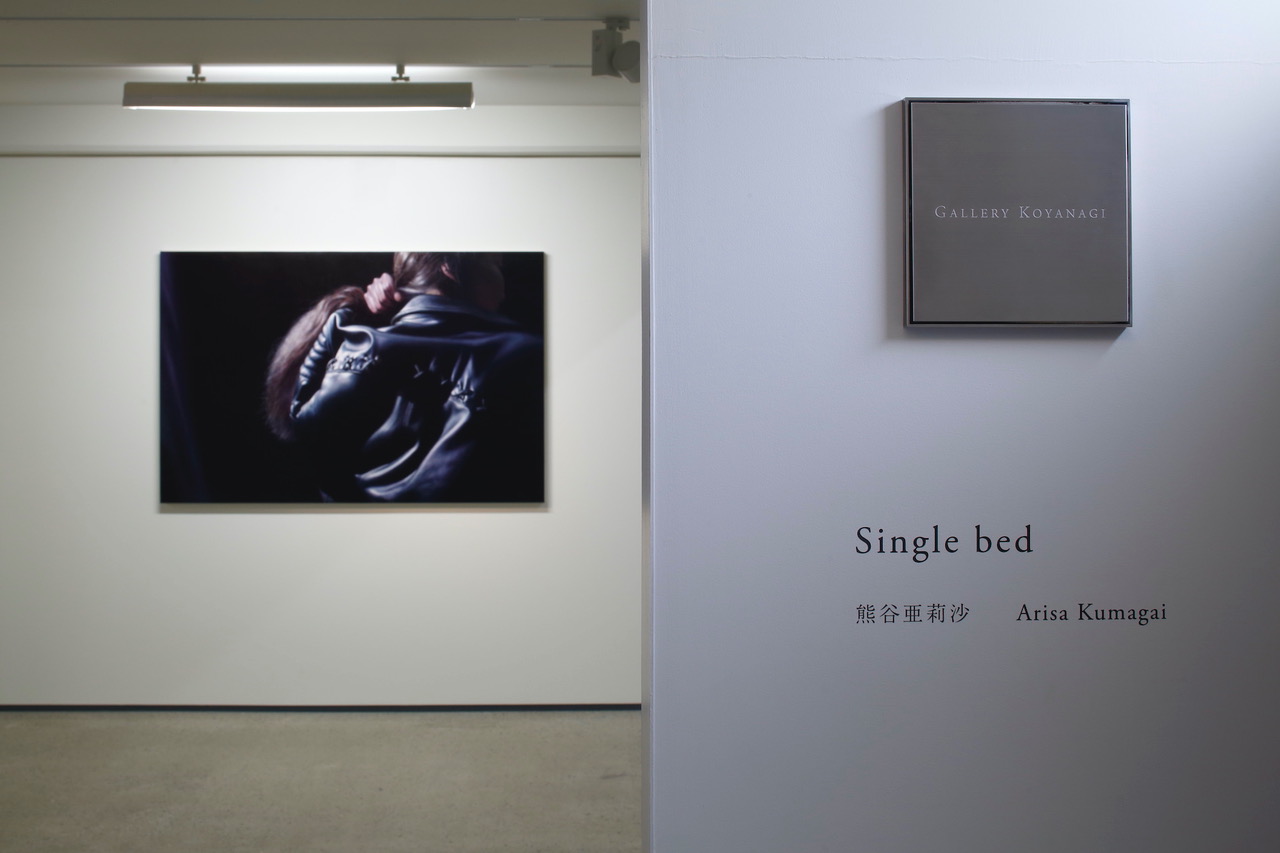
Gallery Koyanagi opened in Ginza in 1995 and relaunched with a new gallery space designed by Hiroshi Sugimoto in 2016. Gallery Koyanagi represents Japanese and international contemporary artists, including Michaël Borremans, Sophie Calle, Marlene Dumas, Mark Manders, Christian Marclay, Thomas Ruff, Yoshihiro Suda, Hiroshi Sugimoto, and Tabaimo.
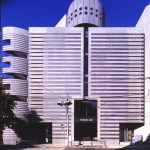
WATARI-UM
- D3
- Gaienmae
- D3
- Gaienmae
SIDE CORE: CONCRETE PLANET
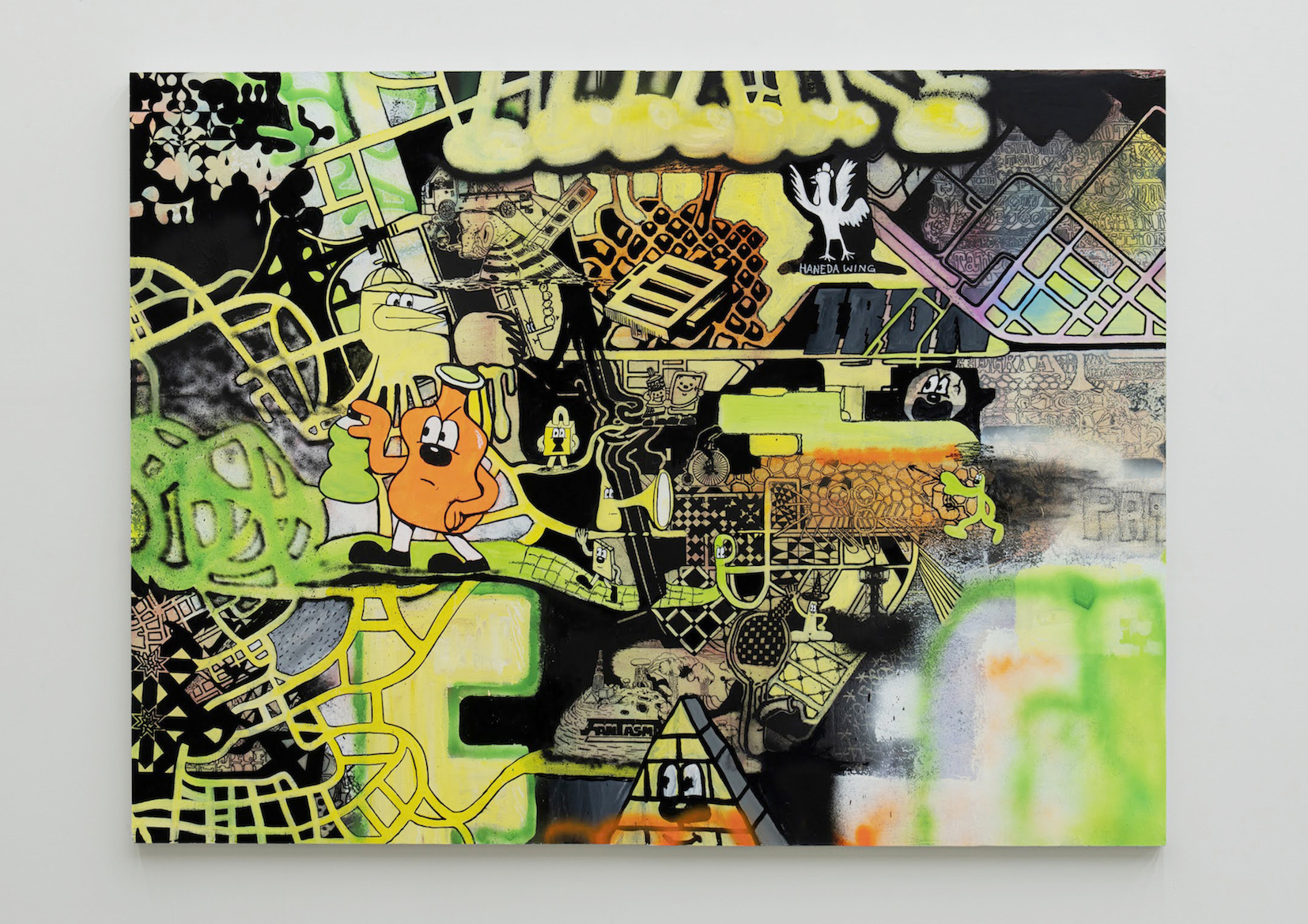
Founded in 2012 by Sakie Takasu, Tohru Matsushita, and Taishi Nishihiro, with Kazunori Harimoto as their video director, the Japanese art collective Side Core develops art projects inside buildings, in public spaces, and on the streets. The collective’s fieldwork-like methods include photographing highways, railroads, and underground waterways using special methods as well as creating installations with streetlights, guardrails, and road construction signs found in public spaces. Highlights from this show—the collective’s first major solo exhibition in Tokyo—include a new series of sculptural pieces made from materials salvaged from the streets and the latest work from their under city series (2023–), in which skateboarding becomes a means of exploring the uncharted territory of Tokyo’s underground spaces.
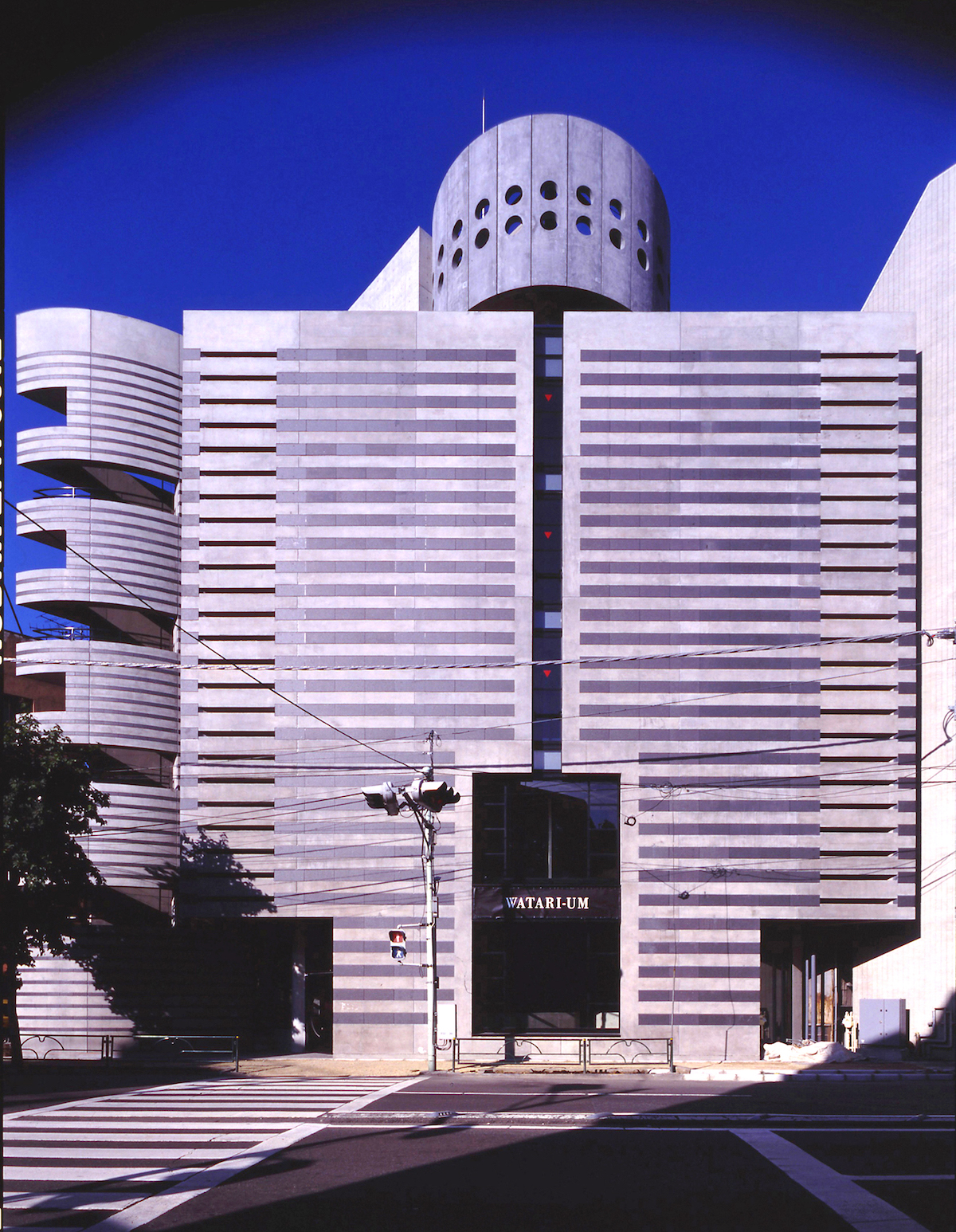
Watari-um, the Watari Museum of Contemporary Art, opened in 1990 as a private museum. The museum collection is based on works acquired by the founding director Shizuko Watari, a champion of postwar Western art in Japan. Watari-um holds three-to-four exhibitions per year that cover a broad range of topics, from contemporary art and Japanese culture to architecture. Guest curators have included such legendary figures as Jan Hoet, Jean-Hubert Martin, and Harald Szeemann. Accompanying lectures, workshops, and other events help visitors gain a deeper understanding of the exhibitions and their significance to contemporary society. The museum also organizes off-site exhibitions and events.
Swiss architect Mario Botta spent five years designing Watari-um’s building, which was his first museum project and is now known as one of his masterpieces. The striped granite and concrete façade, resembling a bird in flight over the city, has become a landmark of the Tokyo art scene.
Dining options on-site.
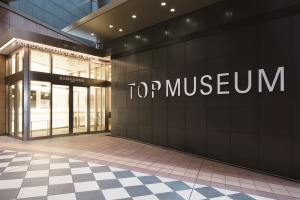
TOKYO PHOTOGRAPHIC ART MUSEUM
- C7
- Ebisu
- C7
- Ebisu
ALEC SOTH
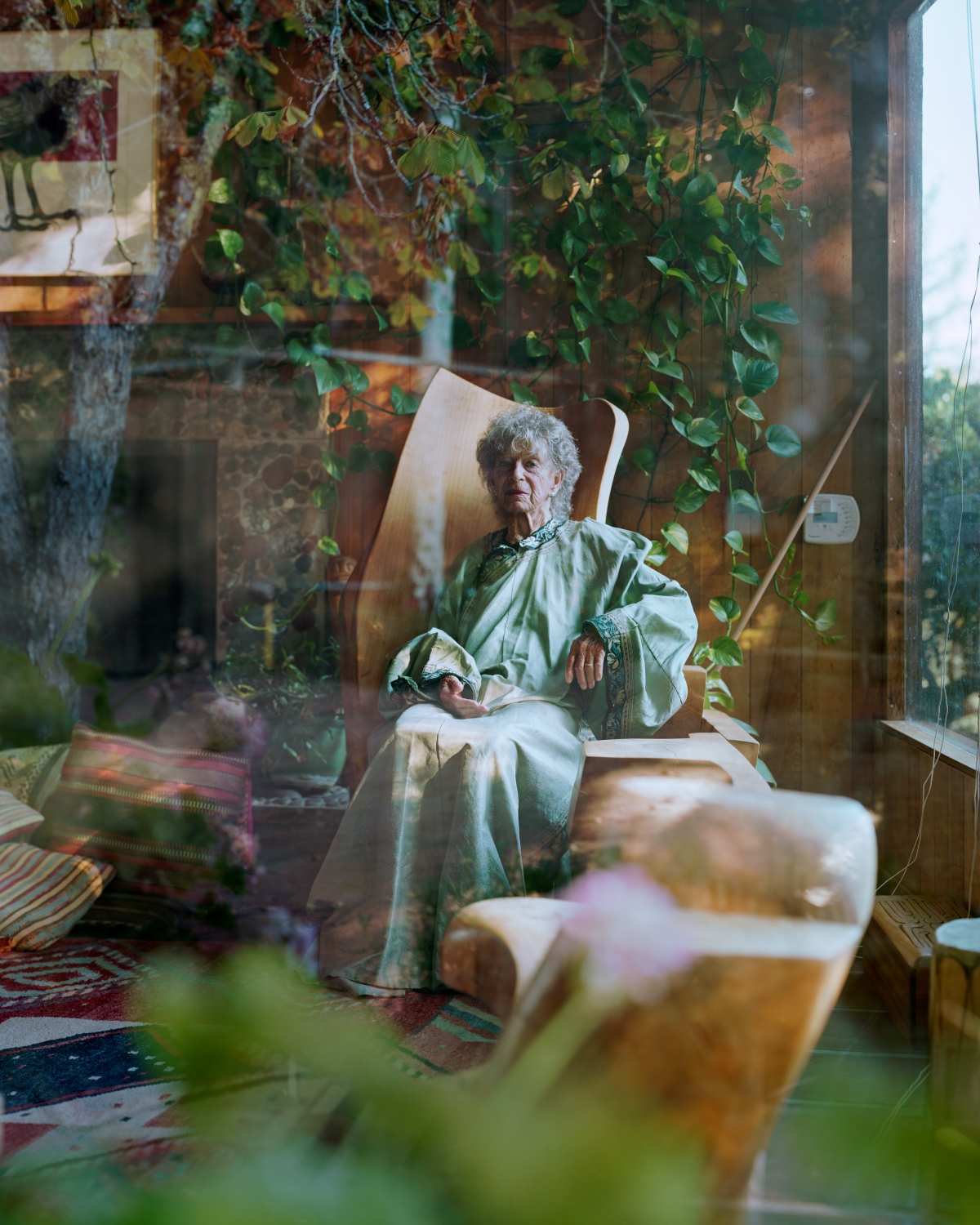
Alec Soth is an American photographer who focuses on the landscapes and social context of the midwestern United States, where he was born, raised, and still lives (specifically in Minneapolis, Minnesota). Inspired by pioneers of documentary photography like Walker Evans and Stephen Shore, Soth typically depicts solitary and eccentric figures set against everyday urban environments and domestic settings in his work. This solo exhibition takes its point of departure from his acclaimed series I Know How Furiously Your Heart is Beating (2019), the title of which is the final line of Wallace Stevens’s poem “The Gray Room.” The selection of works represents a reorientation of Soth’s practice toward a deeper connection with his subjects following a yearlong hiatus, during which he stopped traveling and did not pick up his camera.
Also on display will be Contemporary Japanese Photography Vol. 21, the latest edition of the museum’s annual survey of new talents and creative directions in Japanese photography.
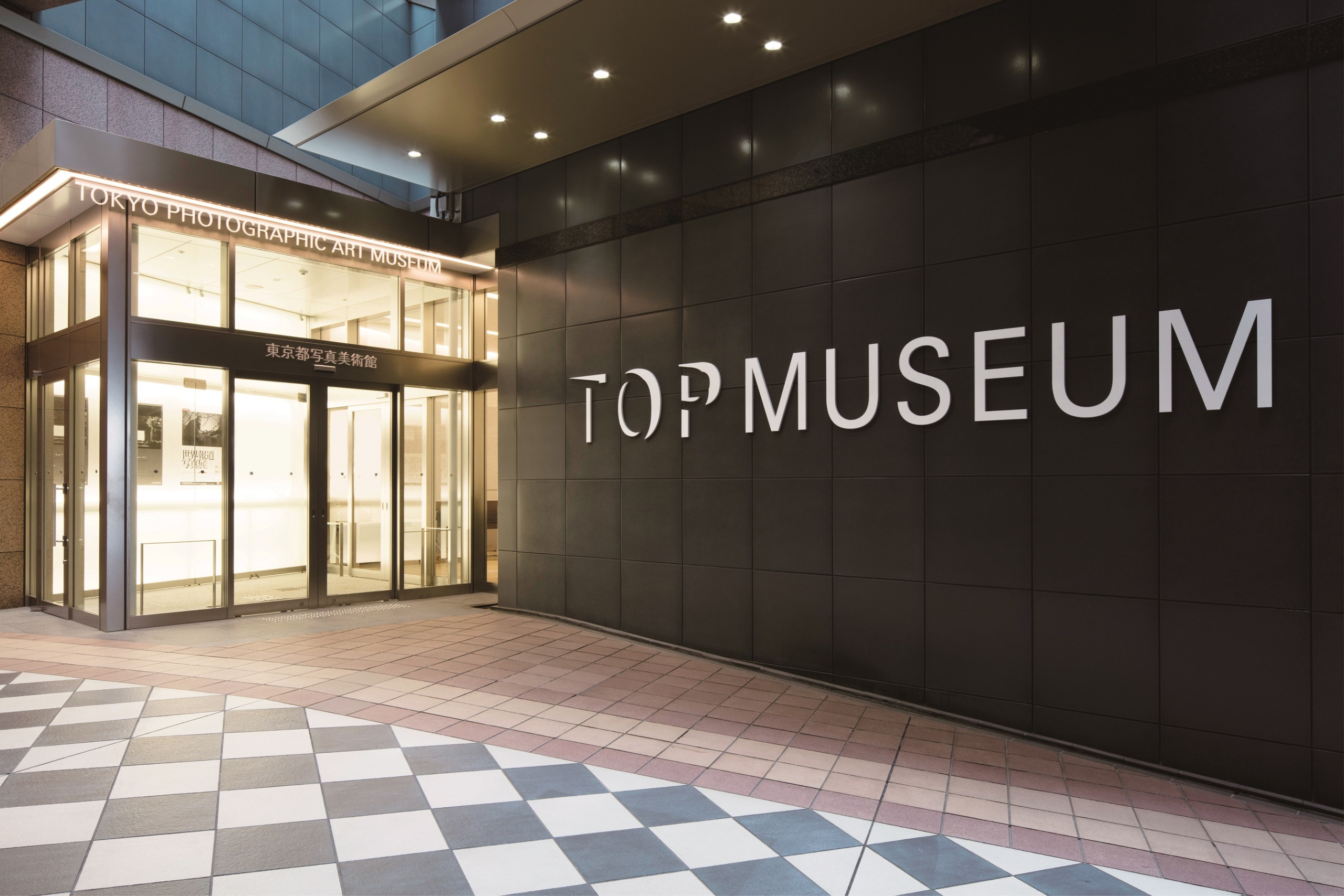
Founded in 1995, the Tokyo Photographic Art Museum is the city’s premier institution for photography and moving images. The museum’s programming spans three galleries and is grounded in its world-class holdings of more than 37,000 works. Its yearly calendar of approximately 20 exhibitions includes collection-based exhibitions and thematic shows that reflect the curators’ deep expertise in Japanese and international photographic and moving-image art. Since 2009 the museum has hosted the annual Yebisu International Festival for Art & Alternative Visions, an international survey of contemporary image practices. The museum’s screening program showcases moving-image works that explore the relationship between art and humanity.
Dining options on-site.
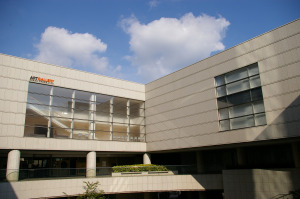
TOKYO OPERA CITY ART GALLERY
- D5
- Hatsudai
- D5
- Hatsudai
TAKESADA MATSUTANI
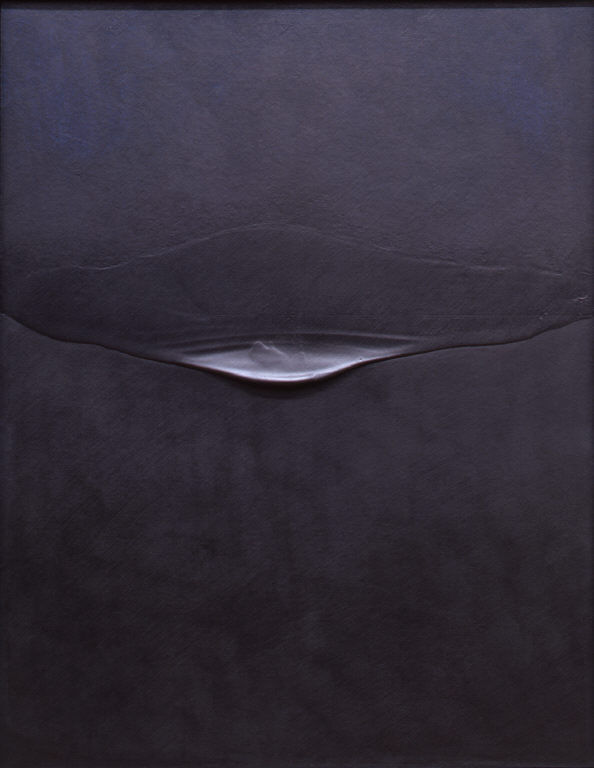
With a career spanning more than six decades, Takesada Matsutani (b. 1937) has devoted himself to interweaving the expression, texture, and presence of material objects with the vital forces of life through his art. After gaining prominence among the second-generation artists of the Gutai Art Association in the early 1960s, Matsutani developed a body of work depicting organic forms shaped out of vinyl adhesive, still a novel material at the time. In 1966 he moved to Paris, where he began printmaking before going on to work with geometric colored surfaces. Recent years have seen a resurgence in critical acclaim for his art, including at the Venice Biennale in 2017 and in a retrospective at the Centre Pompidou in Paris in 2019. This exhibition will retrace Matsutani’s practice from his early beginnings to the present through works in diverse mediums as well as archival documents and video footage.
Also on view will be a group exhibition consisting of selected abstract works from the Terada Collection and the latest installment in the project N series of exhibitions featuring young artists, with works by Arisa Nakabayashi.
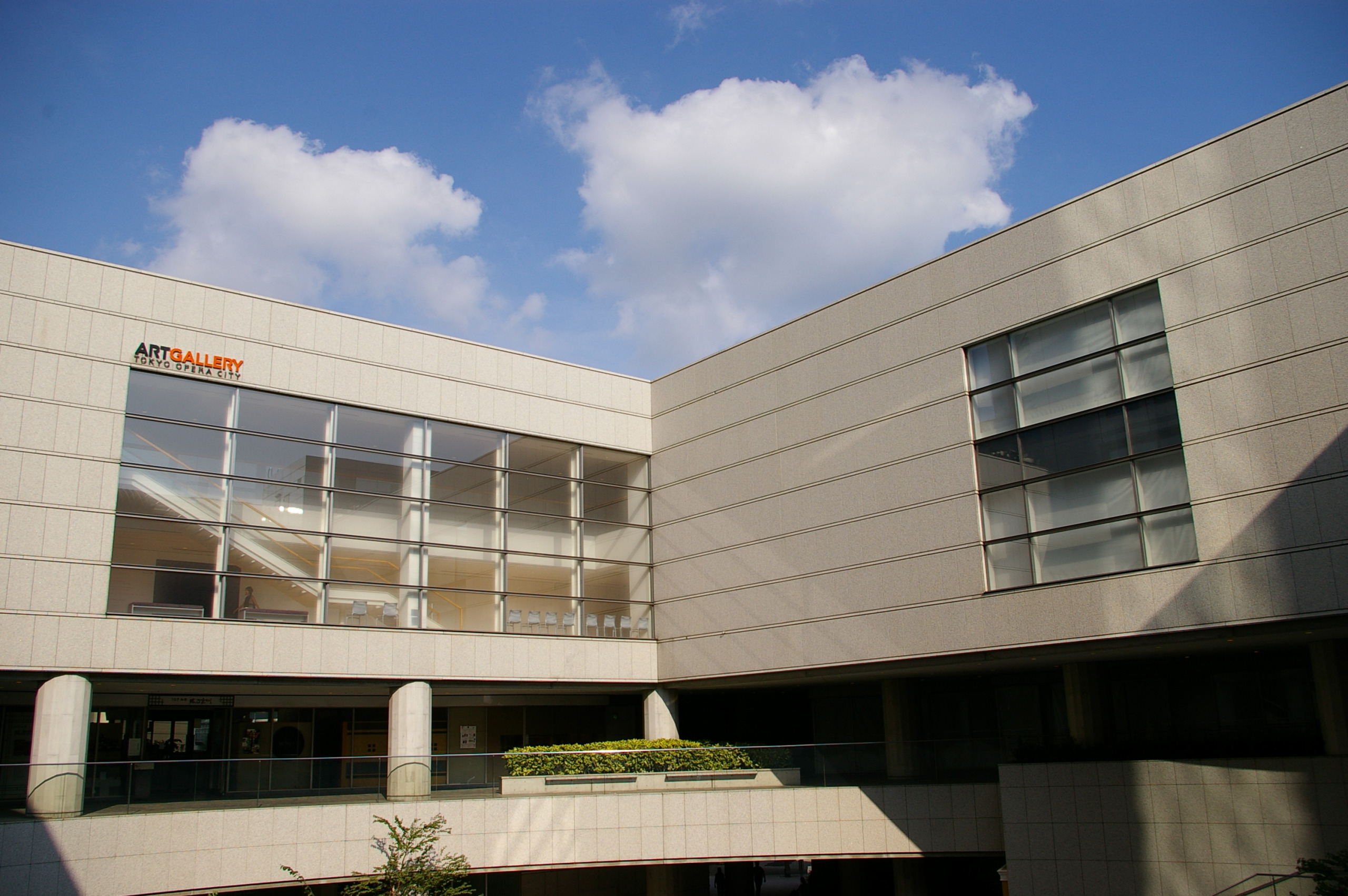
Tokyo Opera City Art Gallery is one of the core institutions of the Tokyo Opera City cultural complex. Established in 1999 as an art museum integrated into urban life, TOCAG presents ambitious projects by Japanese and international artists, architects, and designers who transform the gallery space. It holds about four special exhibitions a year as well as an exhibition series for emerging Japanese artists called project N. TOCAG is also home to the Terada collection, comprising more than 4,000 works by Japanese artists in various mediums, including a substantial selection by celebrated abstract painter Tatsuoki Nambata. Donated by Kotaro Terada, a partner in the Tokyo Opera City complex’s development, the collection reveals the diverse trajectories that art has followed in postwar Japan.
Dining options on-site.
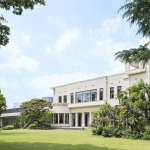
TOKYO METROPOLITAN TEIEN ART MUSEUM
- C11
- Meguro
- C11
- Meguro
LOOKING AT ARCHITECTURE
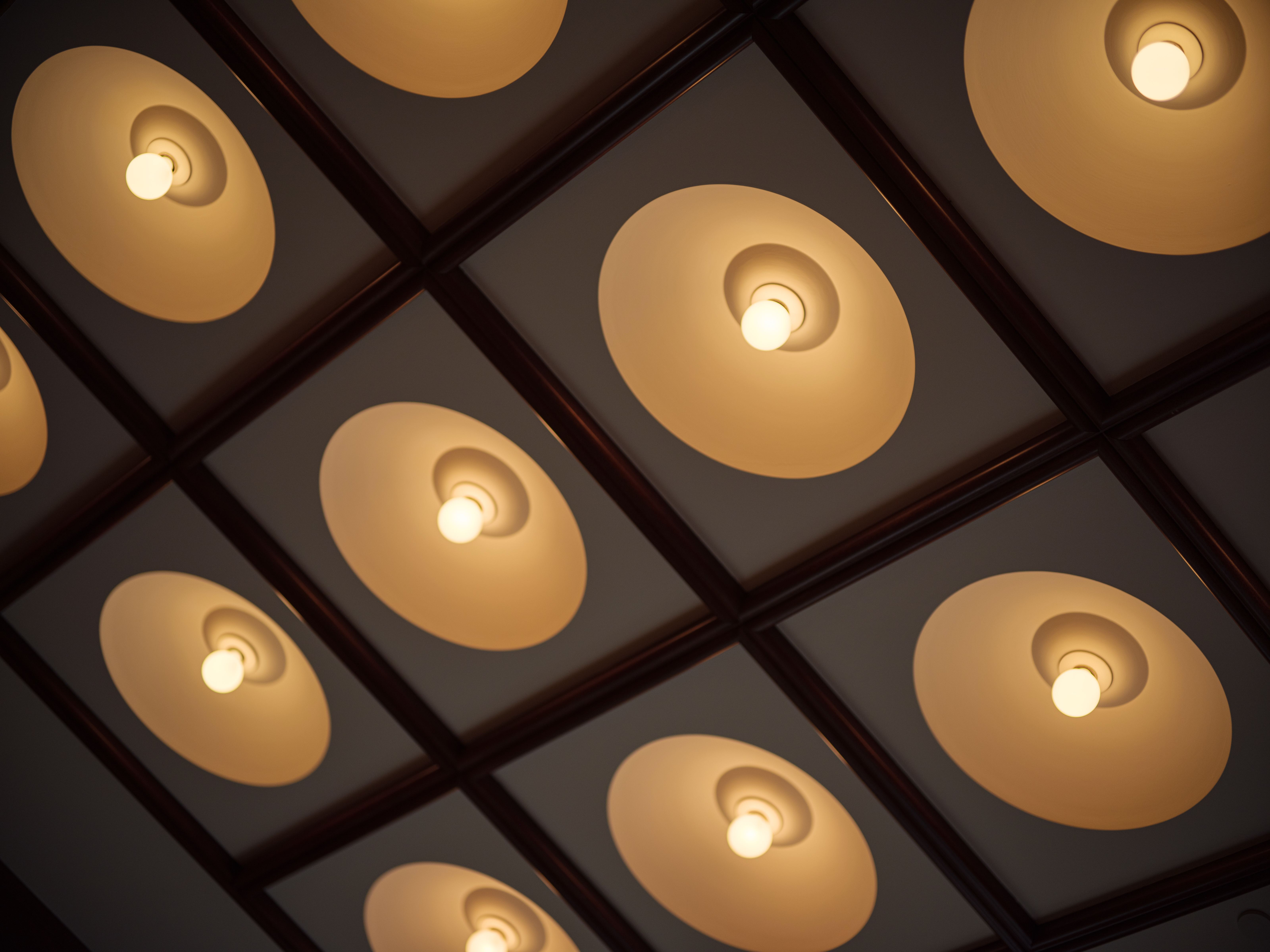
This year’s annual Looking at Architecture exhibition will focus on the lighting fixtures in the museum’s interior design, which fuses an Art Deco sensibility with the advanced craftsmanship of traditional Japanese artisans. The new wing will also display lighting fixtures that recall the design and decoration of the main building, including lamps designed during the Art Nouveau through Art Deco periods.
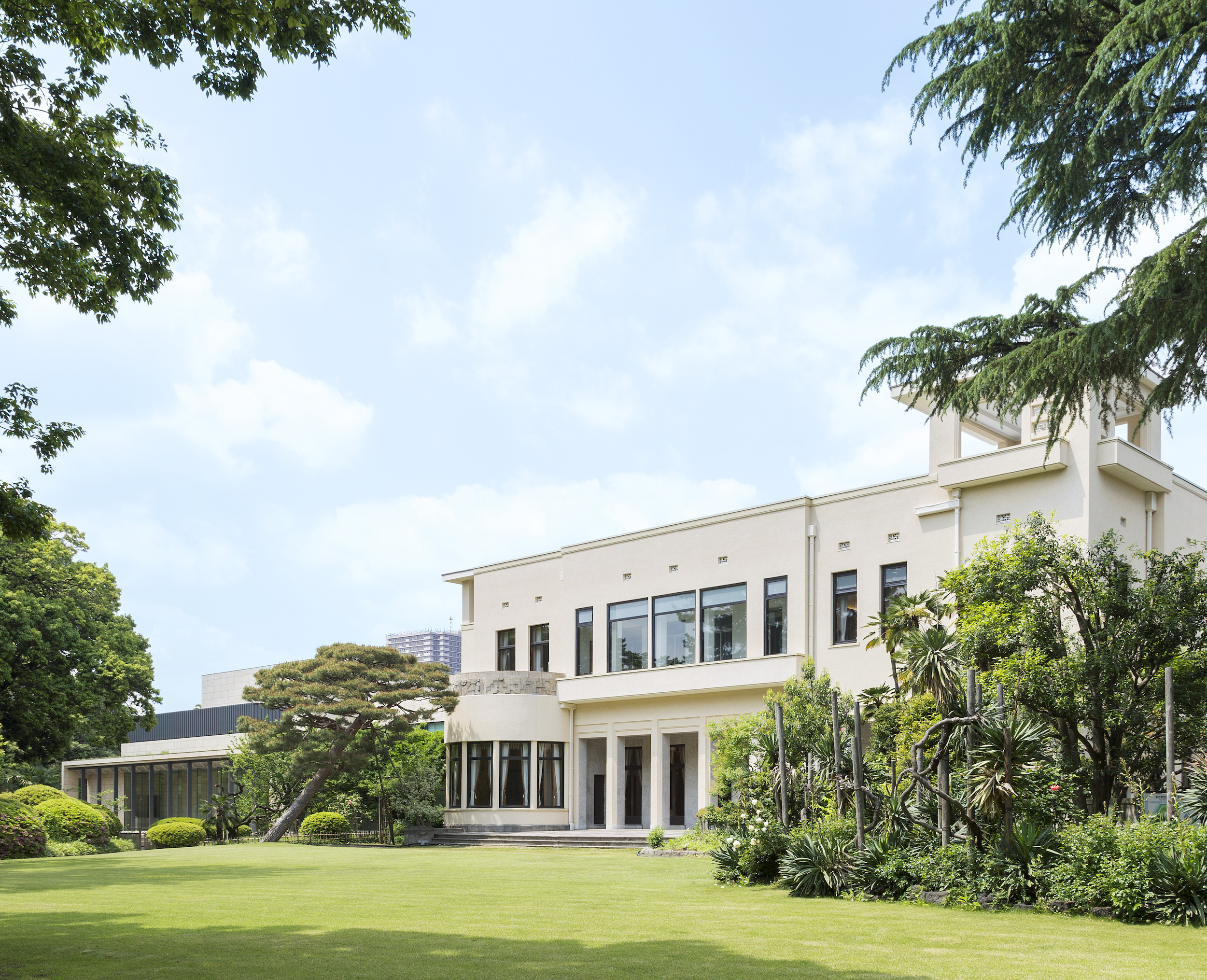
The Tokyo Metropolitan Teien Art Museum occupies Prince Asaka’s former residence, an Art Deco building with surrounding gardens constructed in 1933. Designed by key figures of the movement like Henri Rapin and demonstrating the highest level of Japanese craftsmanship, the museum hosts a selection of artworks in rooms that are themselves works of art. The exhibition program brings historical and contemporary artists, architects, and designers into conversation with these surroundings. Visitors can also explore the gardens, which have remained unchanged since their completion.
The museum was established in 1983 and added an annex in 2014 designed in collaboration with Hiroshi Sugimoto. The residence was designated an Important Cultural Property by the Japanese Government the following year.
Dining options on-site.
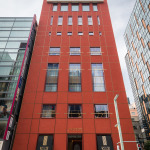
SHISEIDO GALLERY
- B12
- Ginza
- B12
- Ginza
SHIORI WATANABE
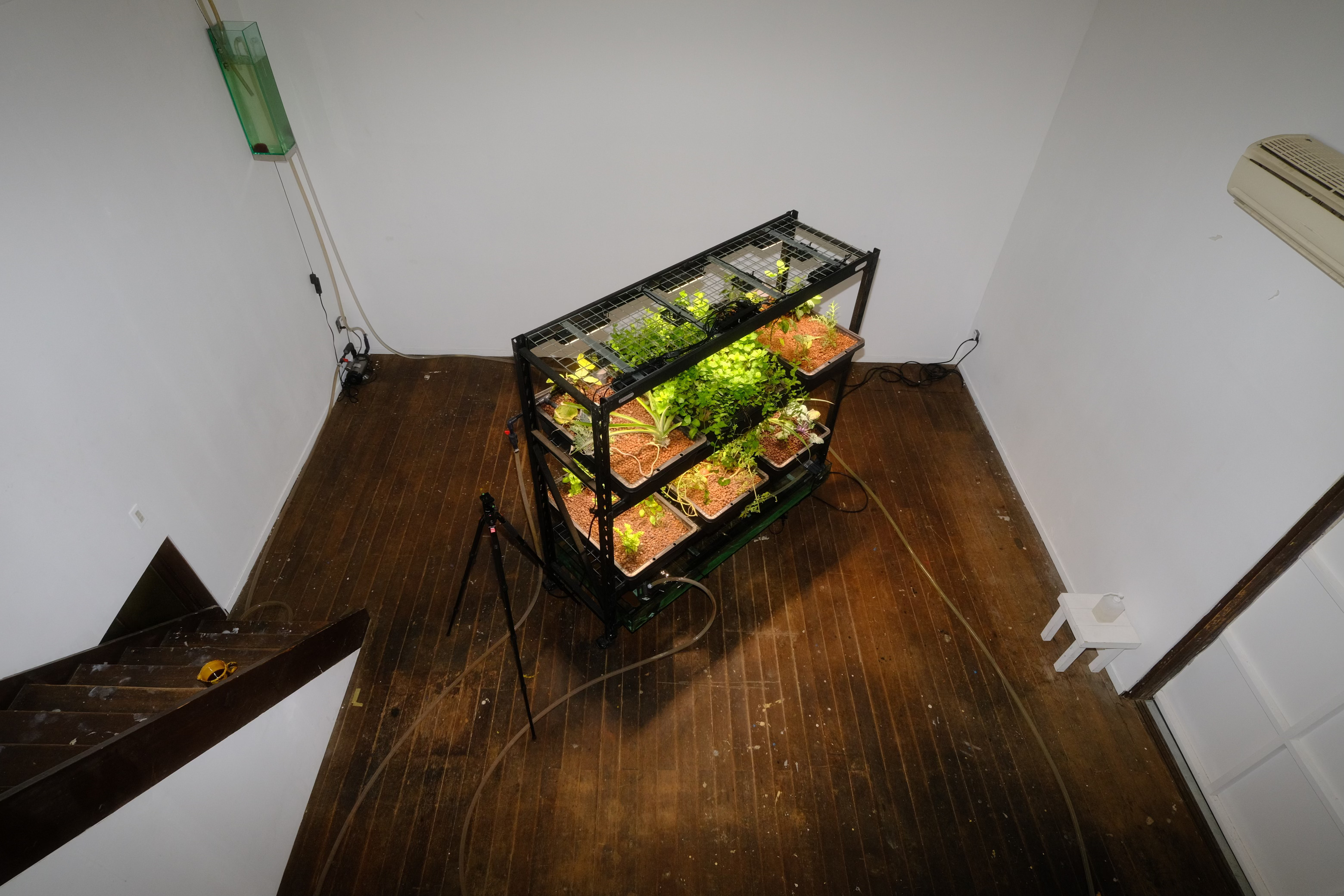
Shiseido Gallery is pleased to present a solo exhibition by Shiori Watanabe, an emerging artist whose enigmatic, scattered installations of tanks and planters, connected by circulating water systems and filled with plants, fish, and bacteria, have been attracting increasing attention. Often installed in abandoned domestic spaces, the artist’s meditations on the dynamics of local ecosystems and the relationships between nature and humans offer clues to how we might live in the future. This exhibition will feature a new installation that extends throughout the entire gallery space.
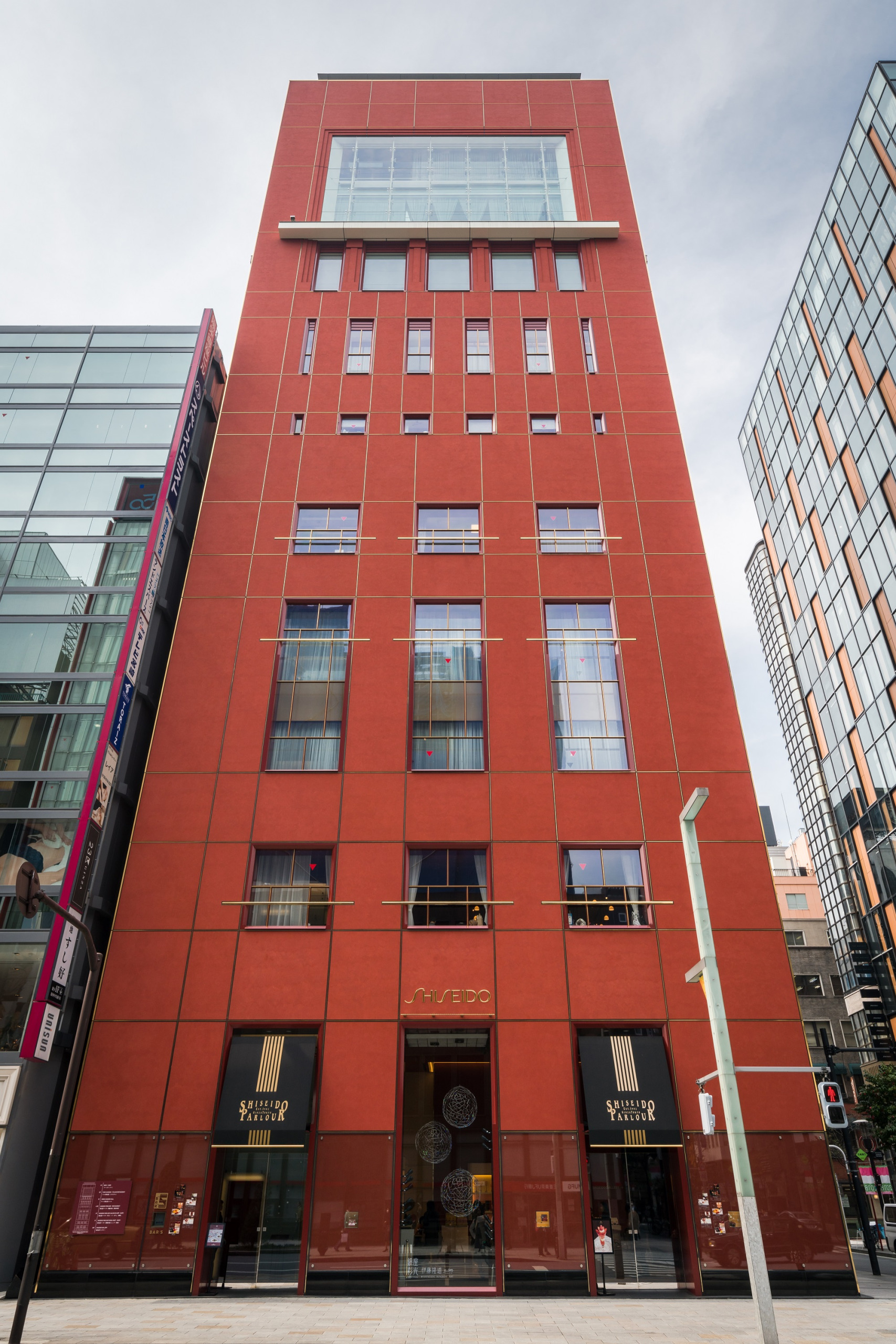
Since opening its doors in 1919, Shiseido Gallery has been one of Japan’s most vanguard art spaces, continually dedicated to the ideal of “discovering and creating new values.” The gallery has held over 3,100 exhibitions, many serving as the public debuts of artists who would later make major contributions to the development of art in Japan. The program ranges from group shows, such as the Tsubaki-kai series of collaborative exhibitions, to ambitious solo projects by leading artists including Ishiuchi Miyako, Kimsooja, and Ming Wong. The gallery has occupied the basement level of the Tokyo Ginza Shiseido Building since 2001. Invited artists frequently respond to the expressive possibilities of this space, distinguished by its five-meter-high ceiling and a mezzanine that provides an expansive view of each exhibition.
Dining options on-site.
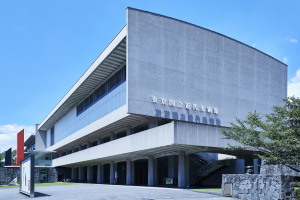
NATIONAL MUSEUM OF MODERN ART, TOKYO
- A1
- B2
- Takebashi
- A1
- B2
- Takebashi
MODERN IMAGES OF ANCIENT CLAY FIGURES
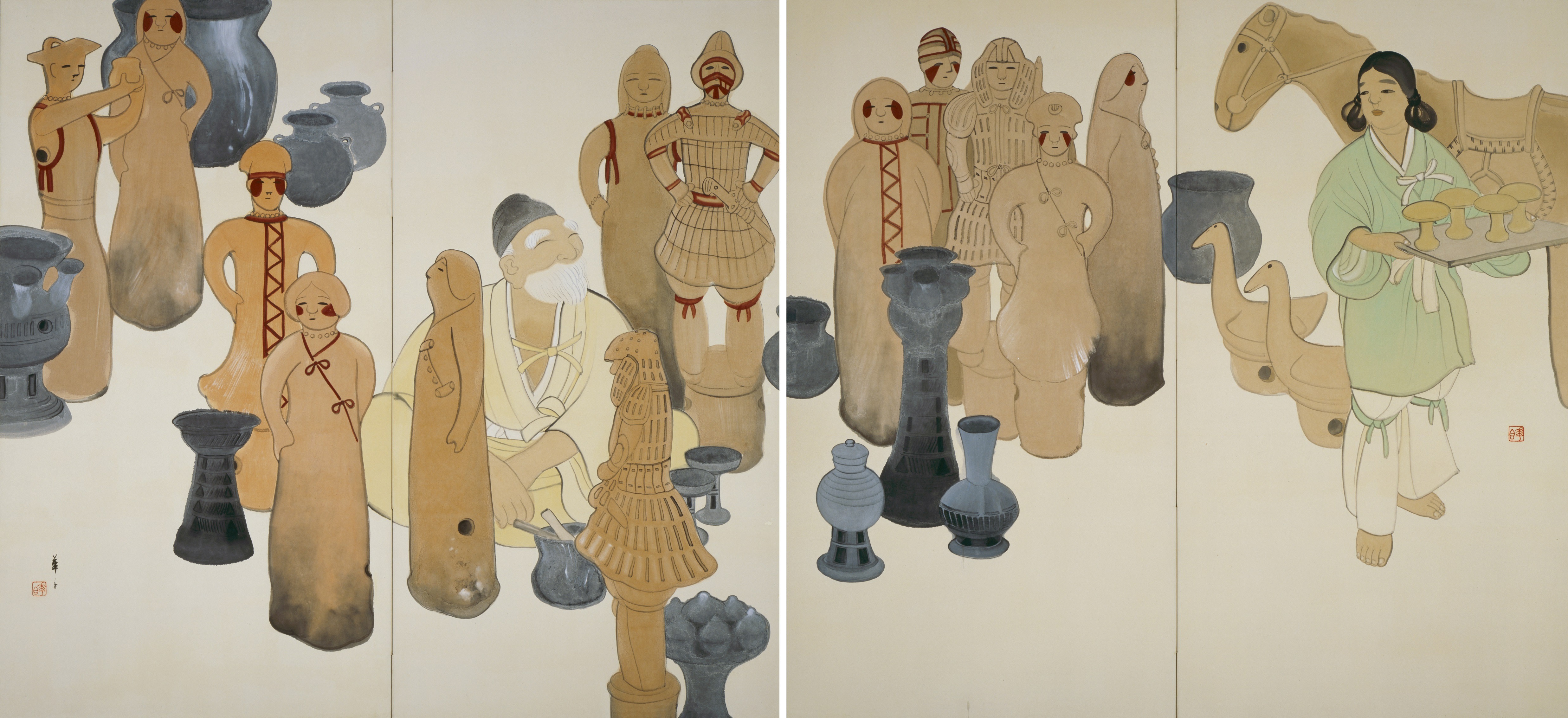
Haniwa—terracotta clay figures that were buried with the dead as ritual funerary objects in ancient Japan—and dogu clay figures of humans and animals have long been important sources of inspiration for Japanese artists and designers. Stories about how modern Japanese artists and designers such as Isamu Noguchi and Taro Okamoto “rediscovered” the aesthetic values of these excavated objects, which had previously been treated solely as archaeological artifacts, have become integral to recent Japanese art and design histories. Focusing primarily on the art historical context, this exhibition genealogically traces the shifts in the reception and interpretation of haniwa, dogu, and Jomon pottery from the Meiji period (1868–1912) to the contemporary era.
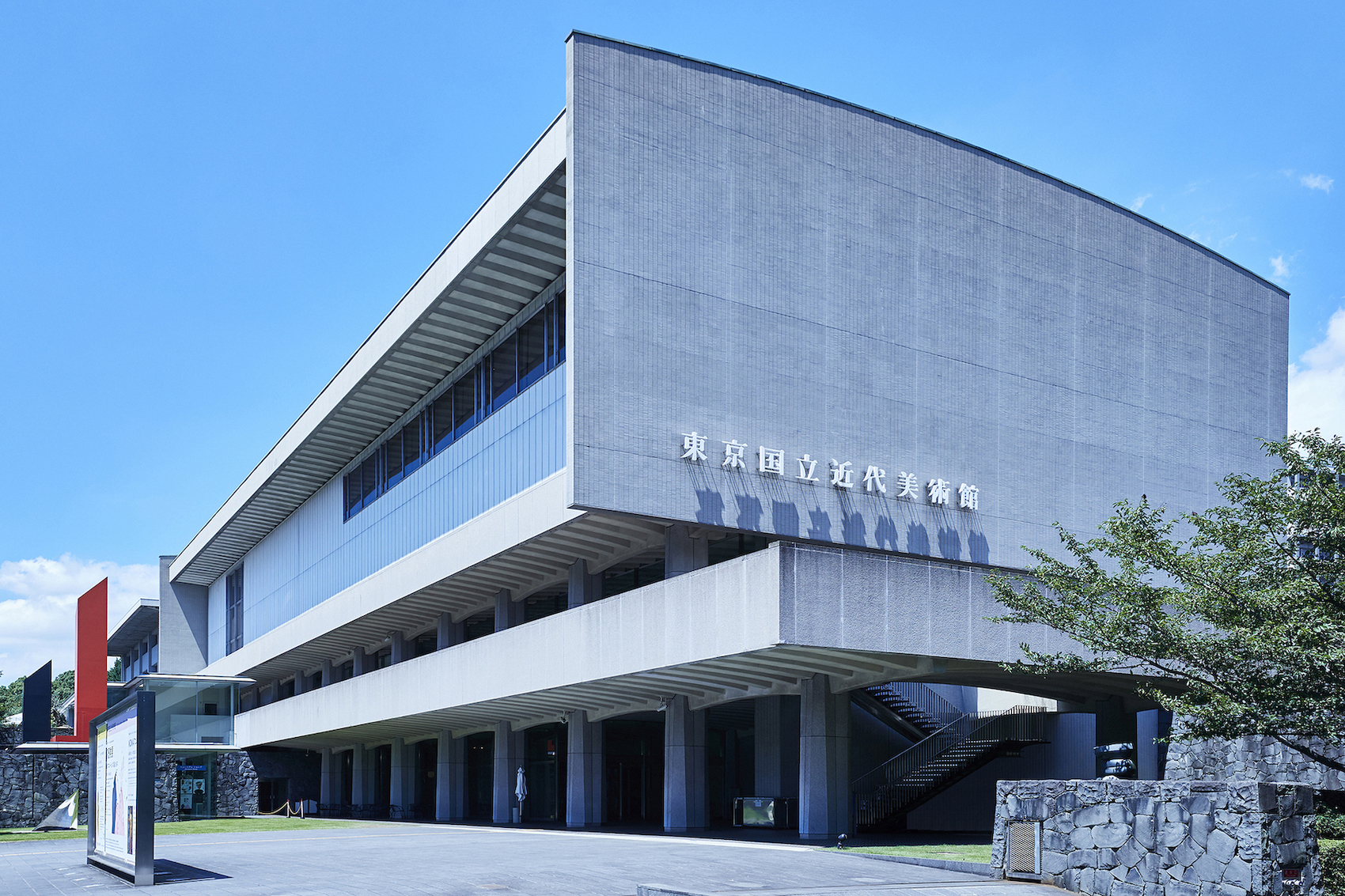
The National Museum of Modern Art, Tokyo, is Japan’s first national art museum, founded in 1952. MOMAT’s collection of more than 13,000 artworks, dating from the end of the 19th century to the present, provides an authoritative overview of the development of modern and contemporary art in Japan and beyond. Highlights include important works by early modernist painter Ryusei Kishida, formative works by On Kawara and Yayoi Kusama, and new media art by contemporary artists Koki Tanaka and Chikako Yamashiro. International movements, from Minimalism and Land art to feminist video, are also represented in the collection.
From its inception MOMAT has been the site of historic exhibitions, such as 1953’s “Abstraction and Surrealism,” which highlighted Japanese practitioners of nonfigurative painting, and “August 1970: Aspects of New Japanese Art,” which helped define the emerging Mono-ha art movement. The museum now features an annual program of substantive solo and thematic exhibitions. Recent shows include a survey of the 20th-century Mingei movement and a retrospective of multimedia artist Shinro Ohtake.
Dining options on-site.
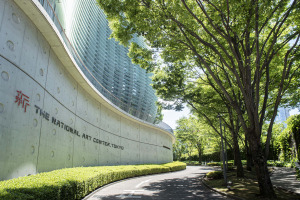
NATIONAL ART CENTER, TOKYO
- D10
- Roppongi
- D10
- Roppongi
KEIICHI TANAAMI: ADVENTURES IN MEMORY
EI ARAKAWA-NASH: PAINTINGS ARE POPSTARS
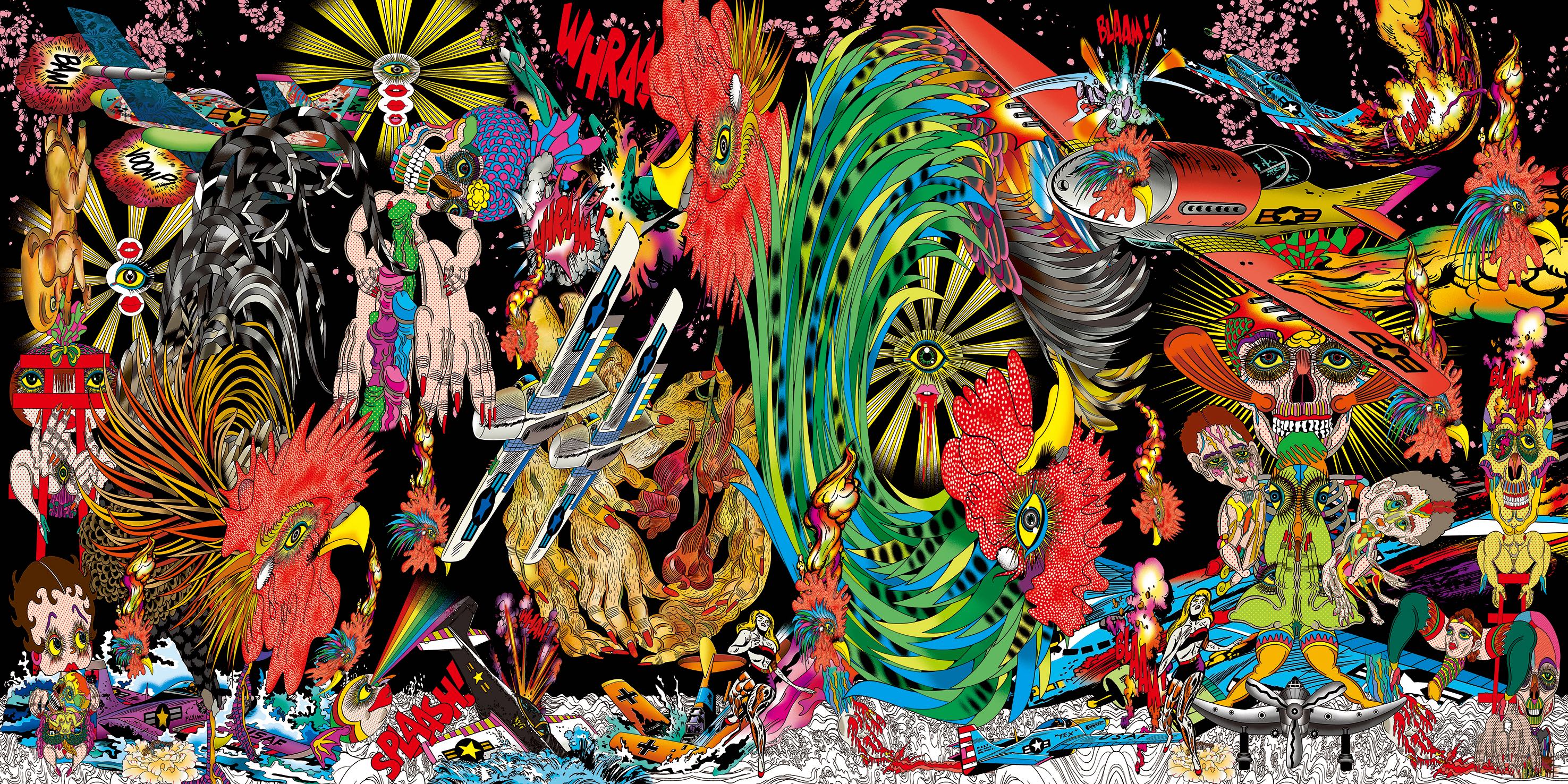
The National Art Center, Tokyo, is presenting an exciting double bill of exhibitions.
“Keiichi Tanaami: Adventures in Memory” is the first large-scale retrospective of the eponymous Japanese Pop artist, who has enjoyed a resurgence of critical interest in recent years. After starting his career in the late 1950s as a graphic designer for magazines and advertisements, Tanaami became a prolific producer of paintings, collages, sculptures, animations, and experimental videos. This exhibition showcases more than six decades of his work.
Concurrently, the NACT will host its first ever solo exhibition of a performance artist, “Ei Arakawa-Nash: Paintings Are Popstars.” The exhibition will feature new collaborative performances and installations by Arakawa-Nash based on paintings by other artists—from contemporary peers to historic figures—that will also be on view. The show will open with a participatory work, Mega Please Draw Freely, which invites visitors to draw freely on the floor of the NACT and was first unveiled at the Tate Modern in London in 2021. In addition to holding live performances throughout the run of the exhibition, Arakawa-Nash will also lead his own exhibition tours.
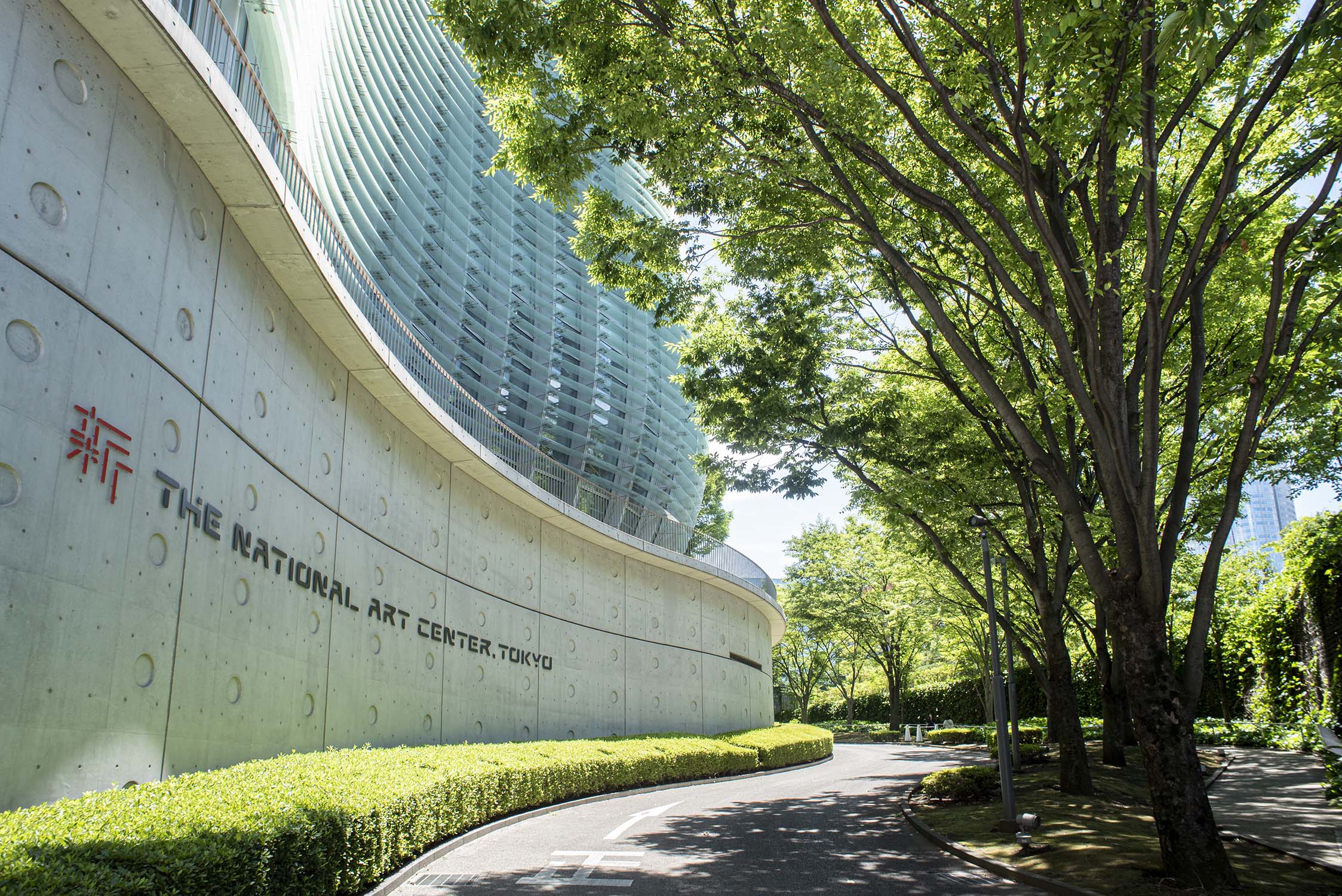
The National Art Center, Tokyo, was founded in 2007. Conceived of as an art center without a permanent collection, the NACT provides a place where the public can experience different forms of artistic expression, make new discoveries, and share diverse values. In addition to hosting a broad spectrum of art in one of Japan’s largest exhibition spaces, the NACT collects, provides, and makes publicly accessible art-related information and resources and also runs educational and public programs.
Architect Kisho Kurokawa envisioned the NACT as an art center surrounded by green spaces. His design for the building is notable for its beautiful facade: an undulating glass wall punctuated by a conical main entrance. Visitors can enjoy views of the changing seasons through the glass.
Dining options on-site.
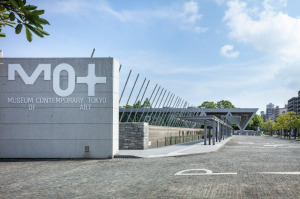
MUSEUM OF CONTEMPORARY ART TOKYO
- B6
- Kiyosumi-Shirakawa
- B6
- Kiyosumi-Shirakawa
A PERSONAL VIEW OF JAPANESE CONTEMPORARY ART: TAKAHASHI RYUTARO COLLECTION
Containing more than 3,000 works, Ryutaro Takahashi’s collection of postwar and contemporary Japanese art is one of the world’s most important of its kind. Takahashi, a successful psychiatrist who was active in the radical student movement of the 1960s, started collecting art in the mid-1990s when he took an interest in artists whose practices both responded to and resisted the sense of stagnation in Japanese society following the collapse of the bubble economy at the beginning of the decade. His collection includes works by Yayoi Kusama, Takashi Murakami, and Yoshitomo Nara, now all global stars. Takahashi’s collection practice eventually led him to identify neoteny (the adult retention of juvenile characteristics) as a theme that distinguishes much of recent Japanese art. This exhibition will juxtapose the personal perspective of an individual collector with the larger art historical currents that MOT has been tracing through its programming.
Also on view will be a solo exhibition of Yoshiaki Kaihatsu, known for his interest in the theme of communication in everyday life and social occurrences, and the museum’s collection display, which features a focus on female artists and a section devoted to the theme of the “gaze” alongside recent acquisitions.

The Museum of Contemporary Art Tokyo opened in 1995 as the city’s first institution for the research, collection, preservation, and display of contemporary art. The museum’s exhibition program features cutting-edge expressions by Japanese and international artists working in contemporary art, fashion, architecture, design, and other fields. Displayed across two floors of dedicated gallery space, the MOT collection comprises over 5,700 works of art, including major works of 20th-century Japanese art, with a focus on the art of the postwar years. The museum has the largest specialty library of its kind in Japan, housing over 270,000 books, catalogues, and periodicals on modern and contemporary art. Its education program engages people of all ages through an active calendar of guided tours, lectures, and workshops.
Dining options on-site.
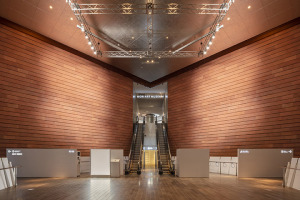
MORI ART MUSEUM
- D11
- Roppongi
- D11
- Roppongi
LOUISE BOURGEOIS: I HAVE BEEN TO HELL AND BACK. AND LET ME TELL YOU, IT WAS WONDERFUL
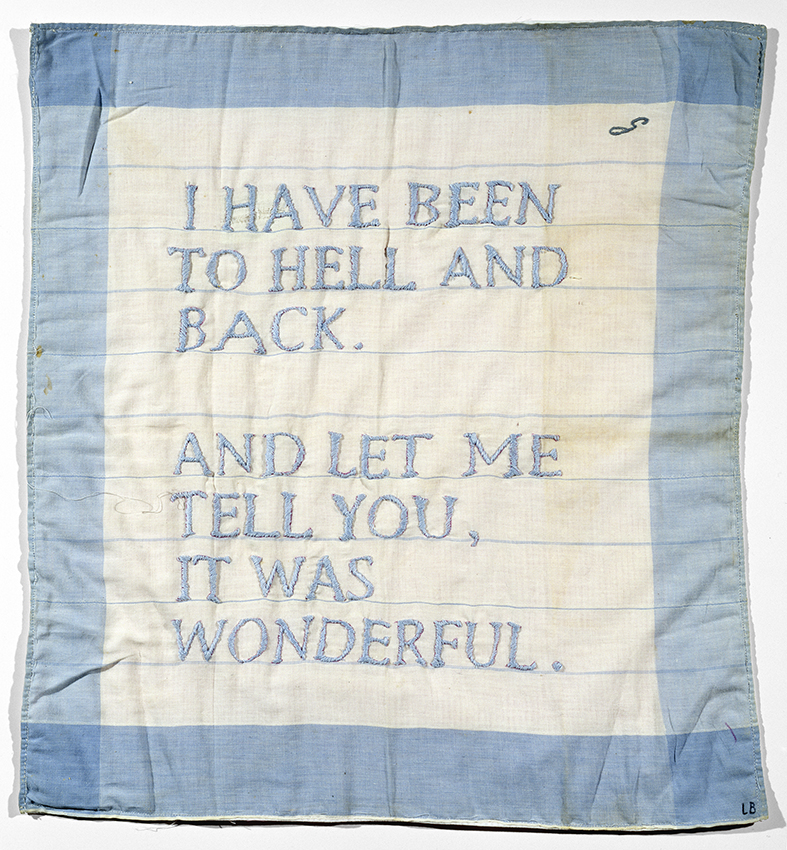
Over a career that spanned seven decades, Louise Bourgeois developed a practice that translated various emotional and psychological states through a range of materials, marrying psychological intensity with high formal invention. The first major museum exhibition of her work in Japan in 27 years, this show will present works from across the artist’s career, including prints, drawings, sculptures, installations, and writings. Among these, several pieces employ the recurring motif of the spider to explore themes of maternal love, healing, and memory, while a group of early paintings dating from 1938–48 will be shown in Asia for the first time. These early works, the importance of which have only recently begun to be recognized, establish the formal vocabulary and thematic concerns that Bourgeois would go on to devote much of her career to. As Bourgeois said, “art is a guarantee of sanity,” a sentiment that testifies her will to survive while also serving as a vital reference for life in a postpandemic era fraught with geopolitical tensions.
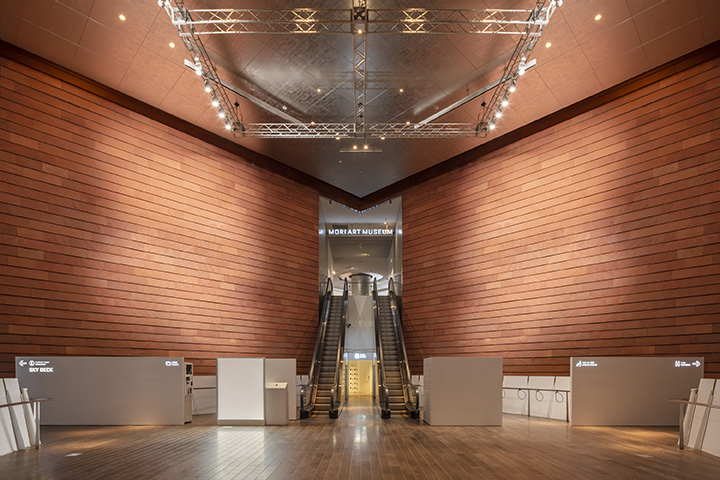
Crowning the Roppongi Hills Mori Tower, the Mori Art Museum is committed to presenting cutting-edge visual arts, architecture, design, and other modes of creative output from around the world. The museum is known for producing groundbreaking monographic exhibitions of important Japanese and international artists, such as Ai Weiwei, Yayoi Kusama, and Takashi Murakami; large-scale thematic surveys covering various topics and geographic regions; and the triennial Roppongi Crossing, which offers an overview of Japanese contemporary art. The museum complements these exhibitions with smaller, more focused programs, such as MAM Collection, which introduces works in the museum’s collection; MAM Screen, which showcases video works; MAM Research, which focuses on exhibiting materials rather than artworks; and MAM Projects, which conducts experimental projects with artists from Japan and beyond.
Pursuing a vision of “Art + Life,” the Mori Art Museum seeks to make contemporary art more accessible to broad audiences. The museum supervises works of public art at Roppongi Hills and Toranomon Hills and organizes art events in collaboration with local communities. The museum is open late six nights a week to enable visitors to enjoy art after work or dinner.
Dining options on-site.
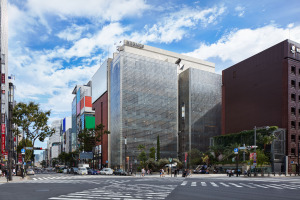
GINZA MAISON HERMÈS
- B11
- Ginza
- B11
- Ginza
REI NAITO: COME AND LIVE—GO AND LIVE
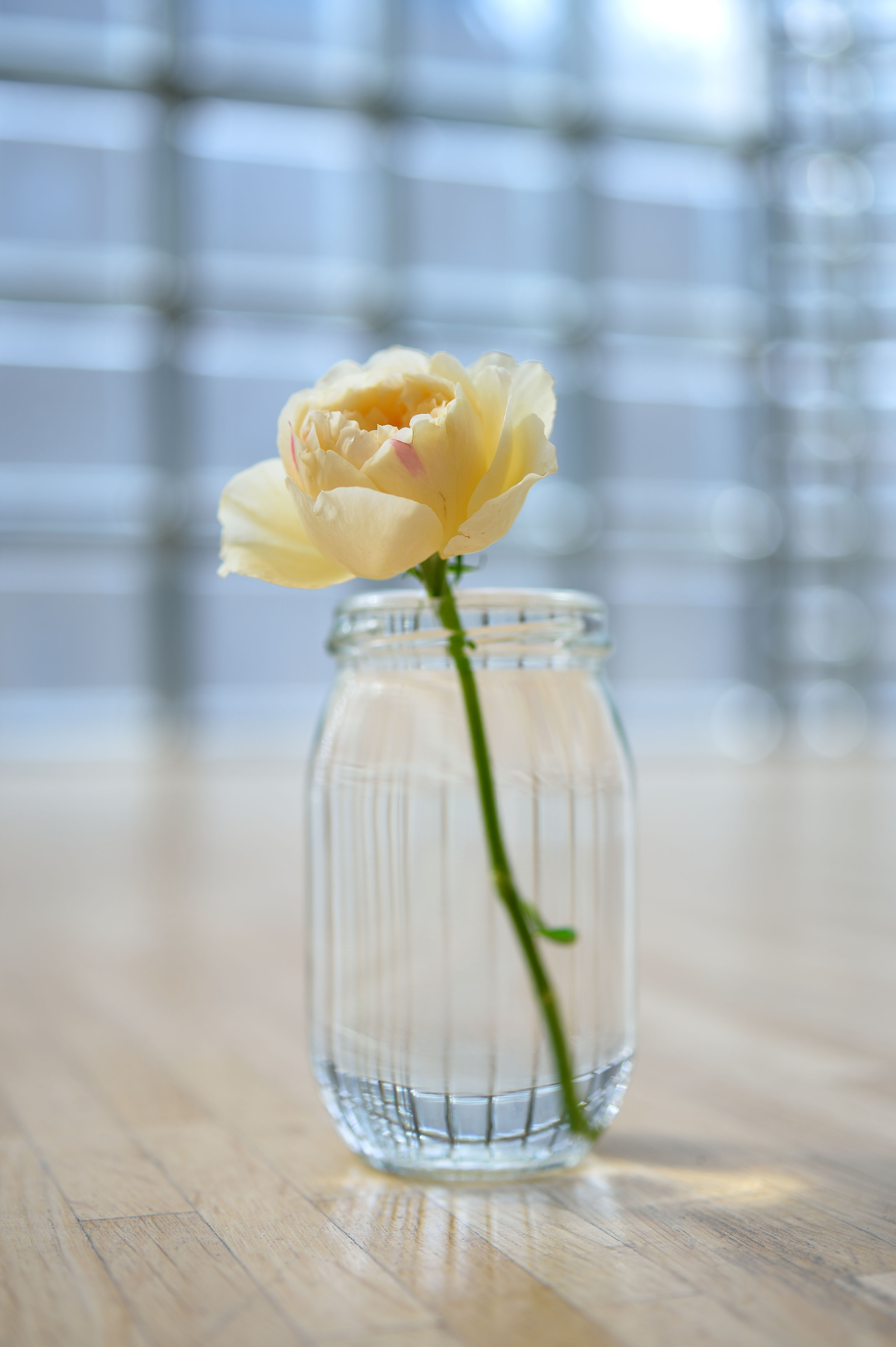
Jointly organized by the Fondation d’entreprise Hermès and the Tokyo National Museum, “Rei Naito: come and live—go and live” is an epic exploration of the themes of transformation and flux and the interactions between humans and nature. Naito is known for her ephemeral installations that strike a fine balance between everyday objects, natural elements, and barely perceptible interactions and phenomena found within our environment. The first part of this exhibition, held at the Tokyo National Museum from June to September this year, was conceived as a dialogue between Naito, the museum’s architectural spaces, and the Jomon-era clay objects in its collection. The second part shifts to the seemingly empty space of Ginza Maison Hermès Le Forum, where the installation will represent the artist’s attempt to find an “immersion of life” in a place filled with natural light filtered through the building’s glass bricks as well as the artificial light and colors of the city outside. The two exhibitions are linked by a series of new paintings and three-dimensional works, including pieces from Naito’s series color beginning/breath that demonstrate the irreversibility of physical time.
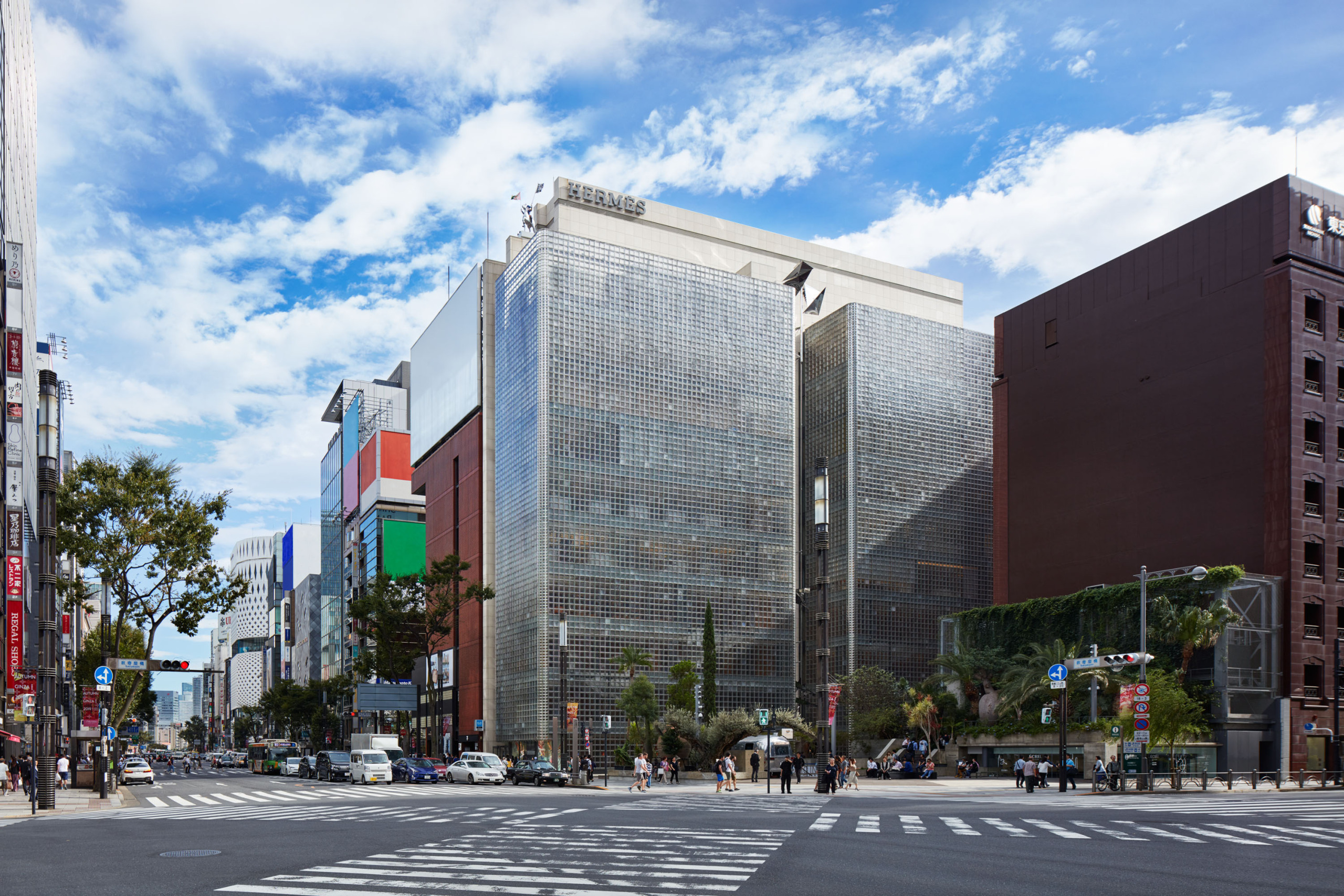
Located on the eighth and ninth floors of the Ginza Maison Hermès building, Le Forum invites Japanese and international artists to create site-specific installations that respond to Renzo Piano’s iconic crystalline architecture. The exhibition program has featured fantastical marble sculptures by Yutaka Sone, an immersive fog installation by Fujiko Nakaya, and a mini retrospective for Argentinean artist Julio Le Parc.
Le Forum is an initiative of the Fondation d’entreprise Hermès. Founded in Paris in 2008, the Fondation is a nonprofit organization that supports projects related to art, the transmission of traditional artisanal techniques, environmental issues, and education.
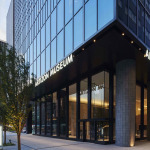
ARTIZON MUSEUM
- B9
- Kyobashi
- B9
- Kyobashi
JAM SESSION: THE ISHIBASHI FOUNDATION COLLECTION X MOHRI YUKO—ON PHYSIS
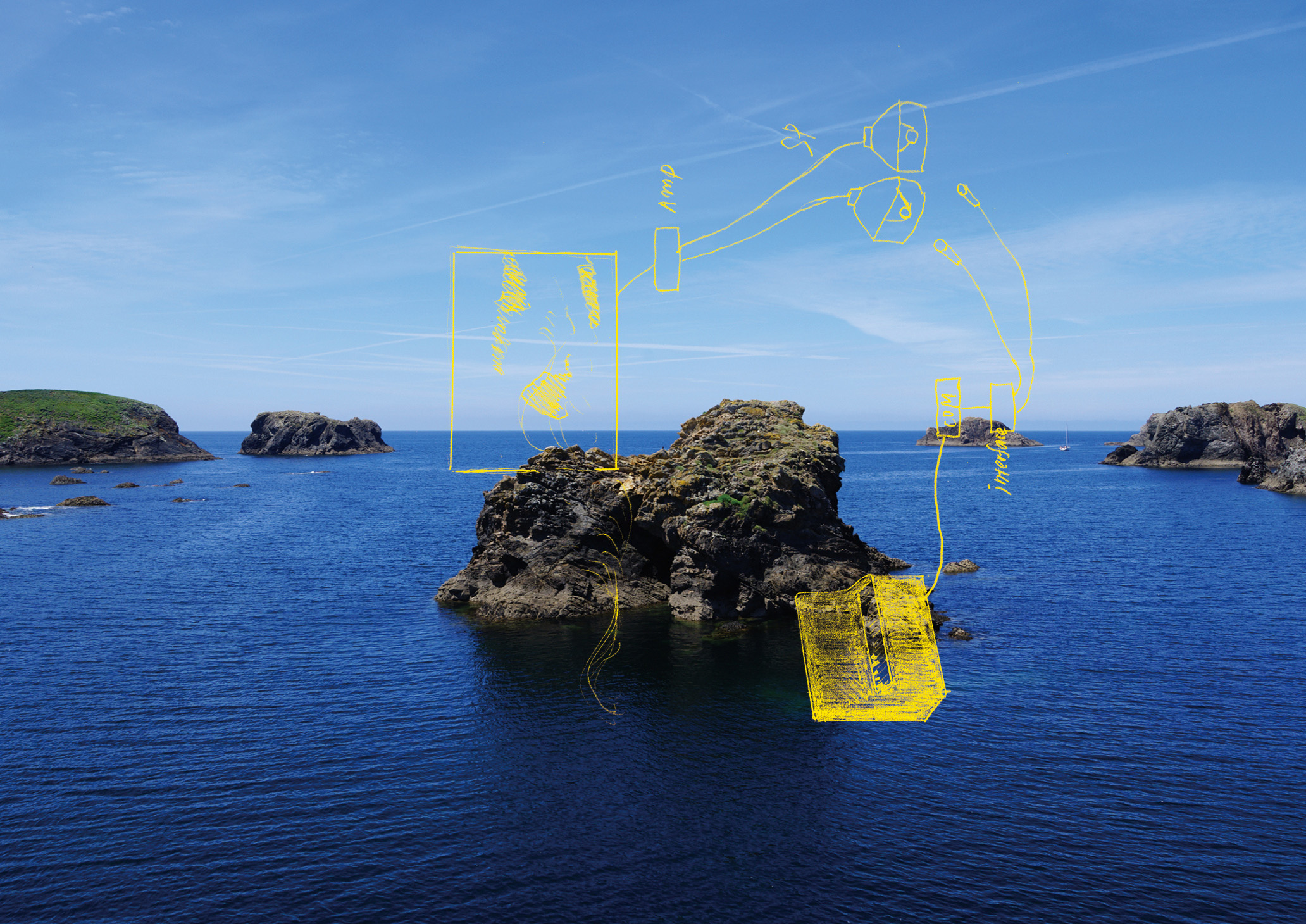
Initiated in 2020, the annual Jam Session project invites leading contemporary artists to produce exhibitions in response to the Ishibashi Foundation Collection. This fifth edition welcomes Yuko Mohri, Japan’s representative at this year’s Venice Biennale. Mohri is known for her kinetic sound installations fashioned from found materials such as plastic sheets, dust, and rotten fruit. Her works visualize and give form to the unseen and constantly shifting elements that make up a particular space, such as magnetic forces, electric currents, air, dust, water, and temperature, opening up new circuits of perception for the audience. Marking Mohri’s first large-scale exhibition in Japan, “On Physis” will present both new and existing works in dialogue with pieces from the Ishibashi Foundation Collection selected by the artist herself. The titular physis, a Greek word usually translated as “nature” or “essence,” references the core problem of early Greek philosophy, which asked: What is the origin or principle of all things?
Also on view at the museum will be “Looking Human: The Figure Painting,” featuring masterpiece portraits by Pierre-Auguste Renoir and André Derain, and “Selections from the Ishibashi Foundation Collection Special Section: Matisse’s Studio.”
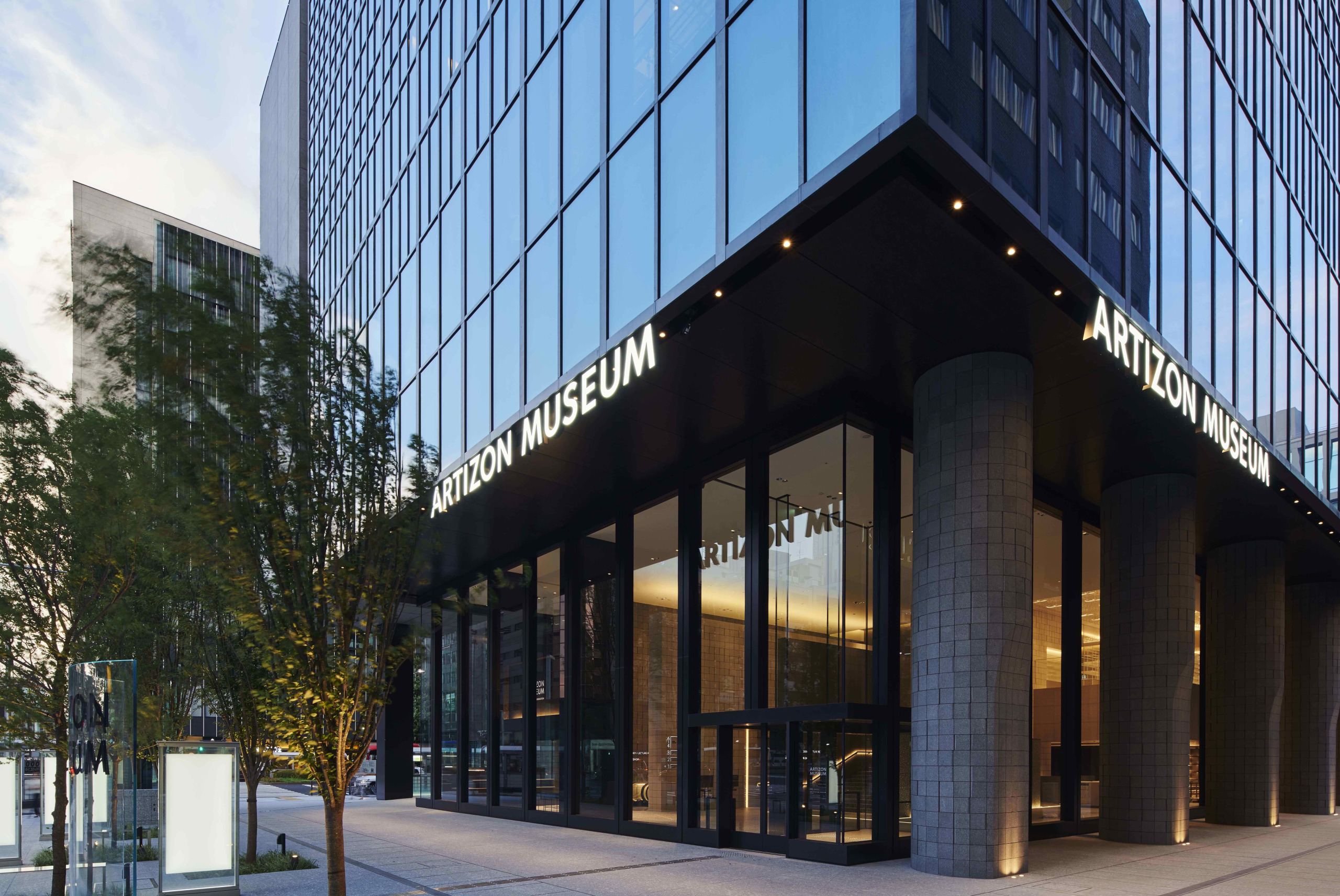
The Artizon Museum offers cutting-edge cultural experiences in the heart of central Tokyo. Originally known as the Bridgestone Museum of Art, the museum was established in 1952 to house the collection of its founder, Shojiro Ishibashi. Now numbering some 3,000 artworks, the encyclopedic collection is grounded in businessman and philanthropist Shojiro Ishibashi’s personal holdings, spanning from Impressionist masterpieces to Japanese Western-style paintings, and from antiquities to contemporary art.
The museum relaunched in 2020 with the opening of new state-of-the-art facilities anchoring the 23-story Museum Tower Kyobashi. The name Artizon, which combines the words “art” and “horizon,” reflects the museum’s mission to transcend generational and geographic boundaries, serve the public interest, and shape the future. This is achieved through a robust program of exhibitions that interweave art histories from different continents and centuries.
Dining available on-site.